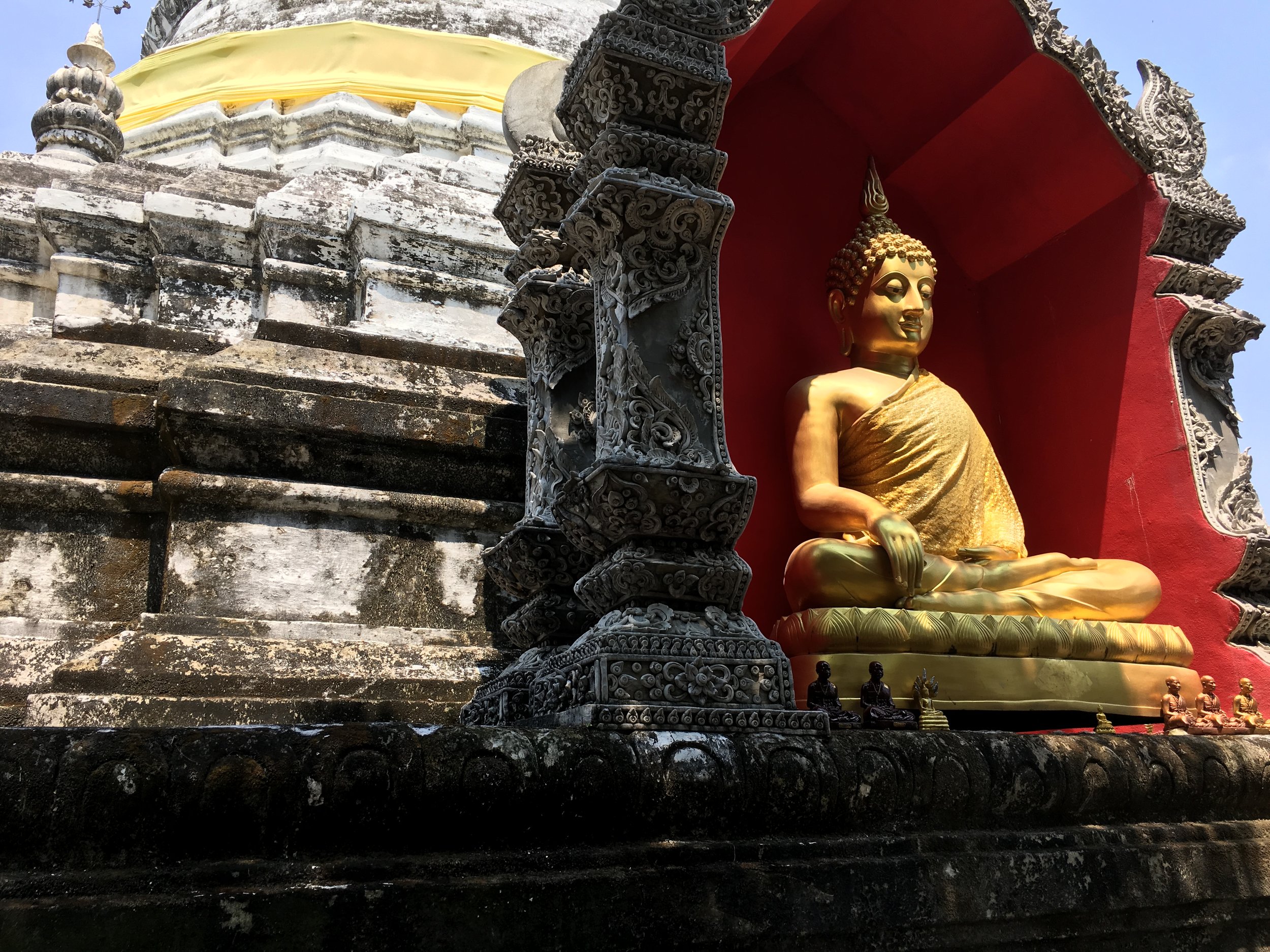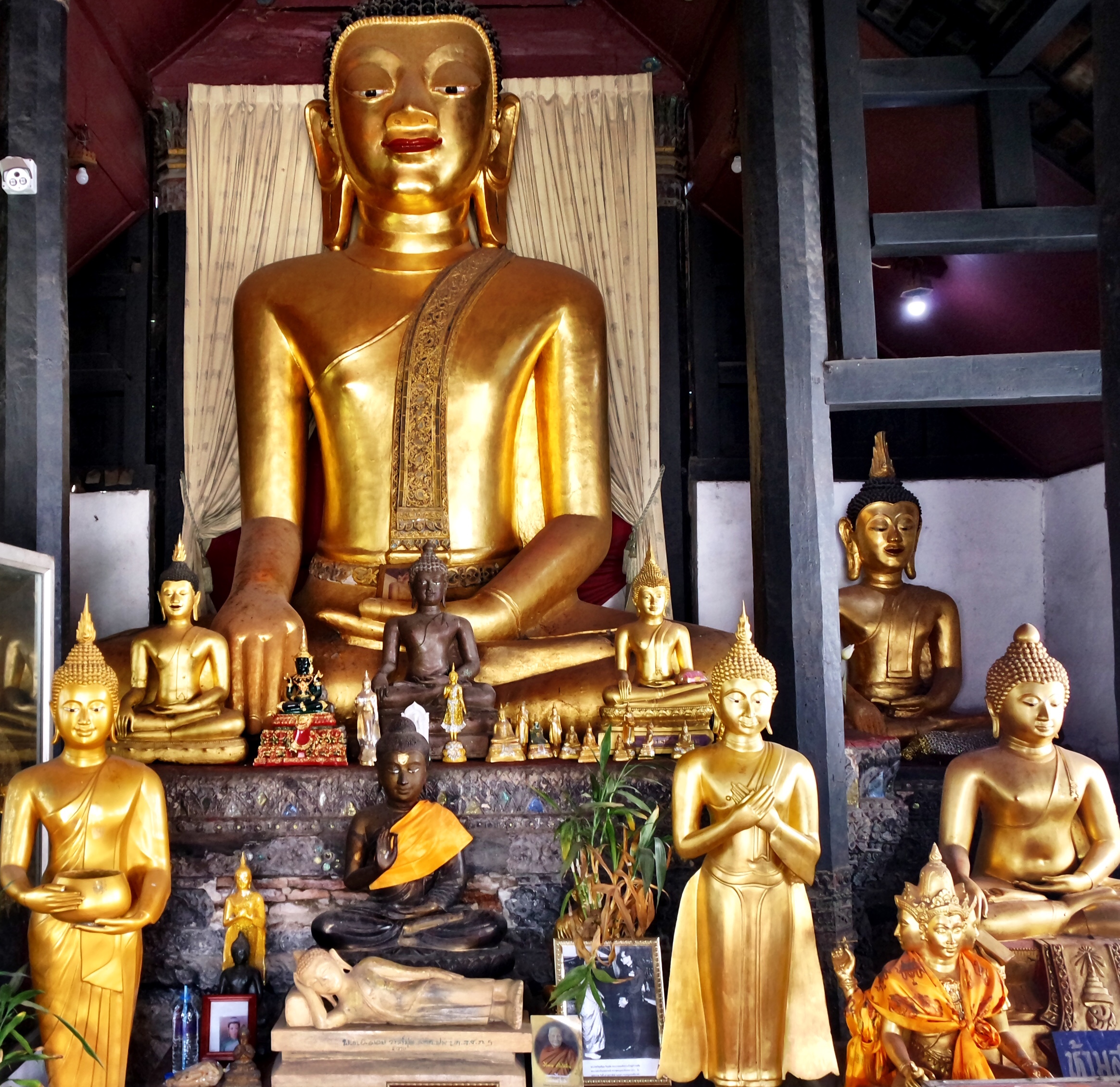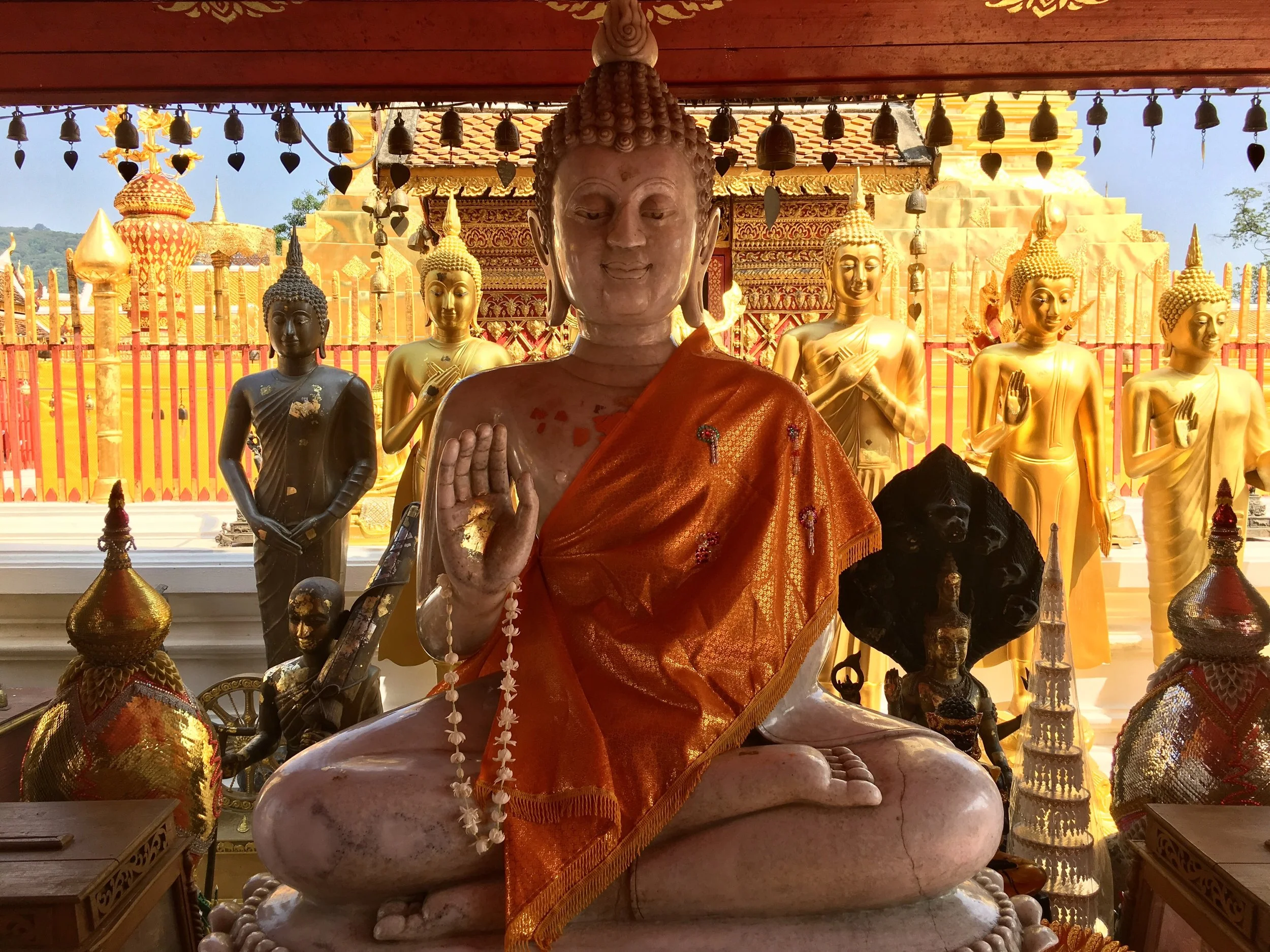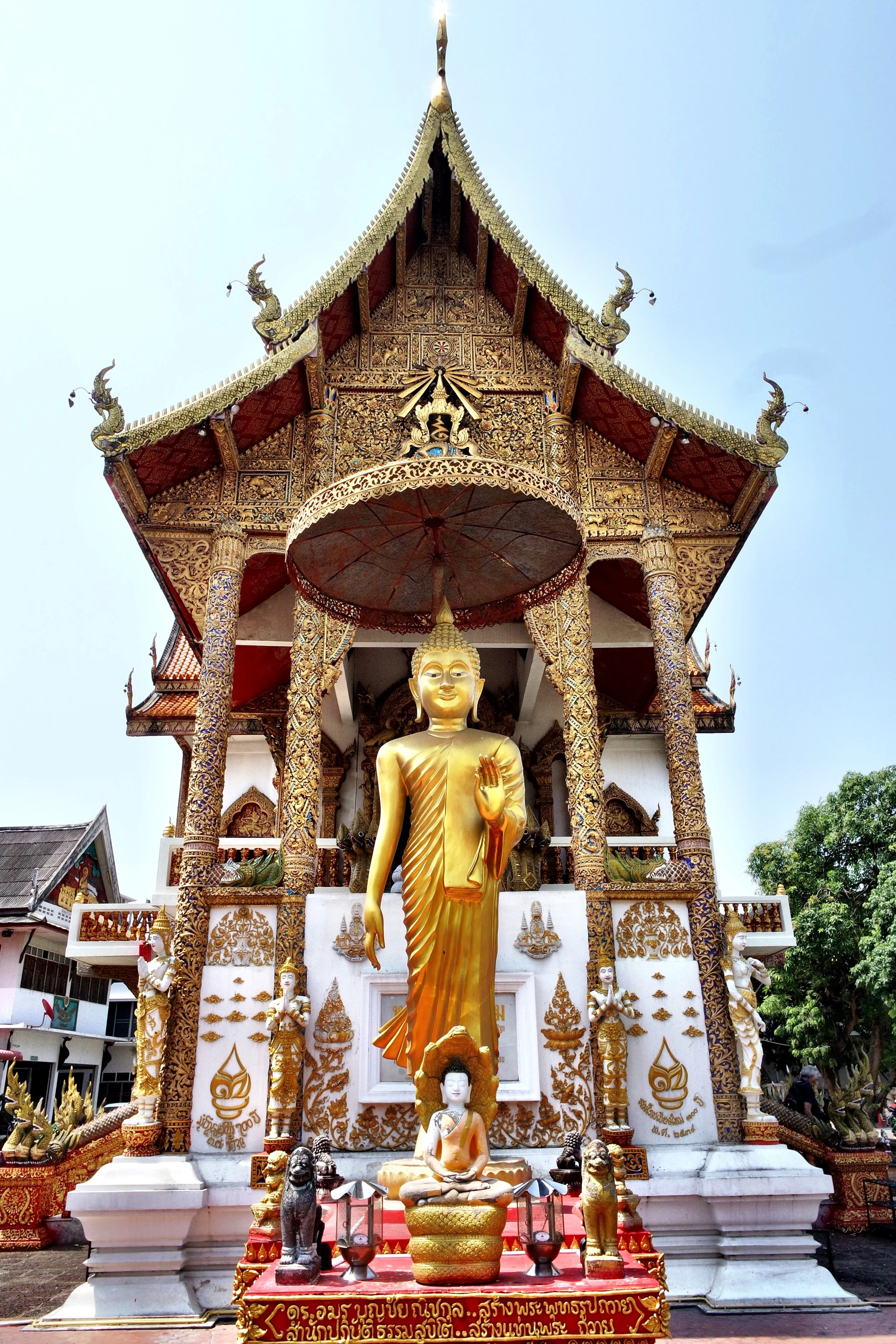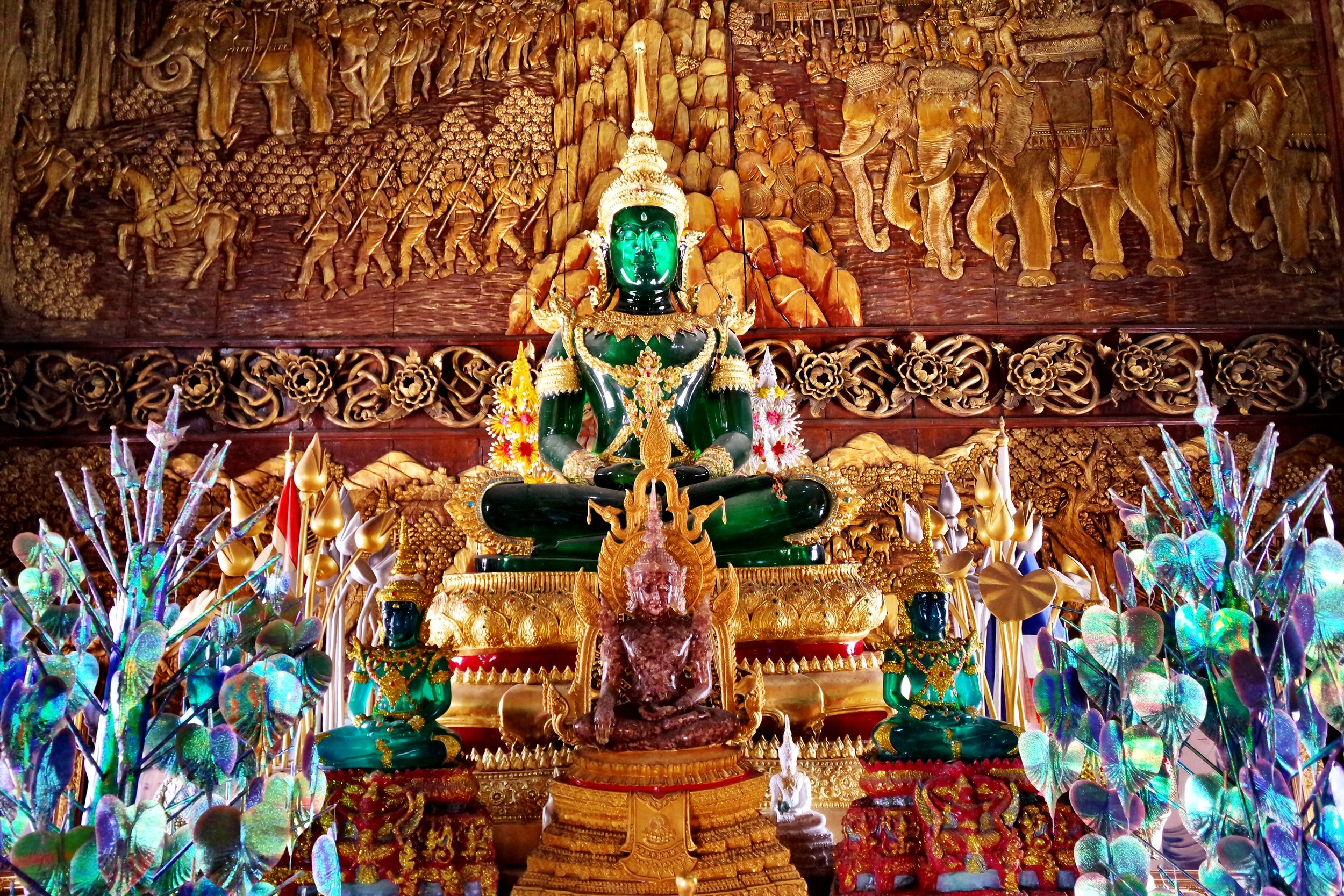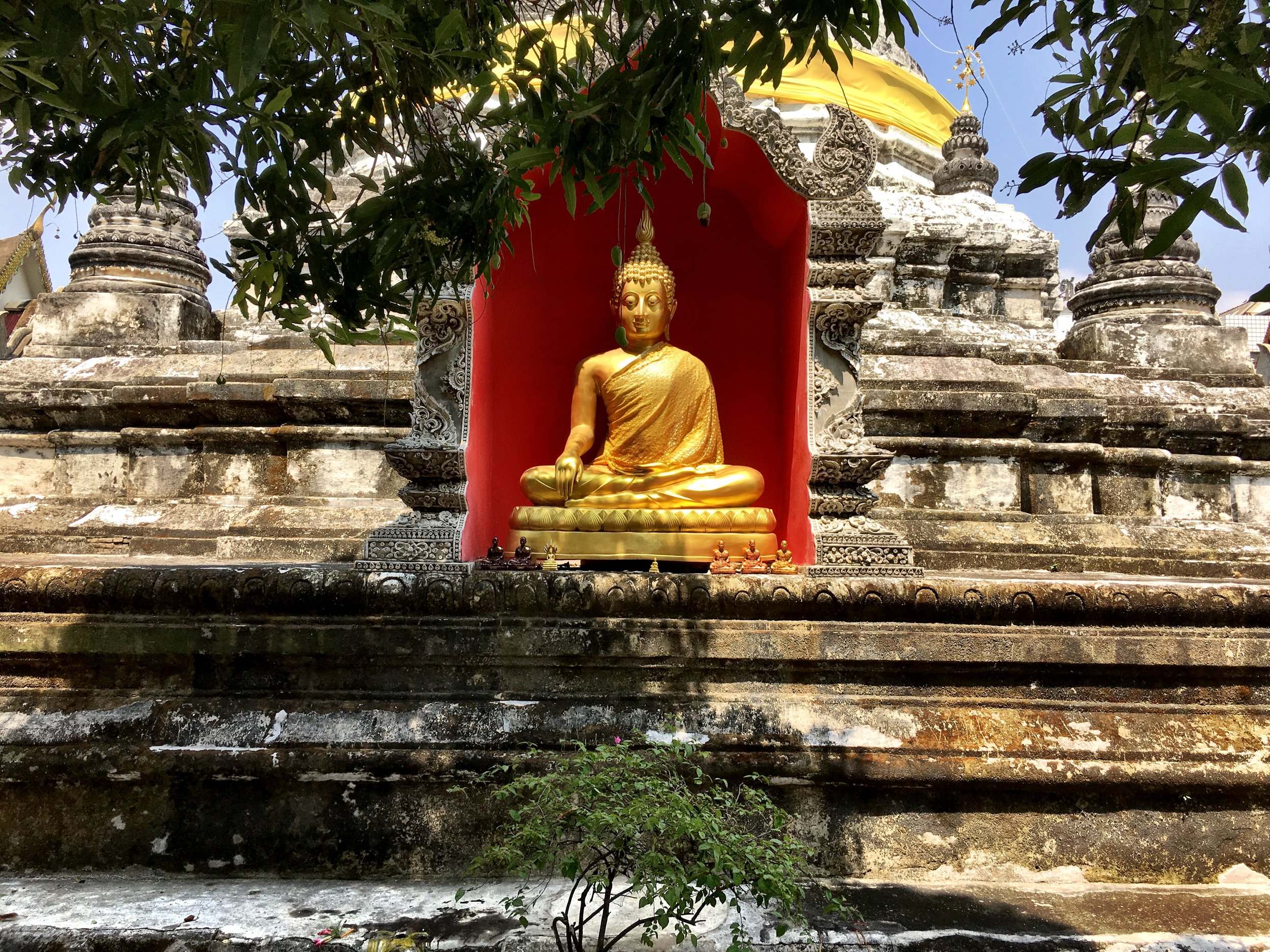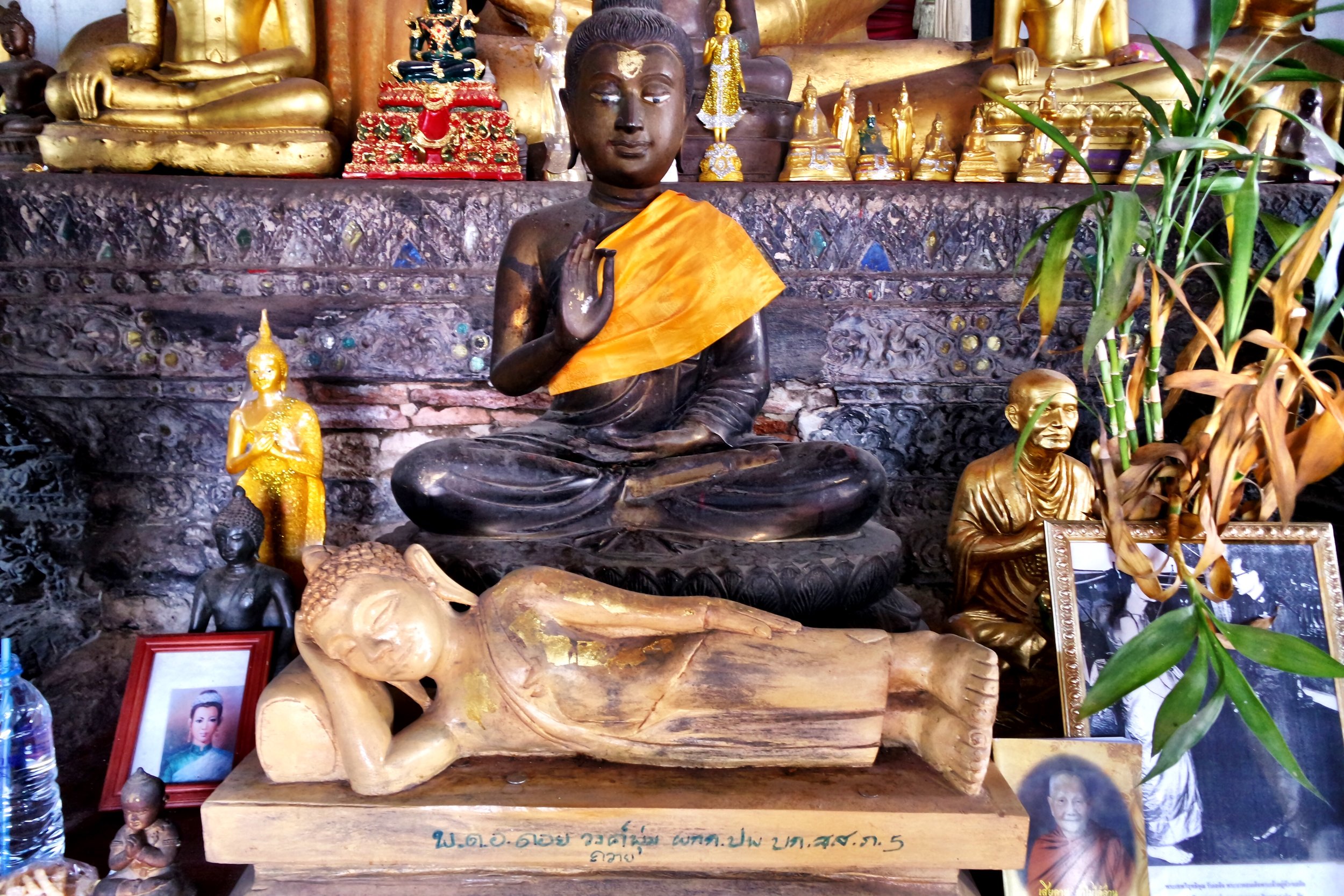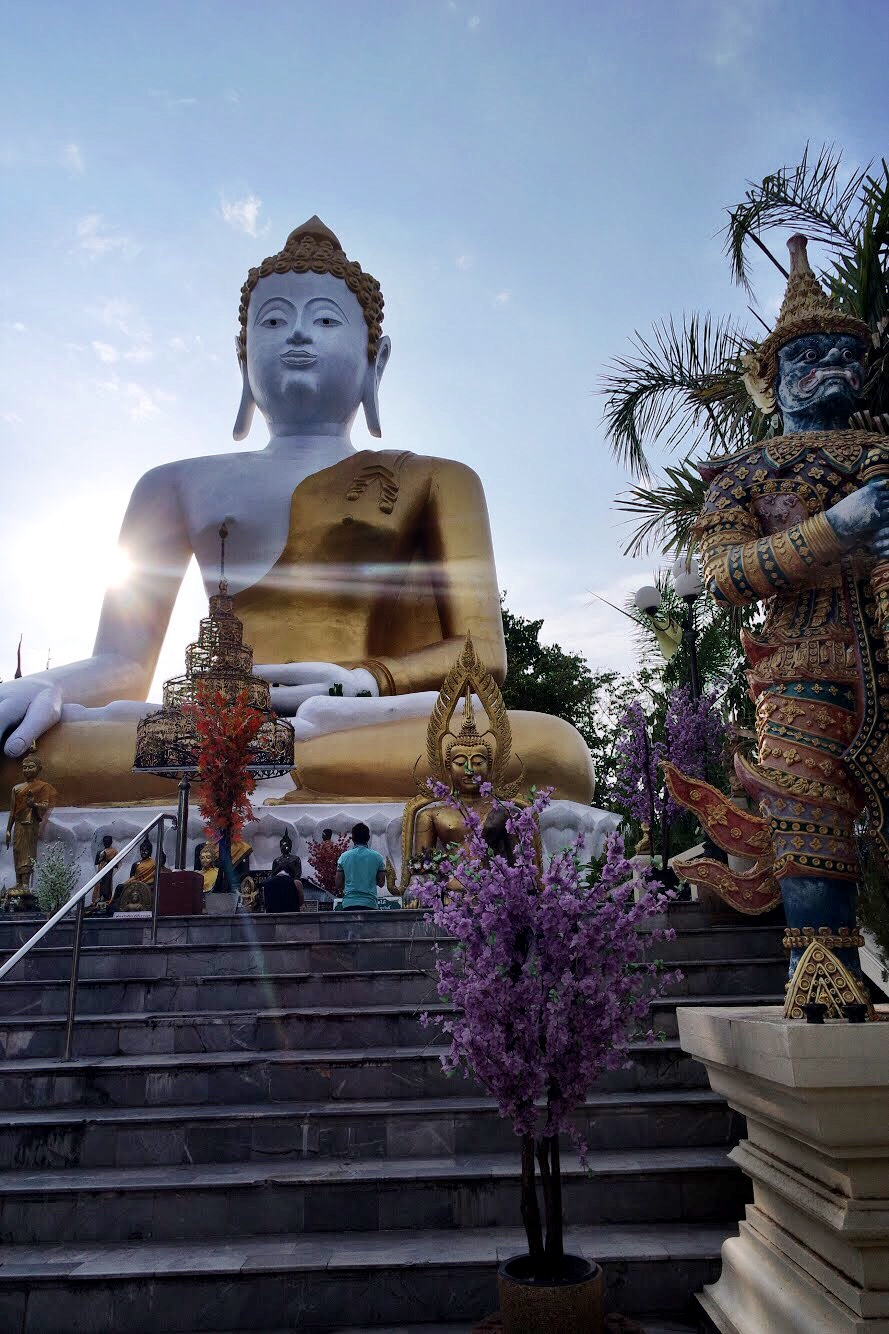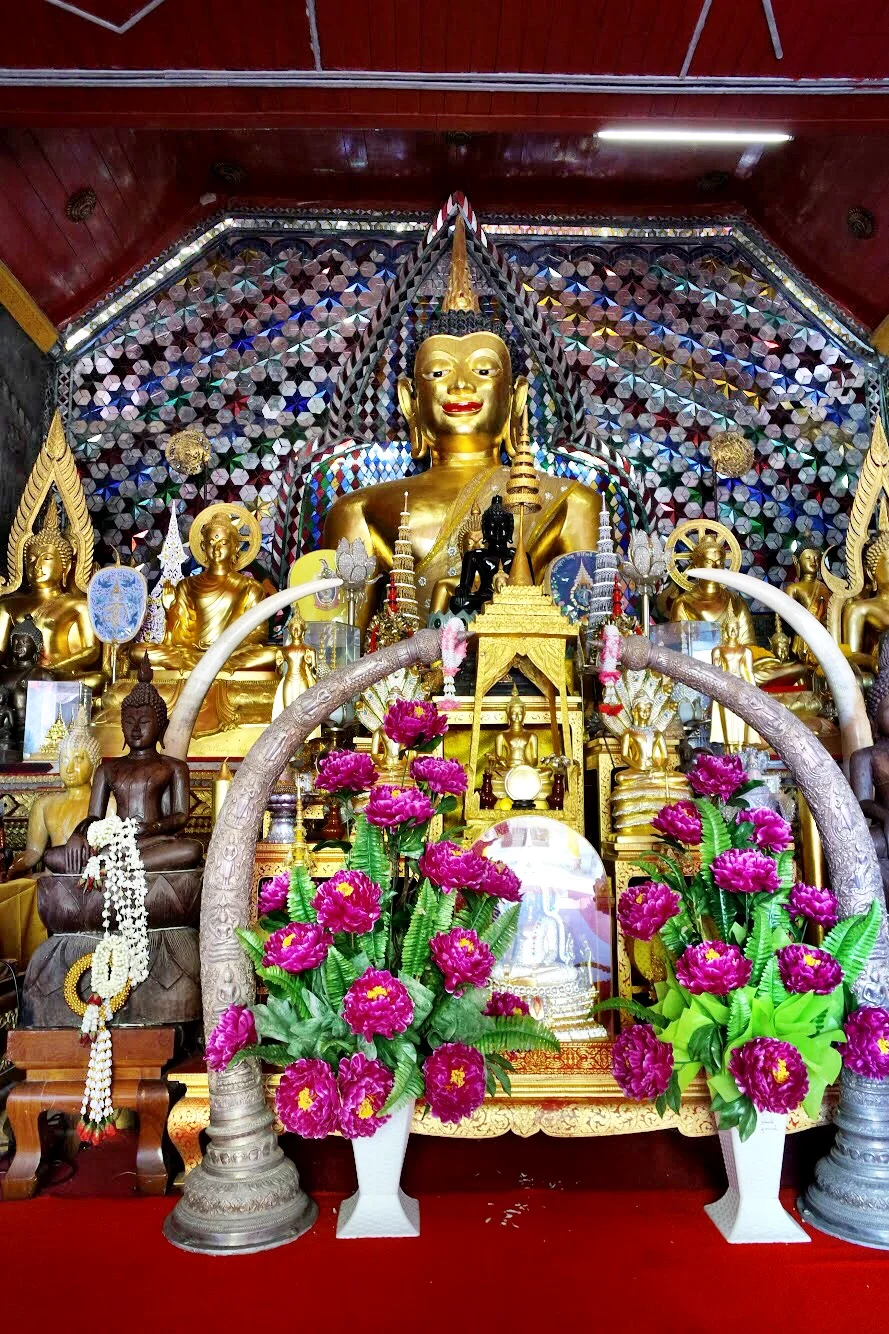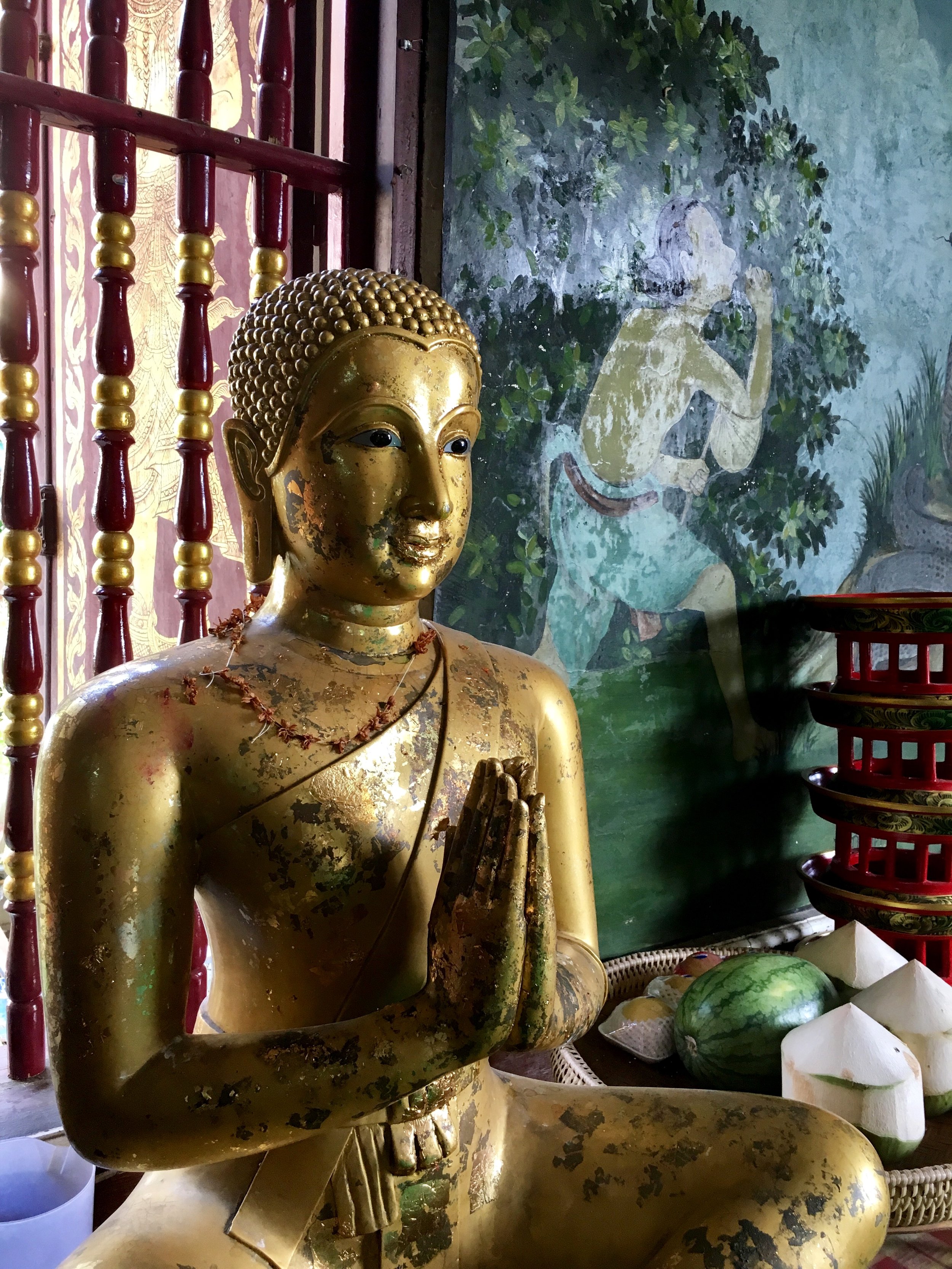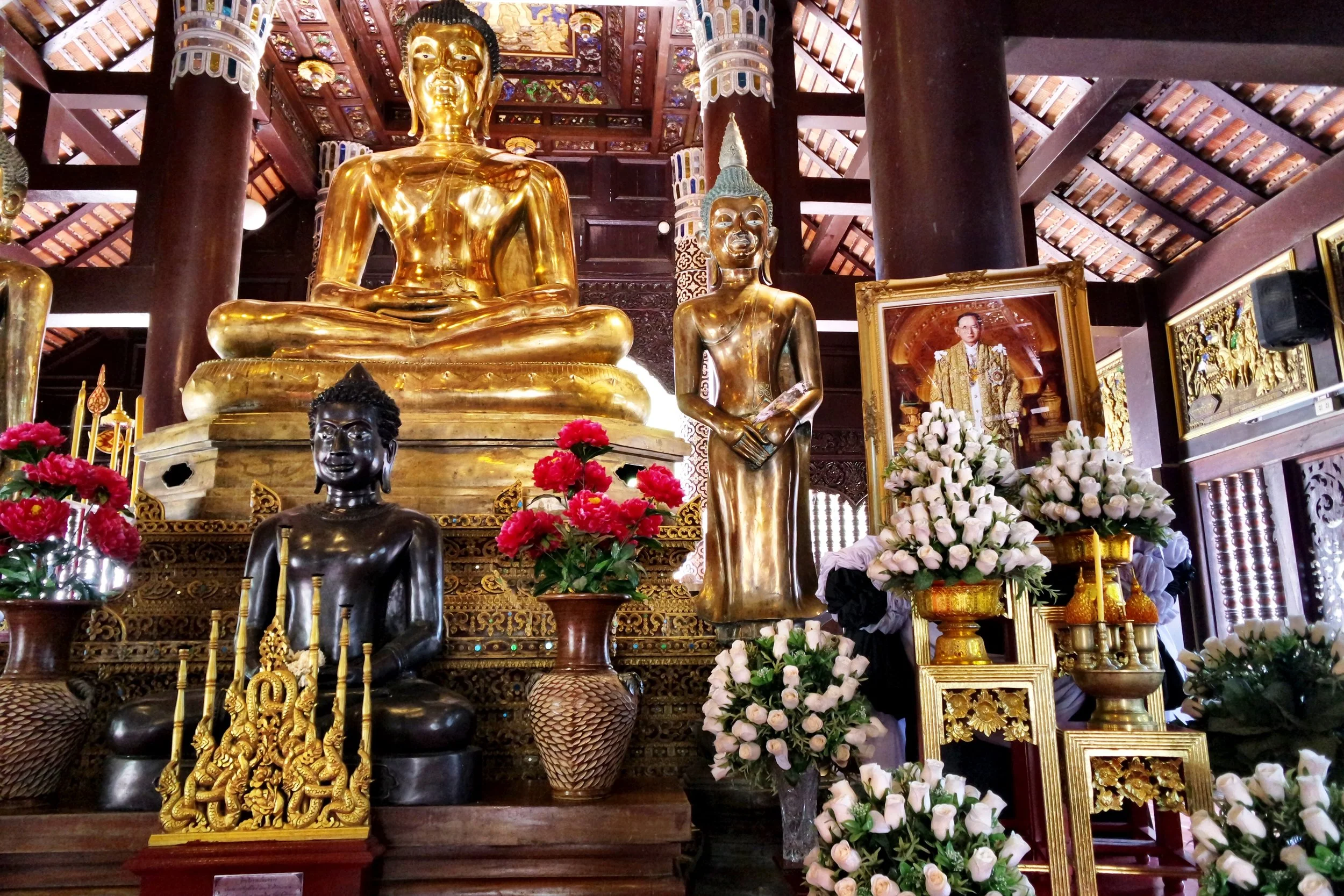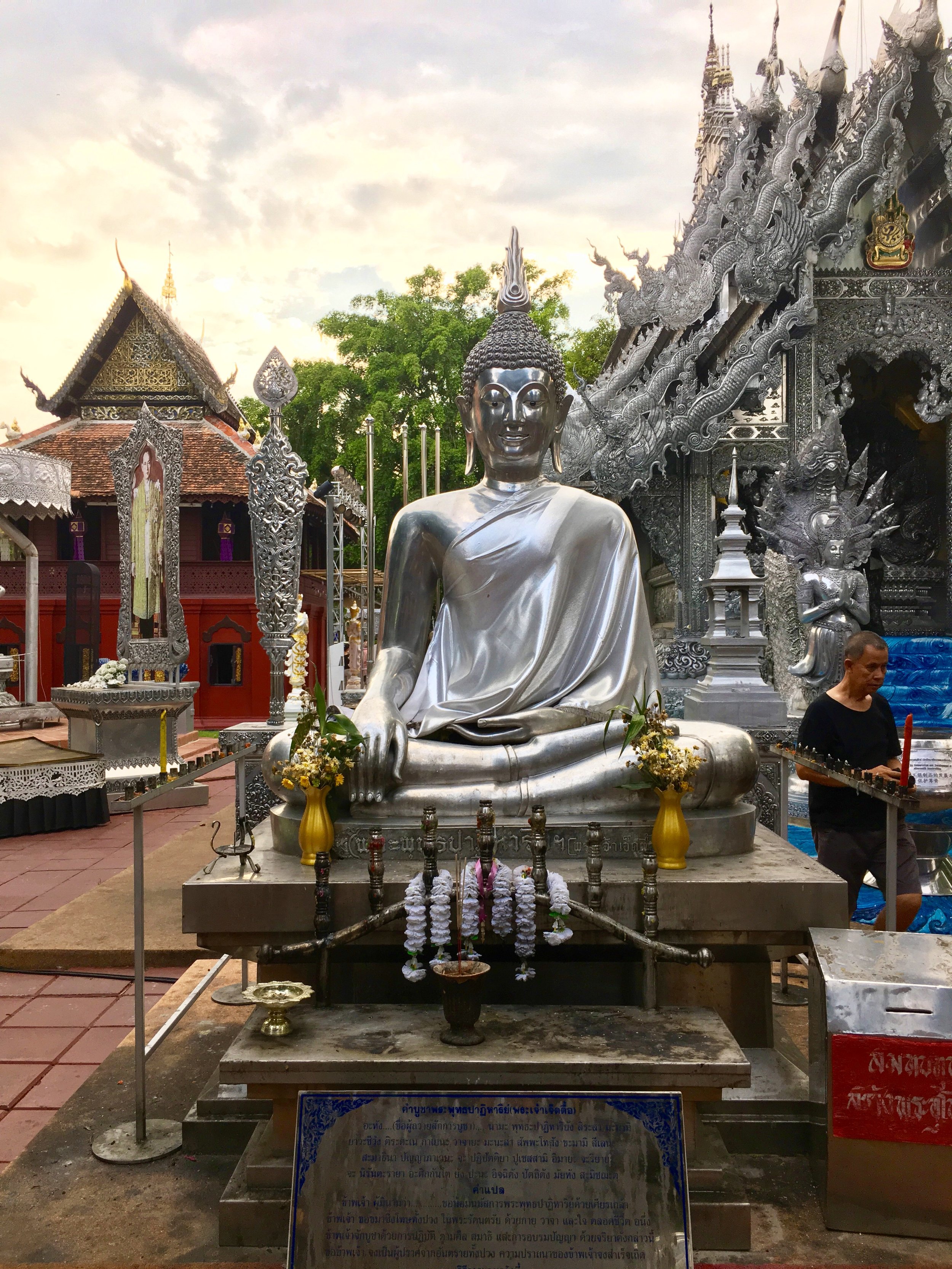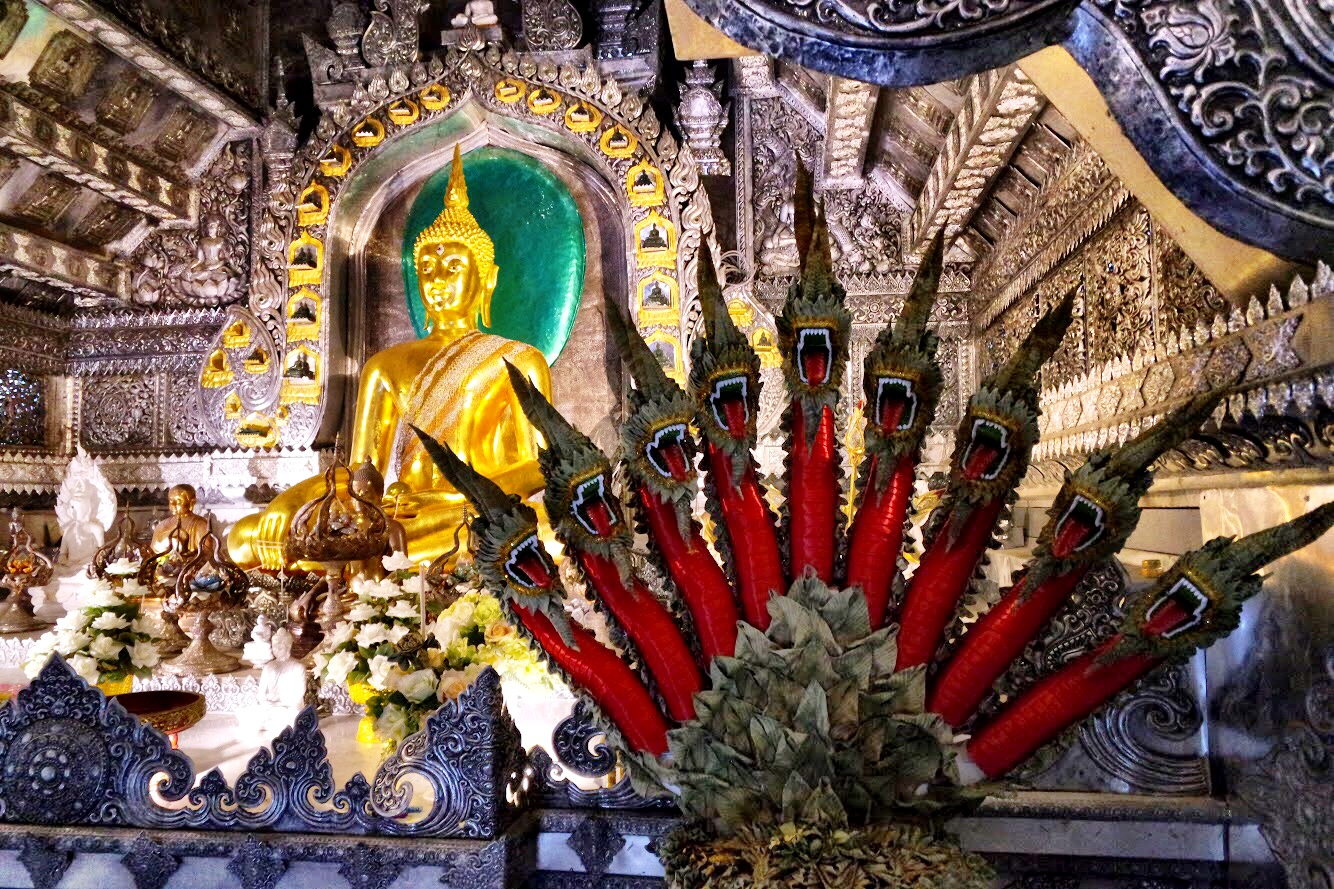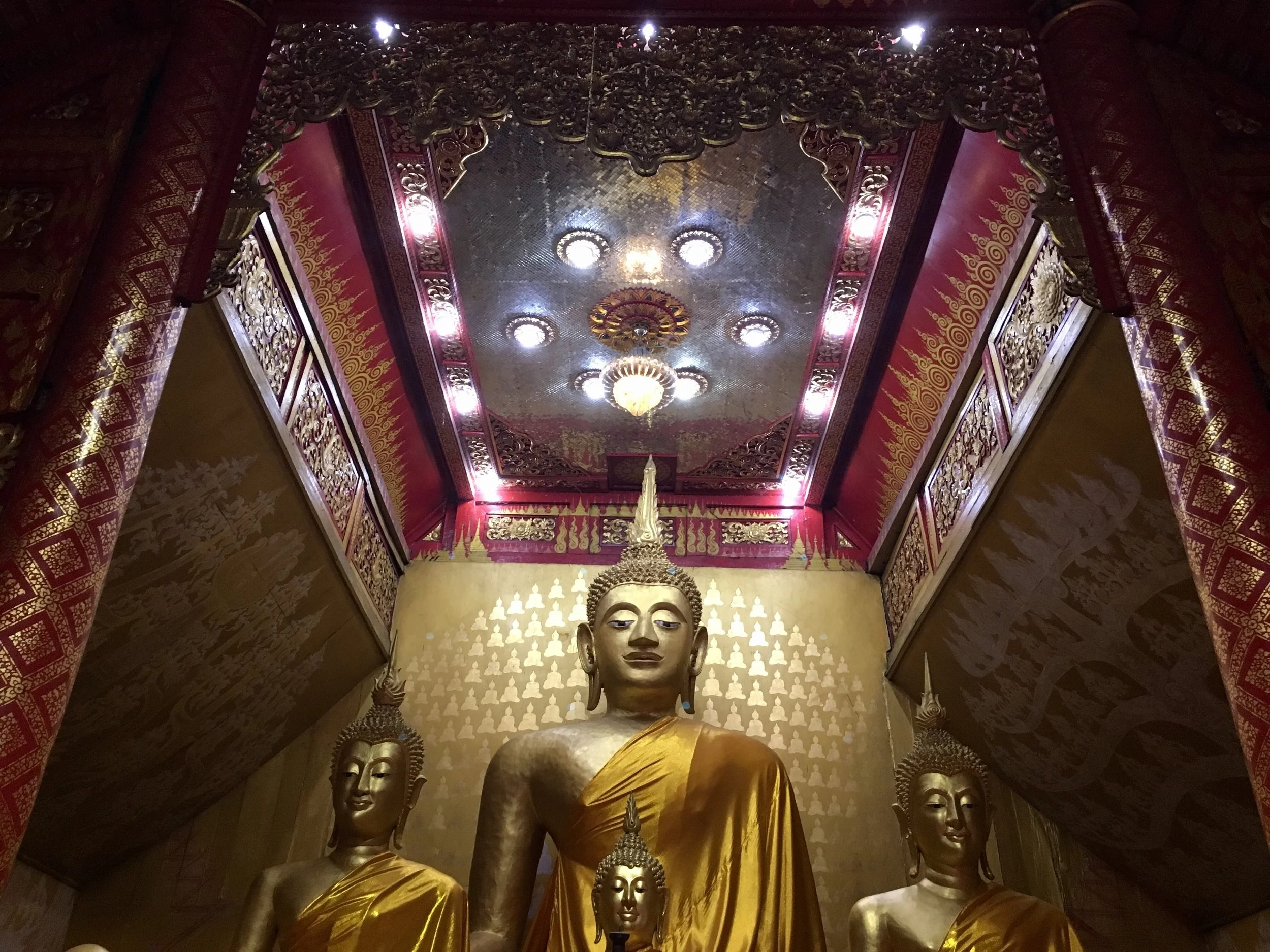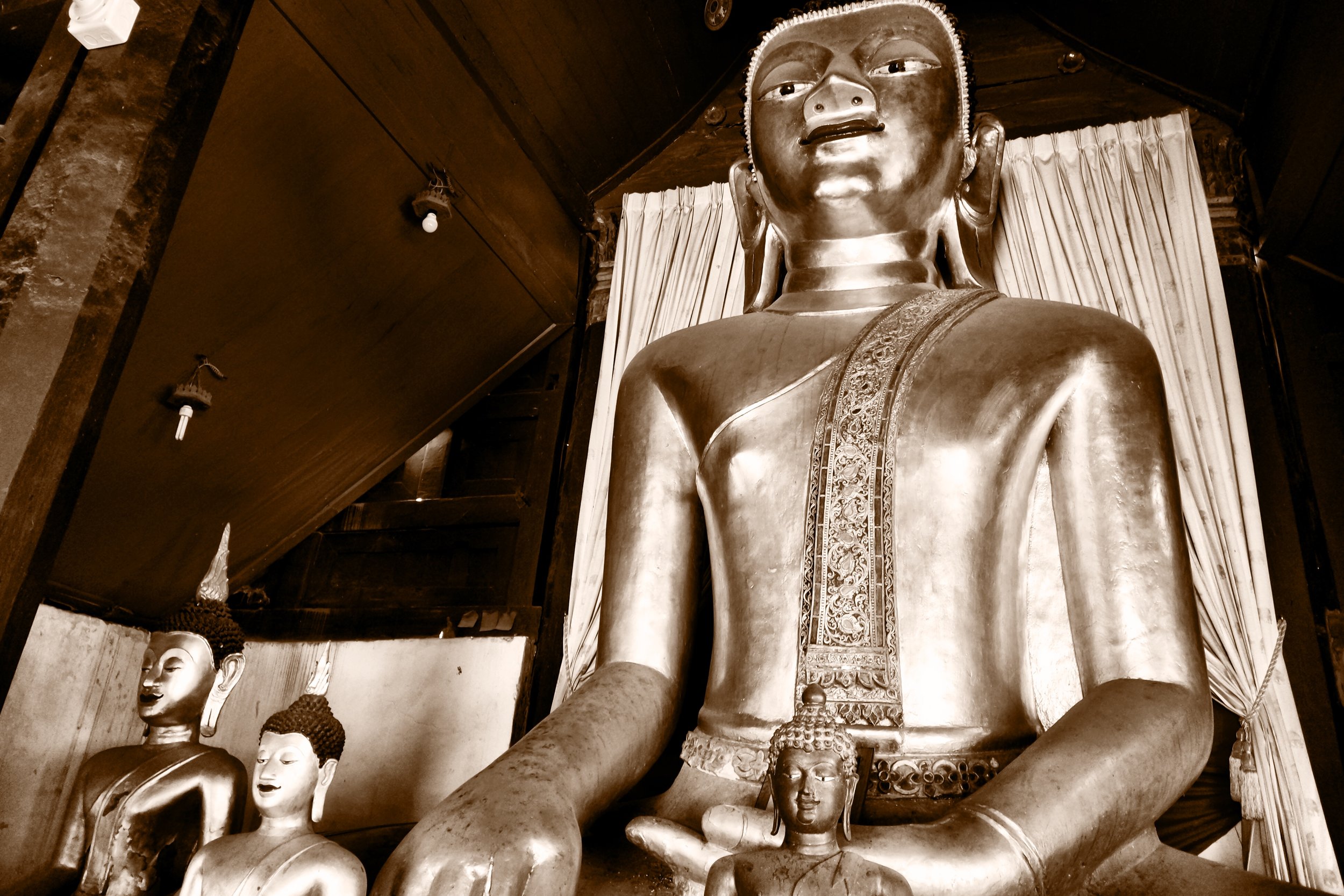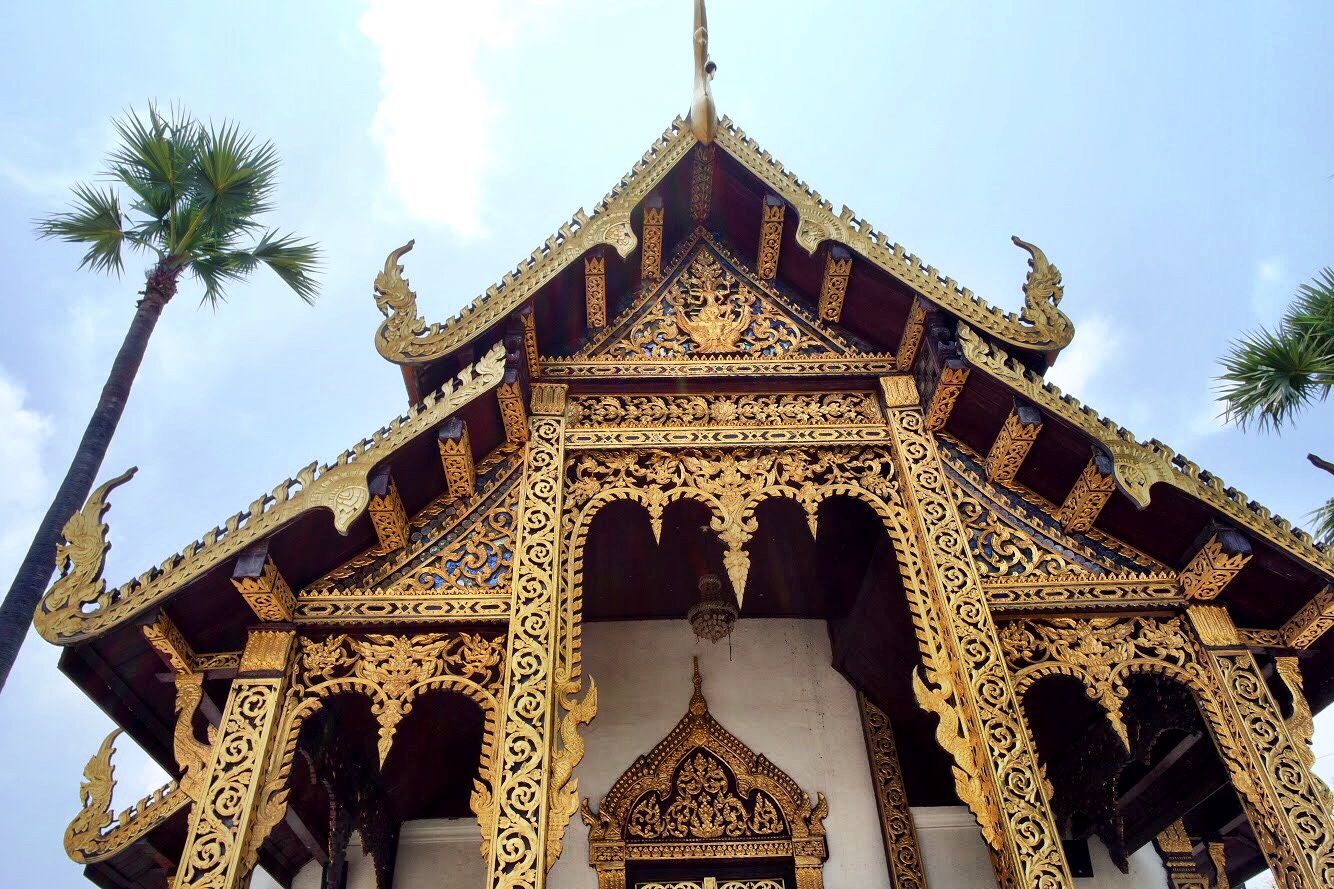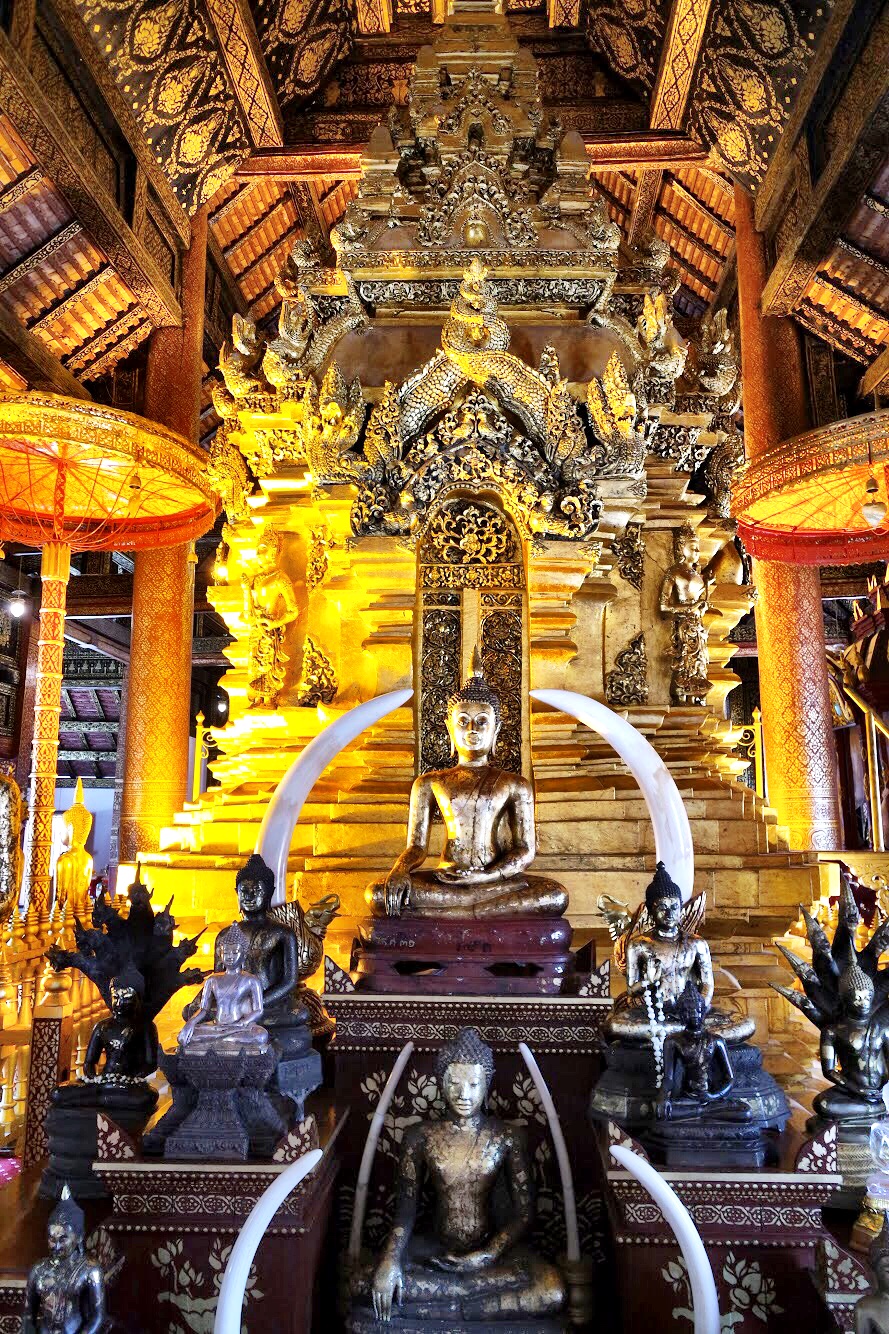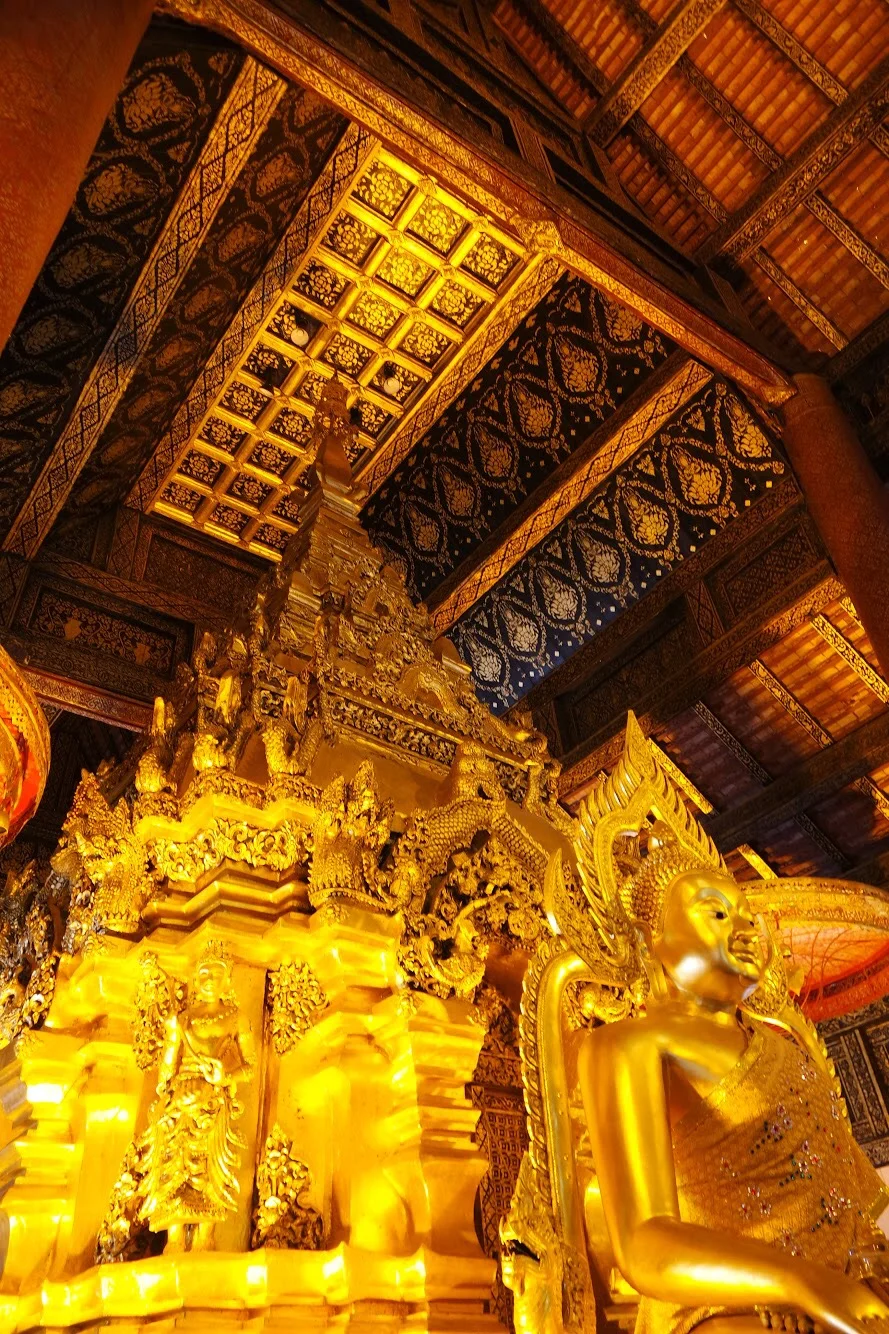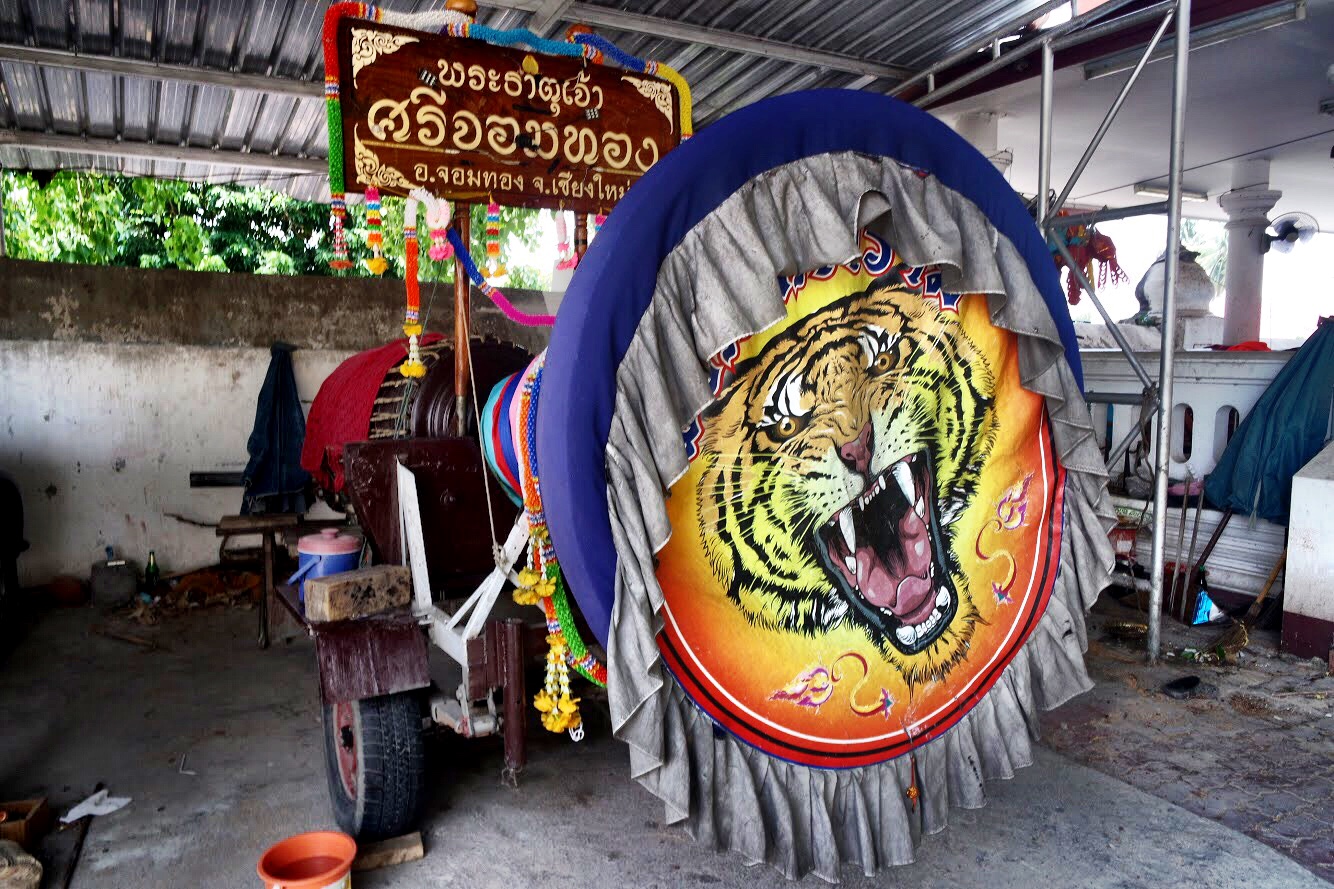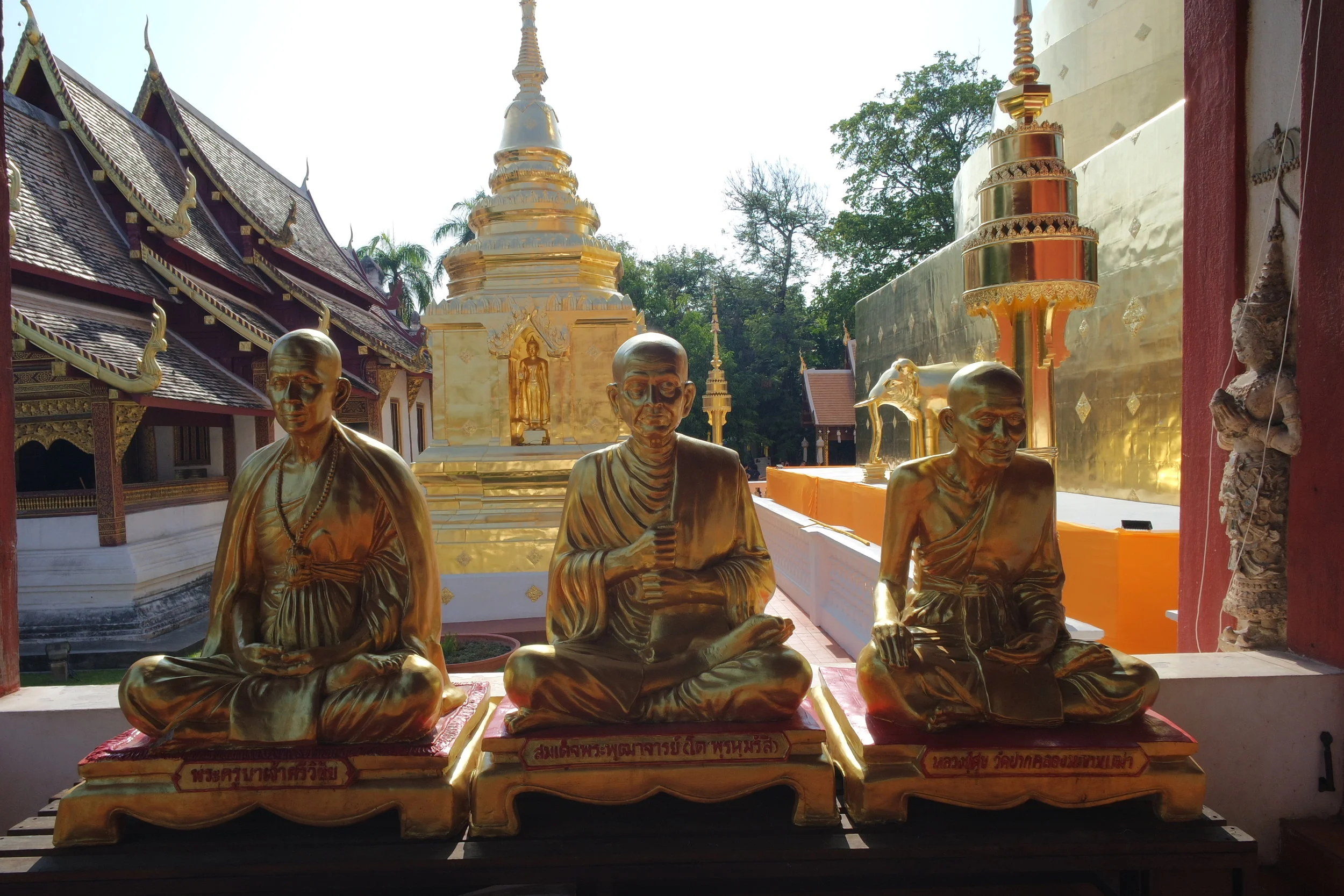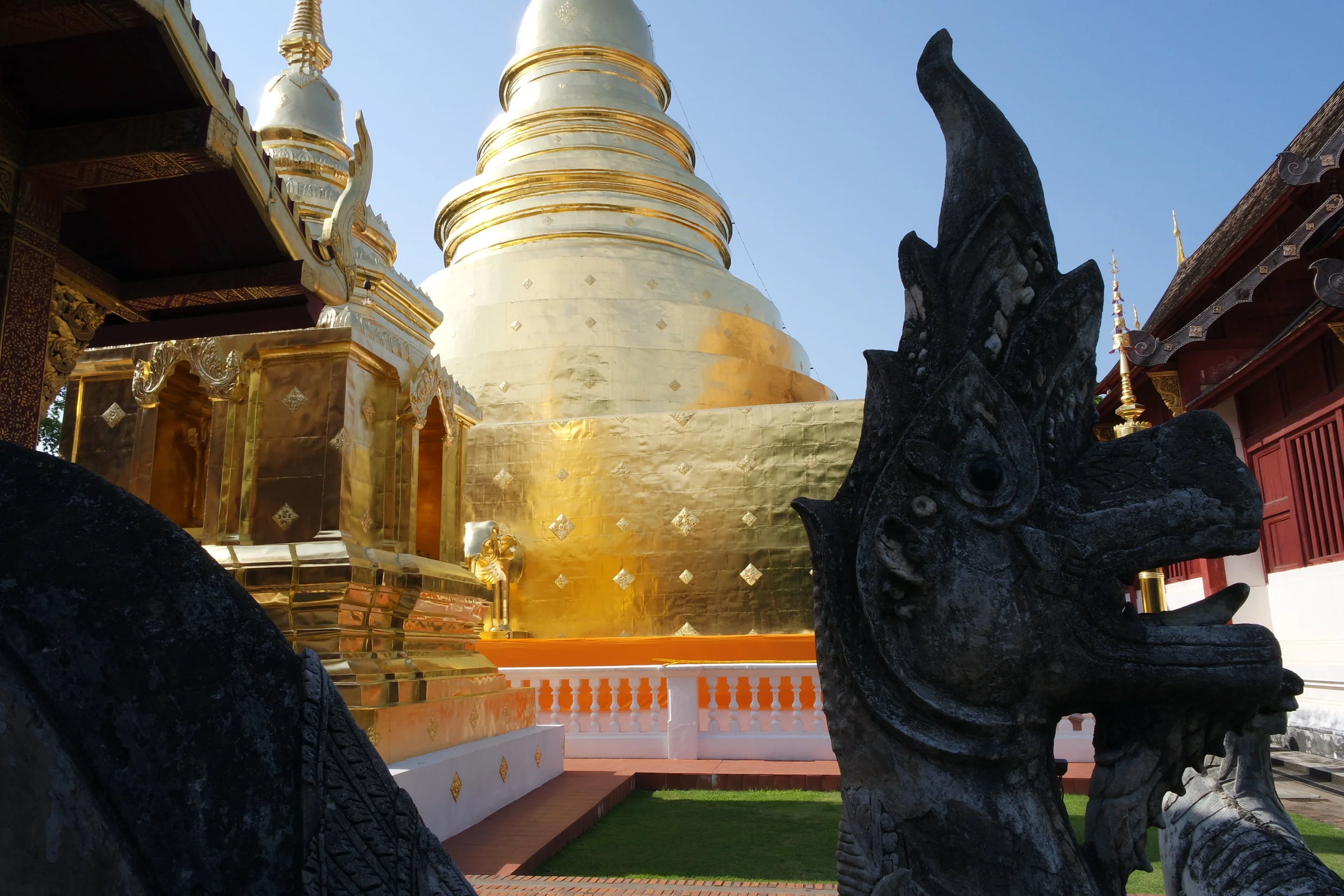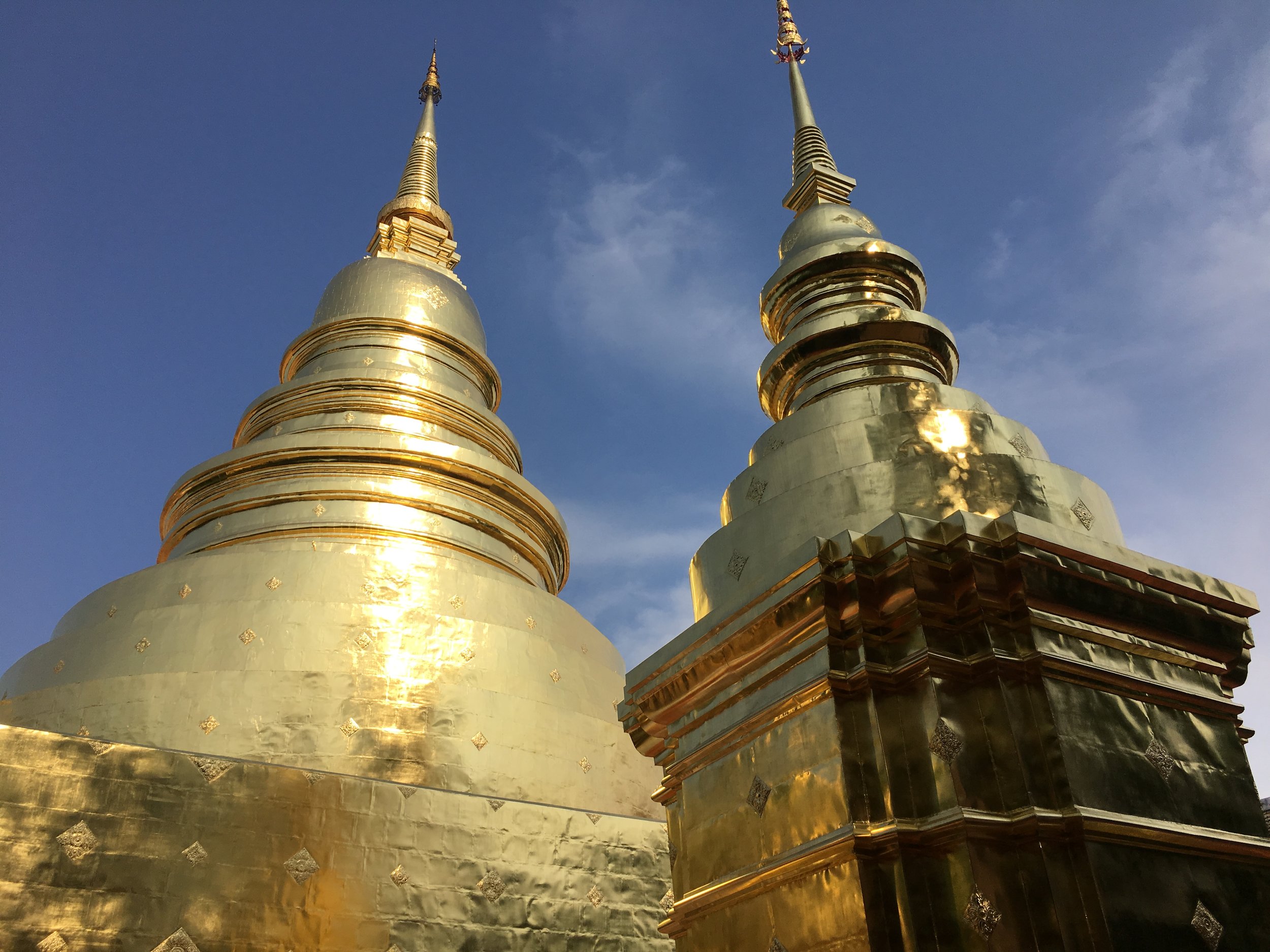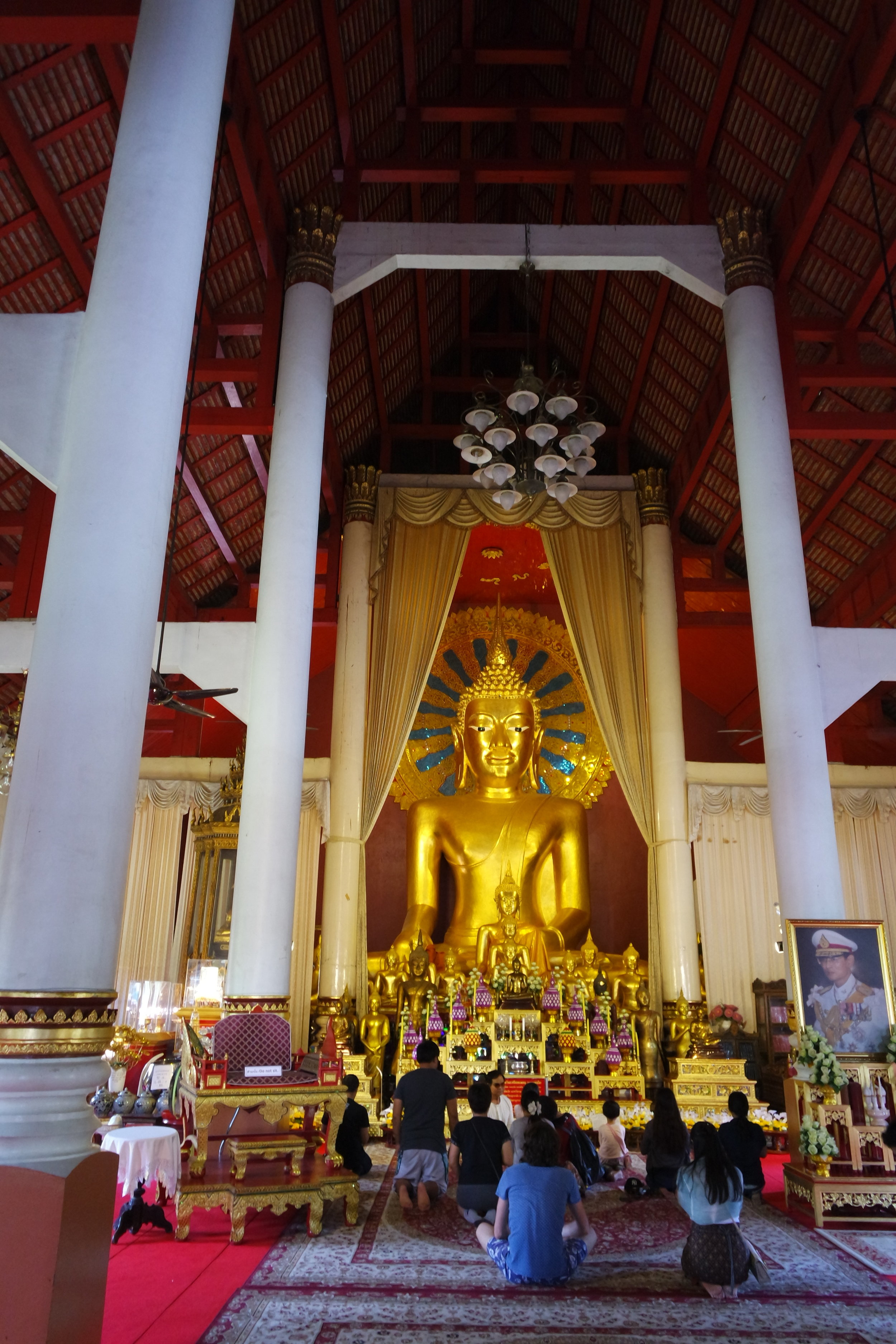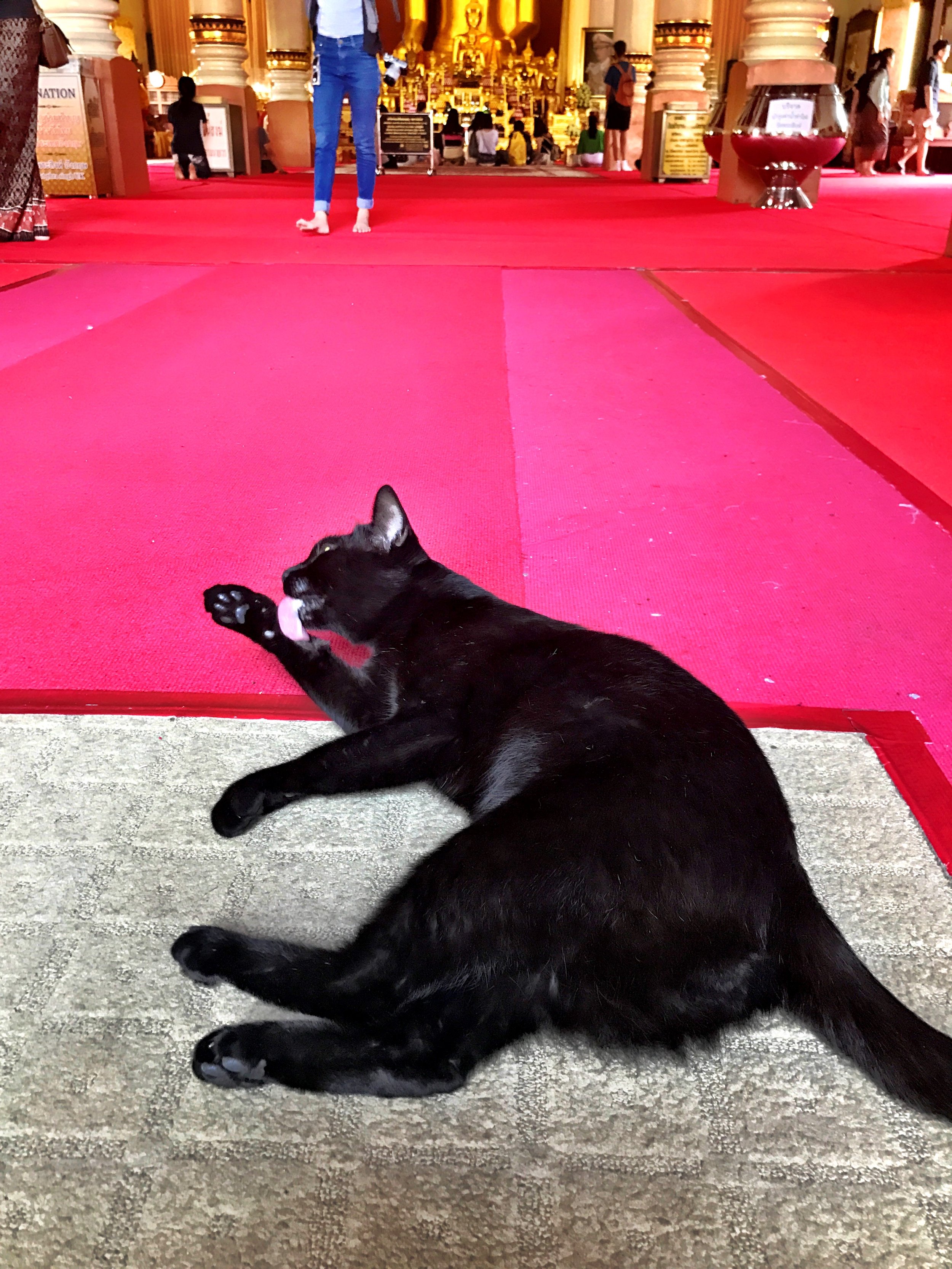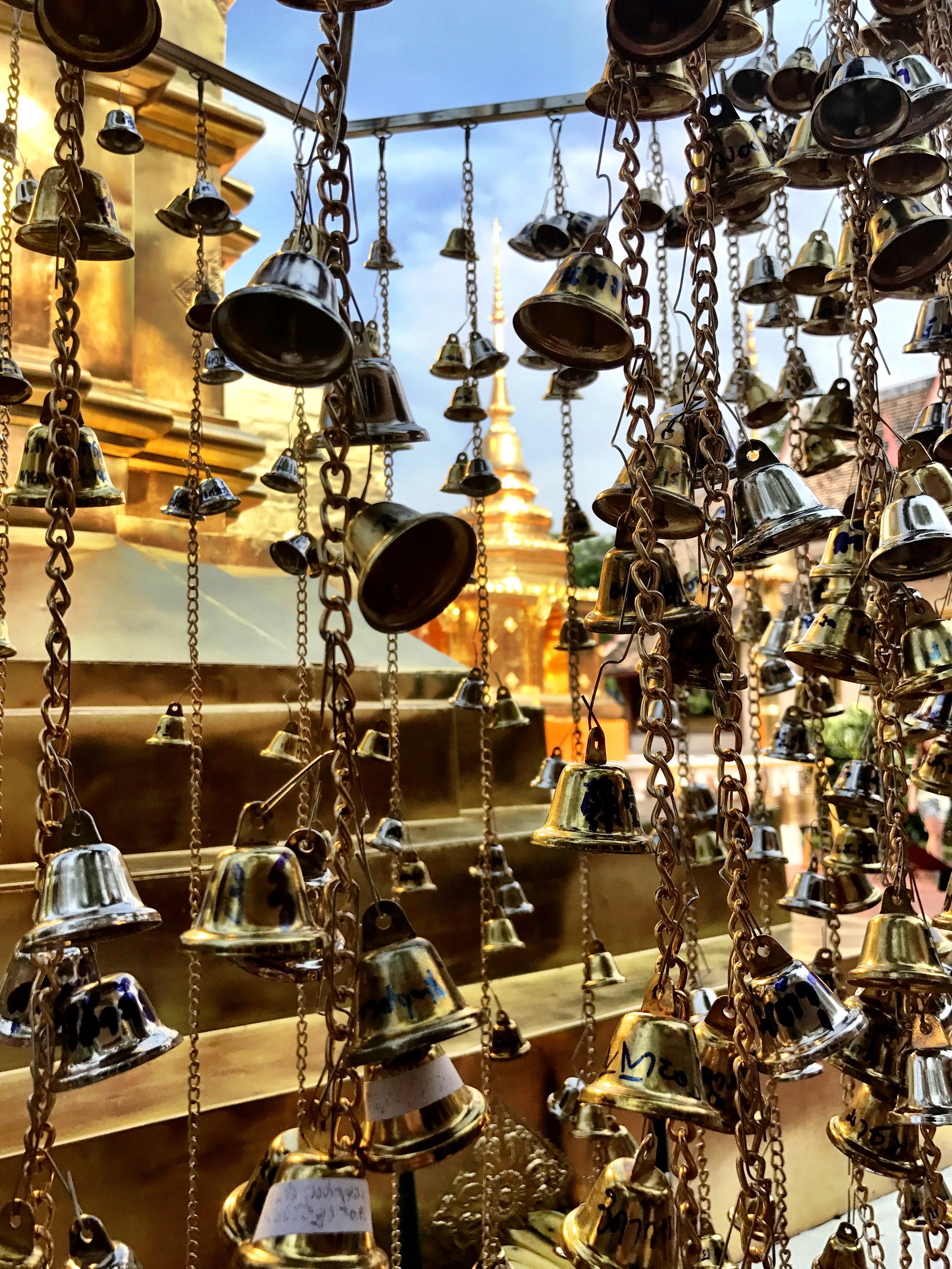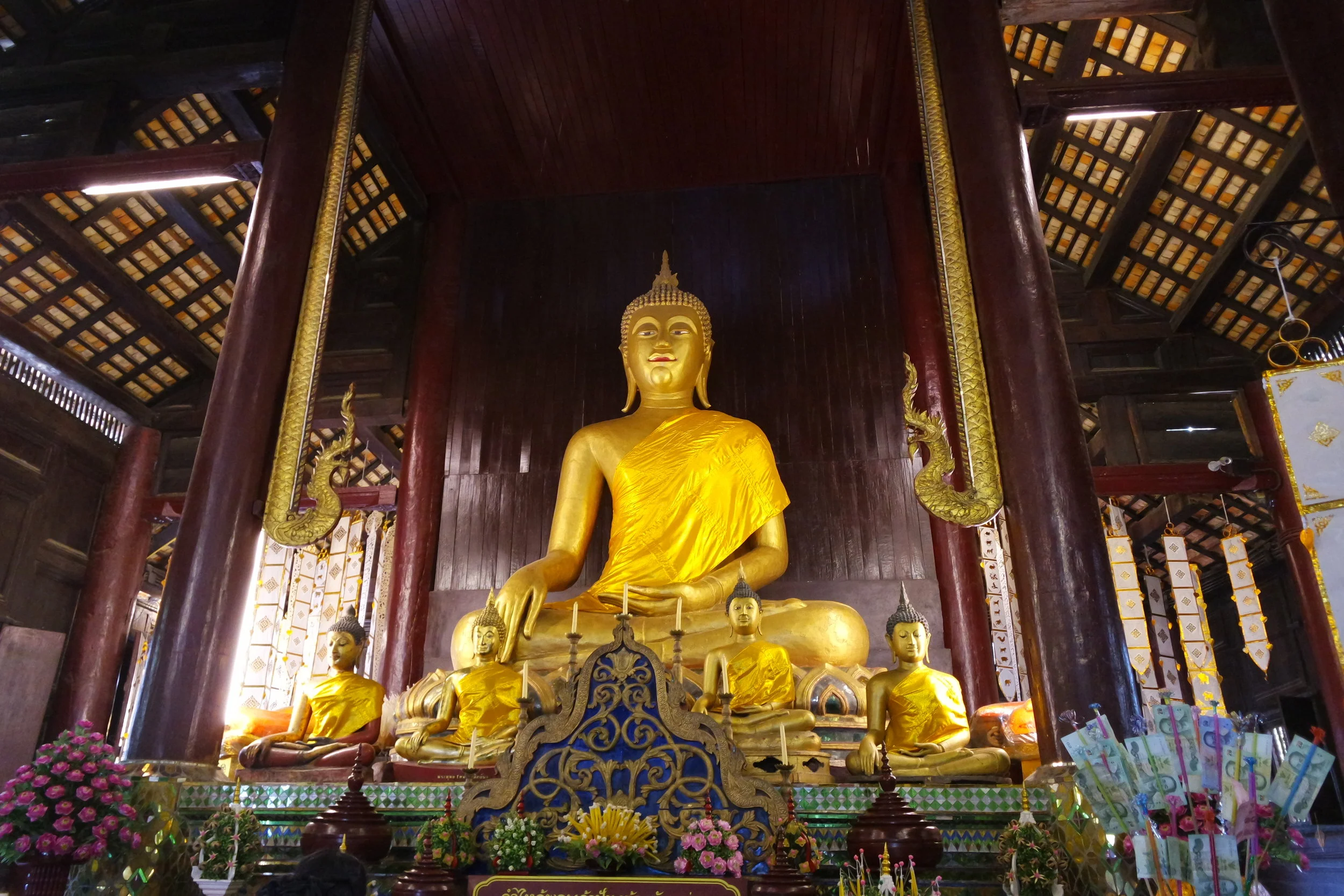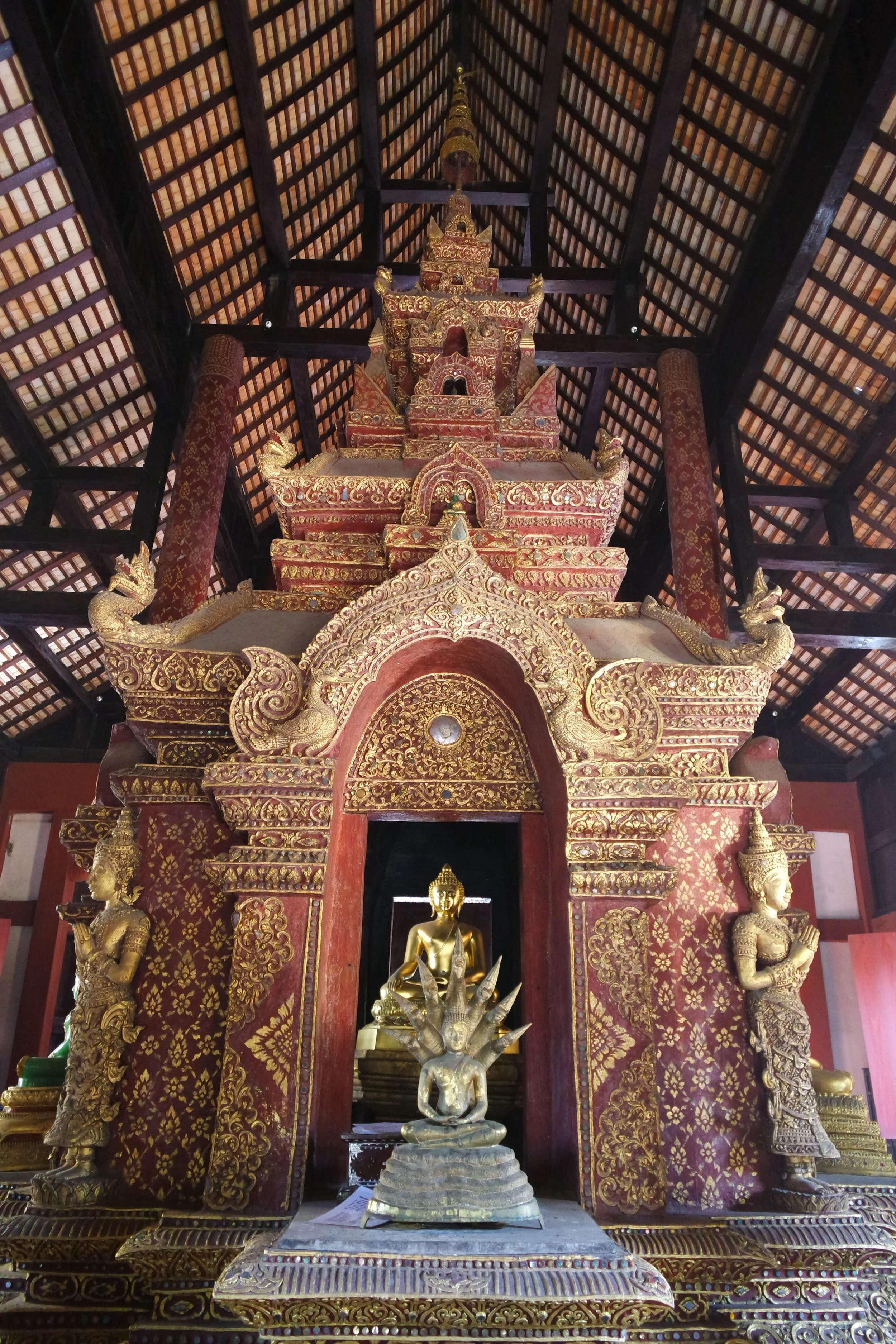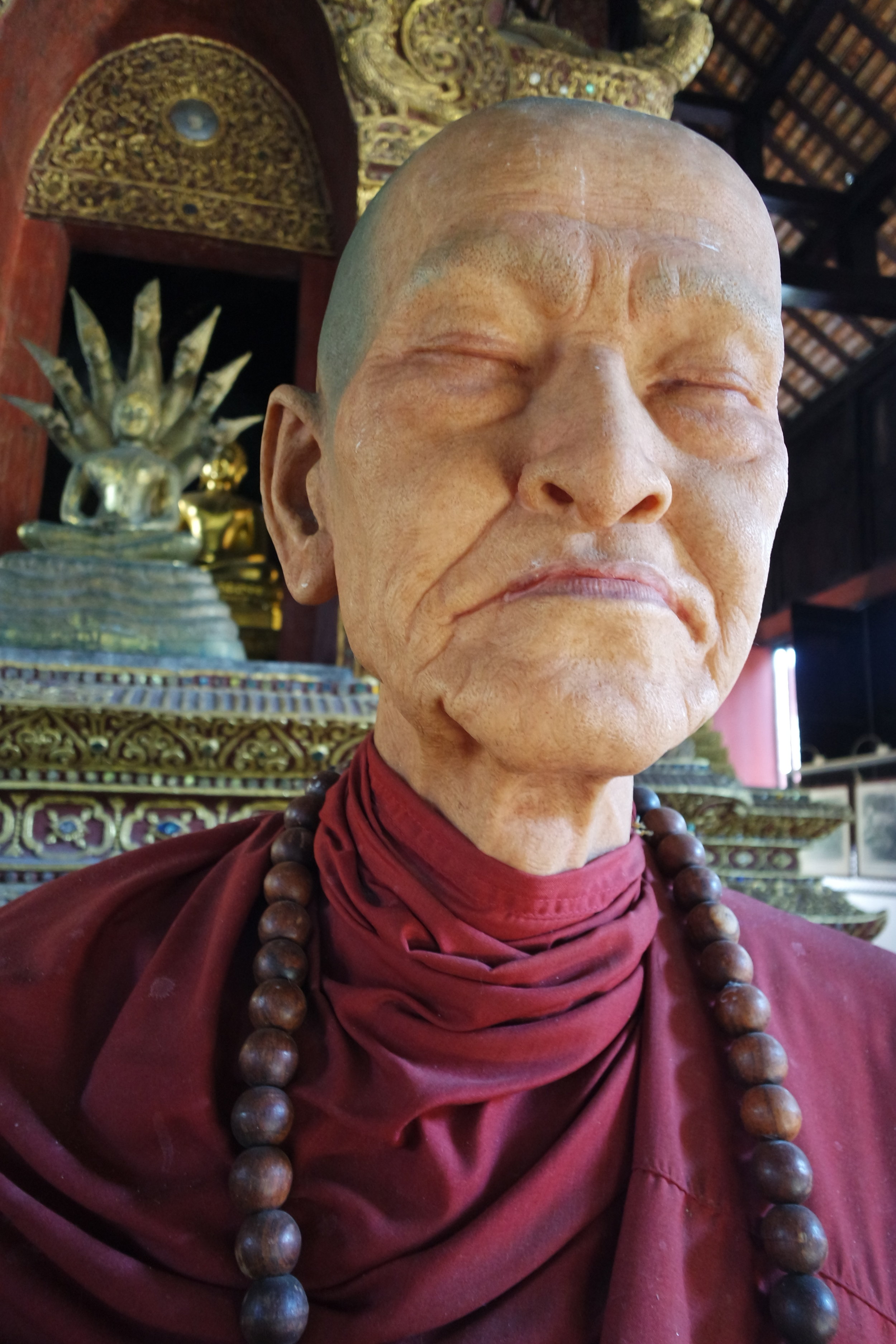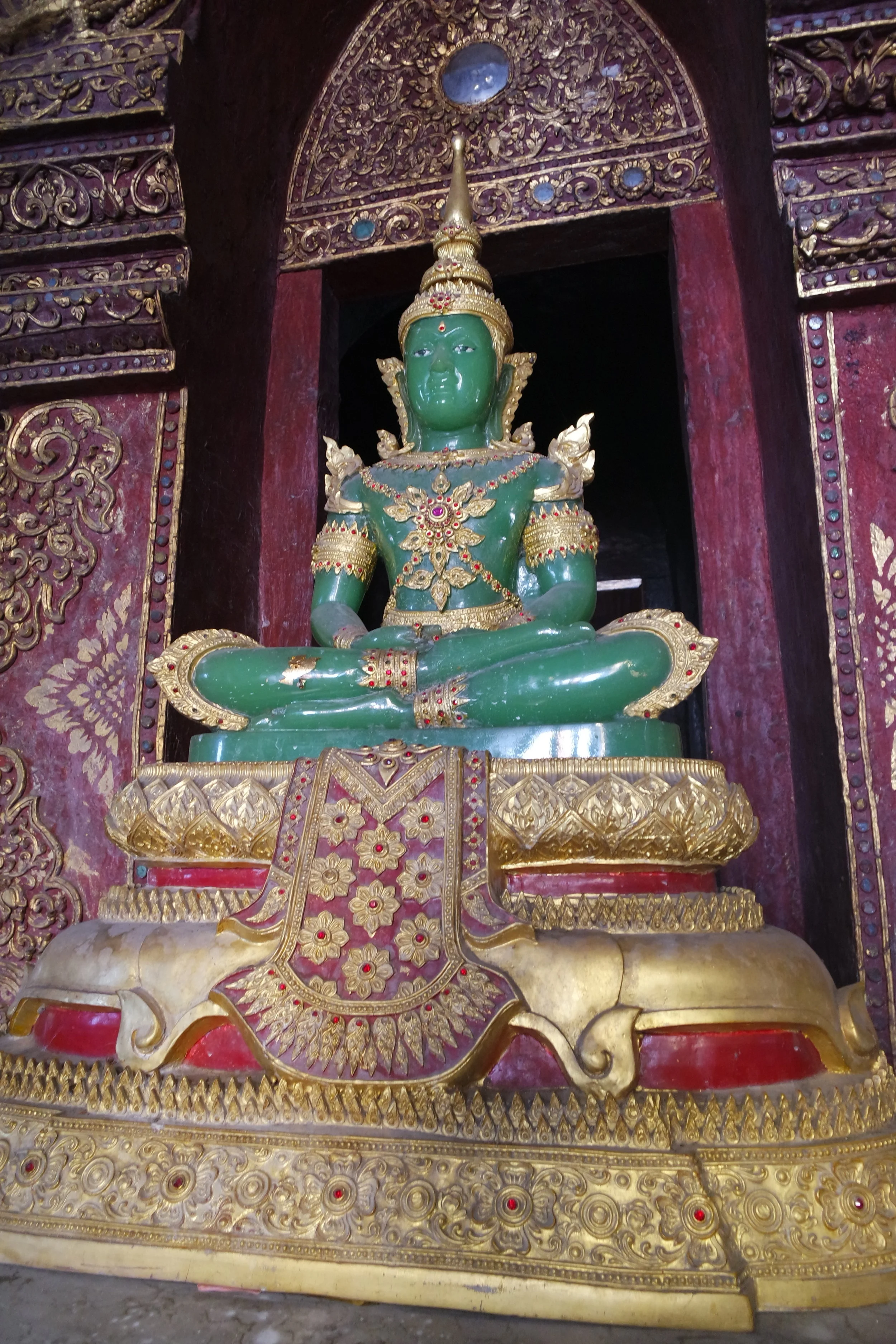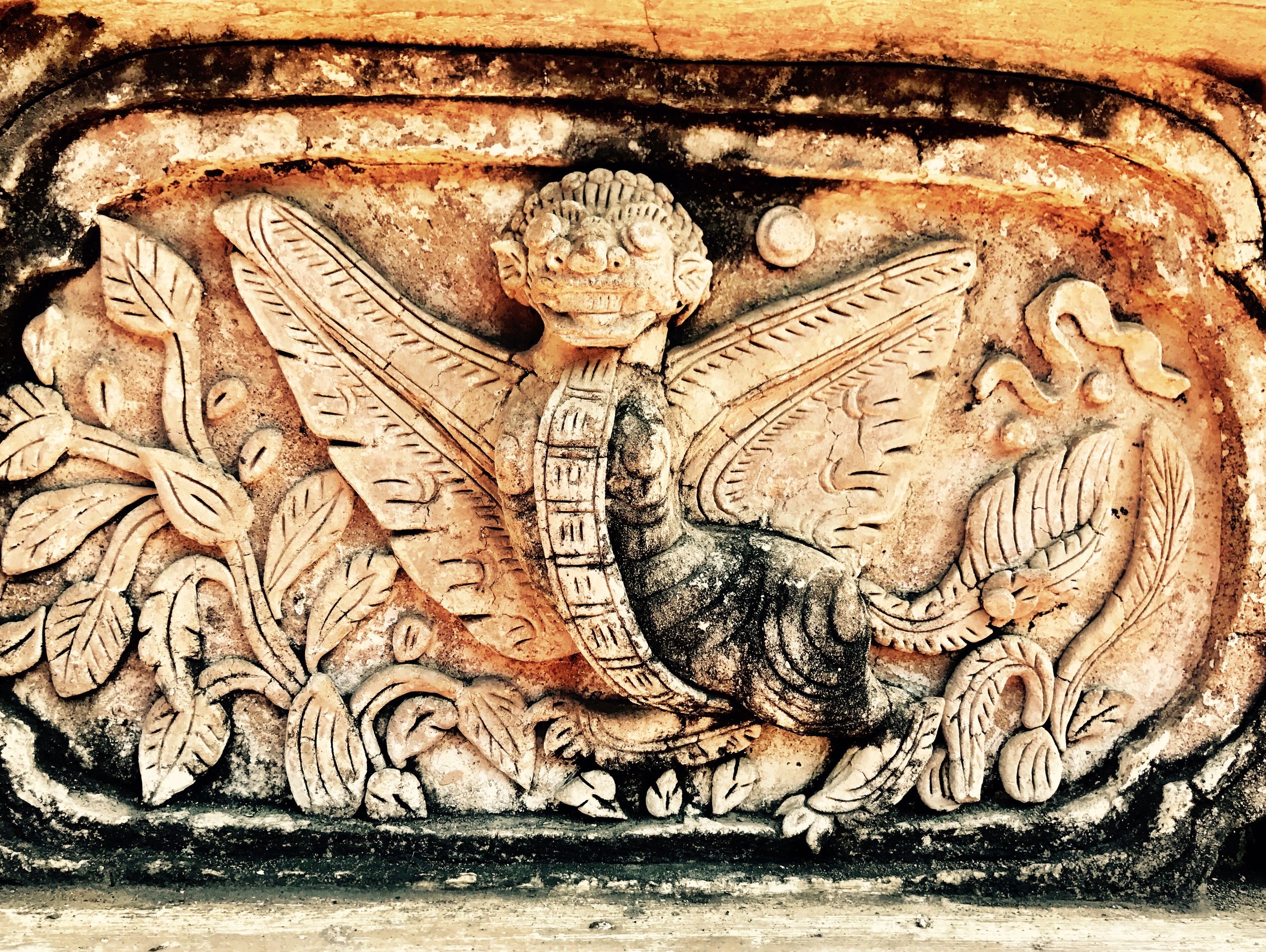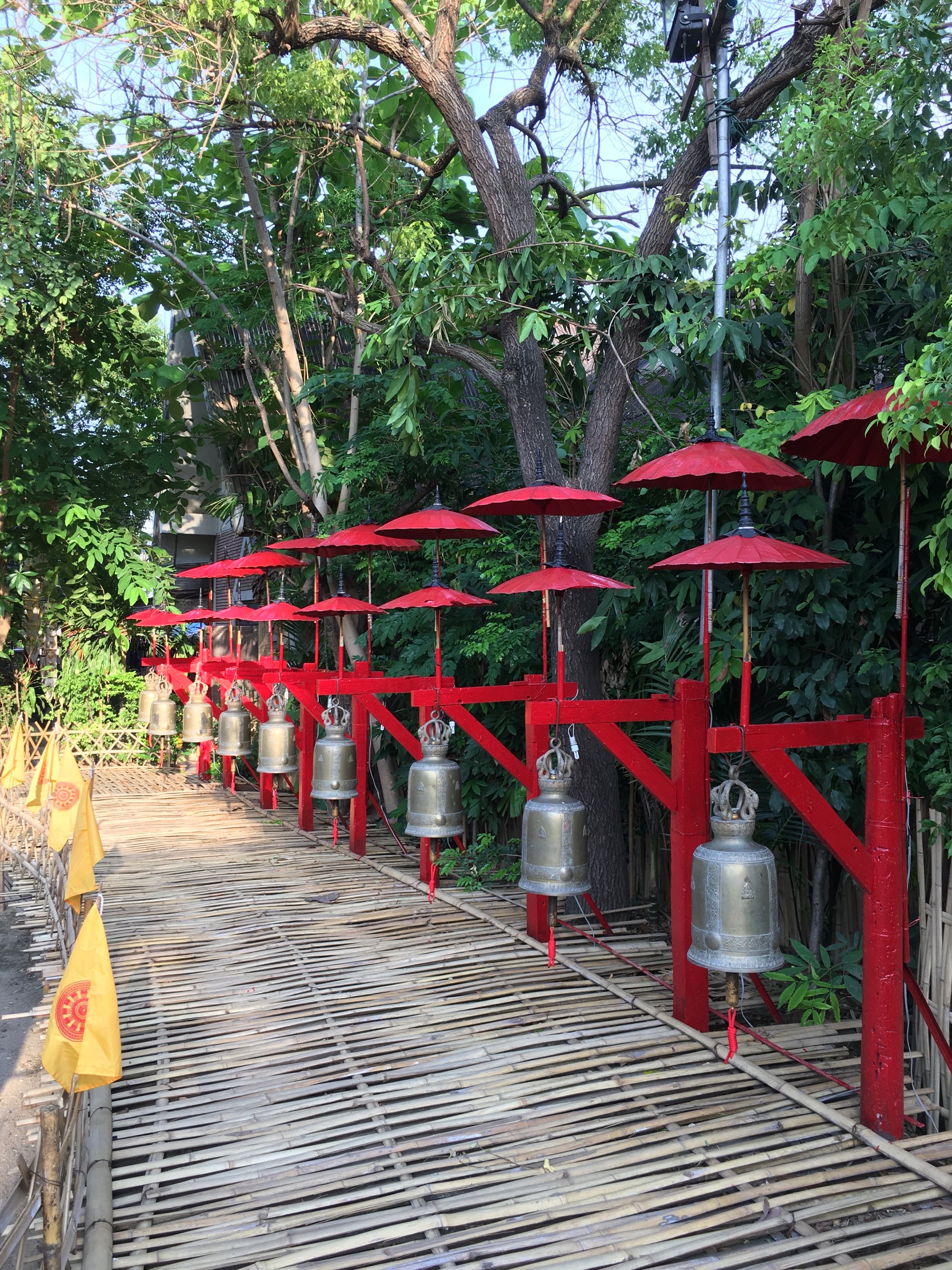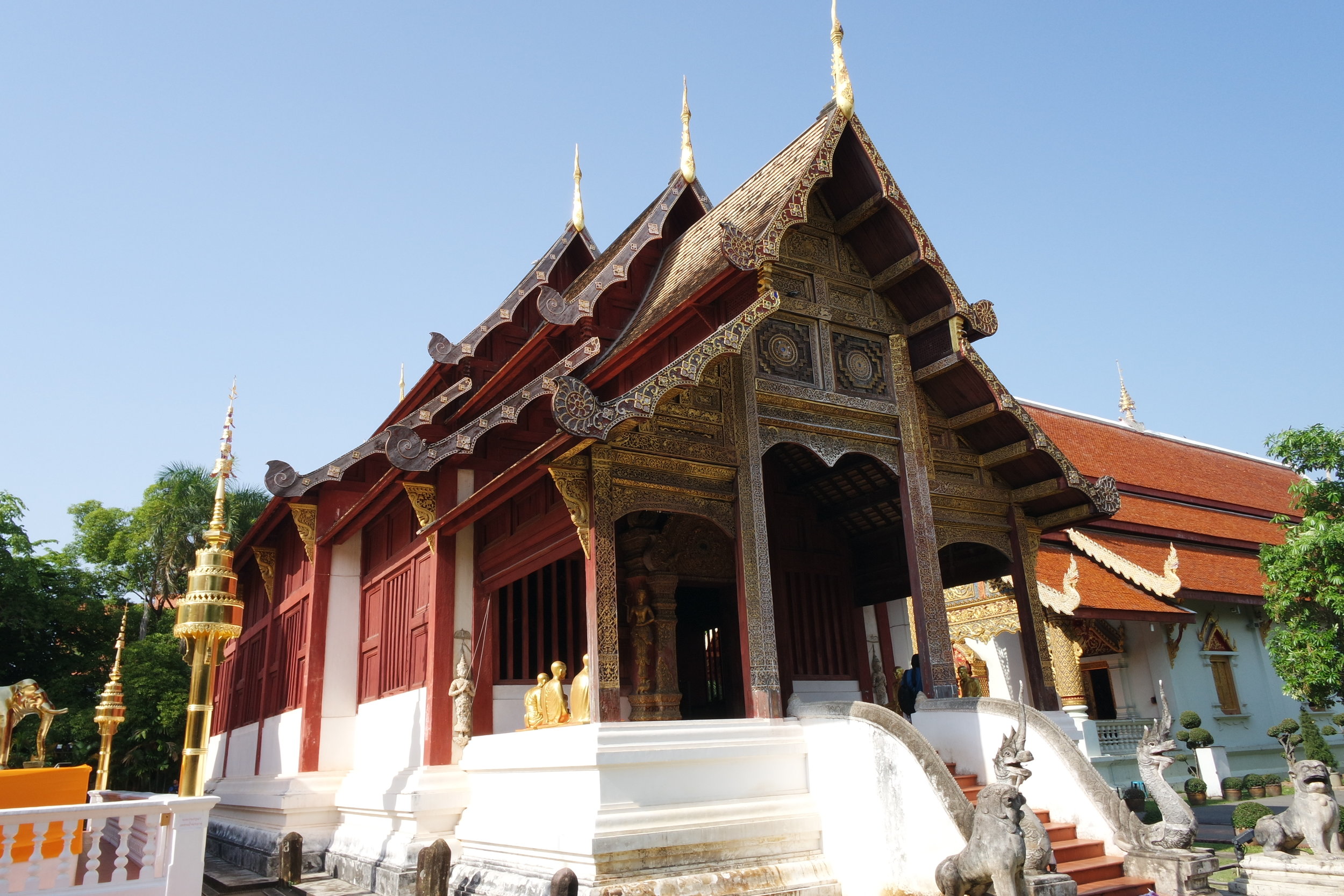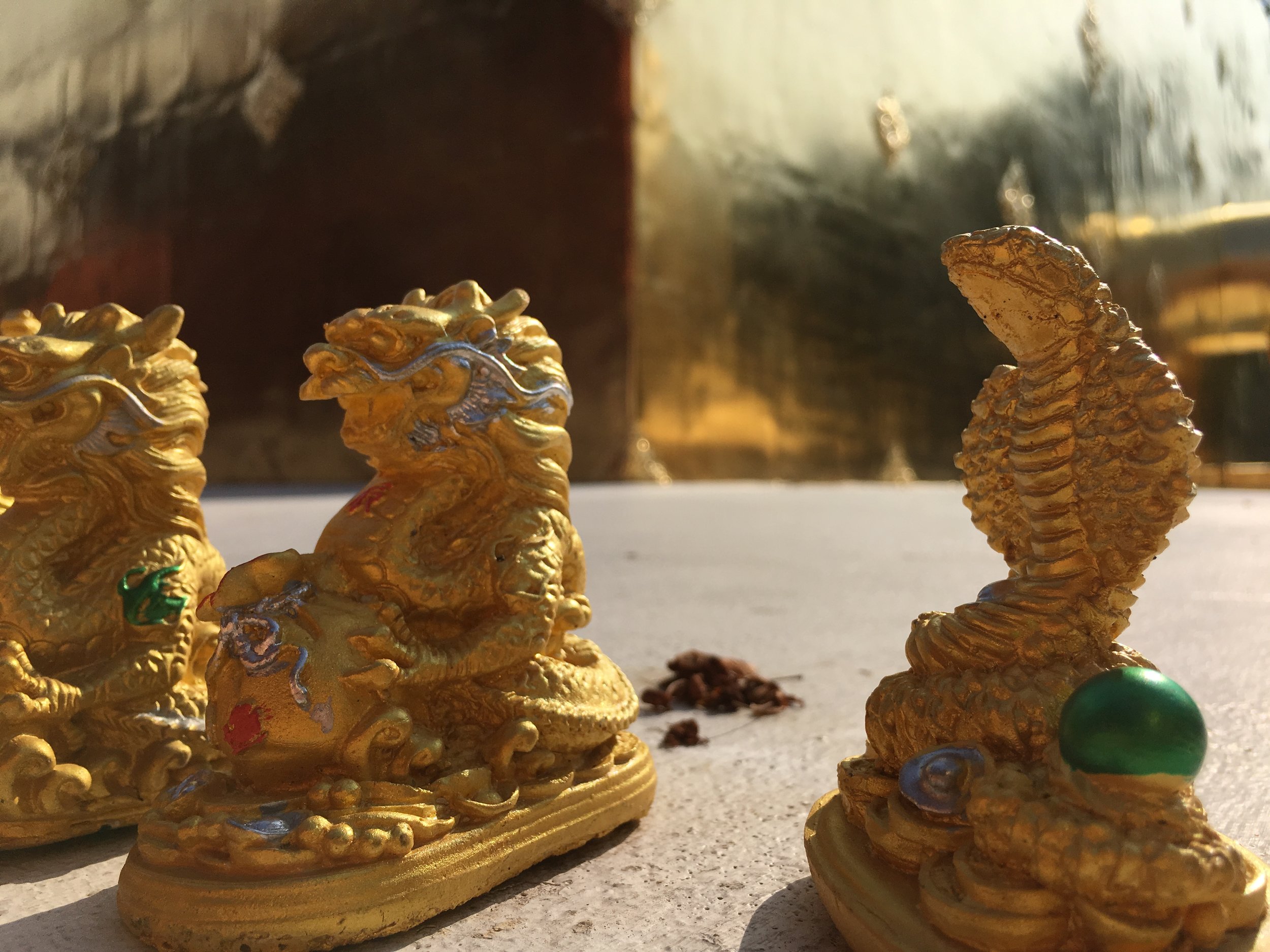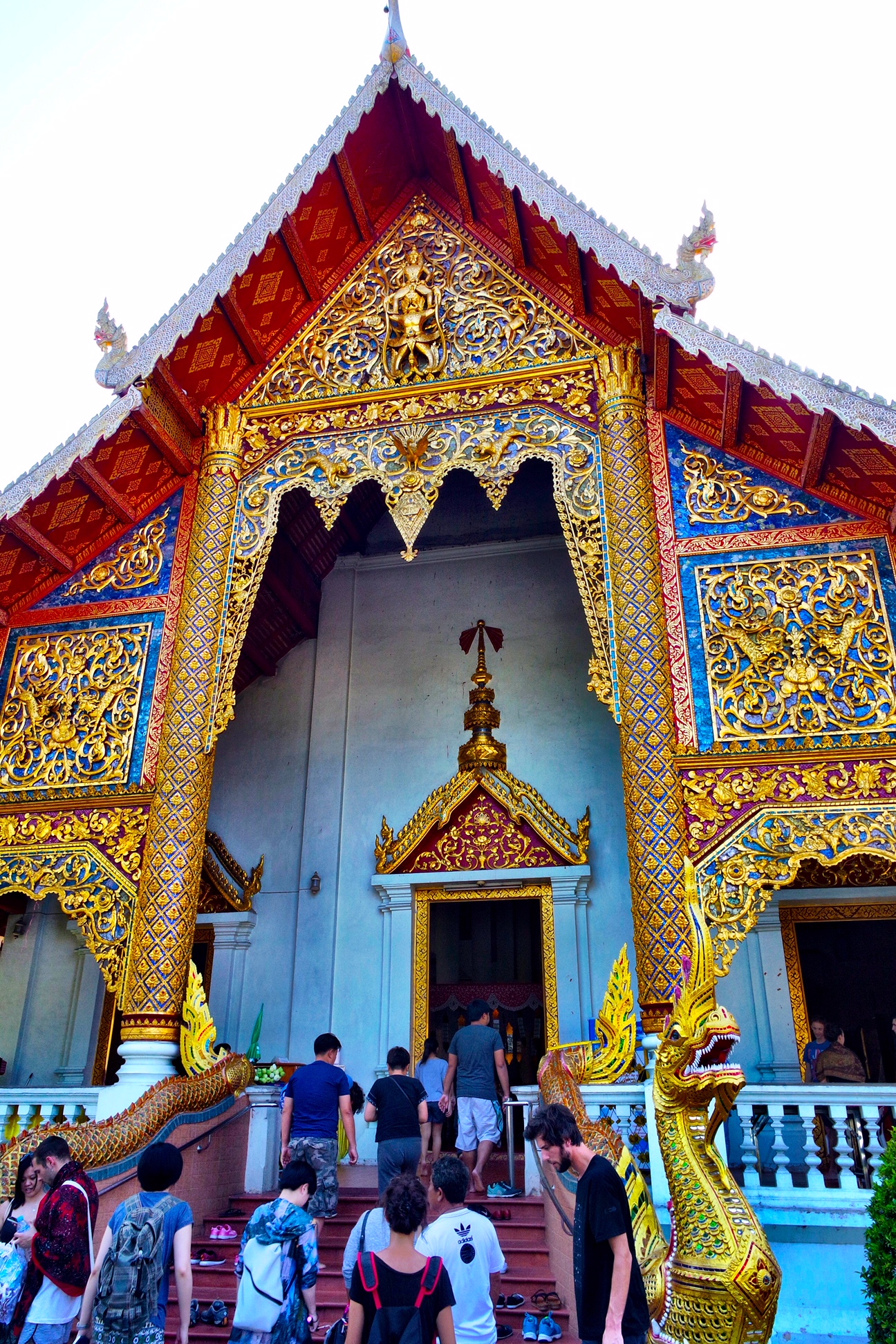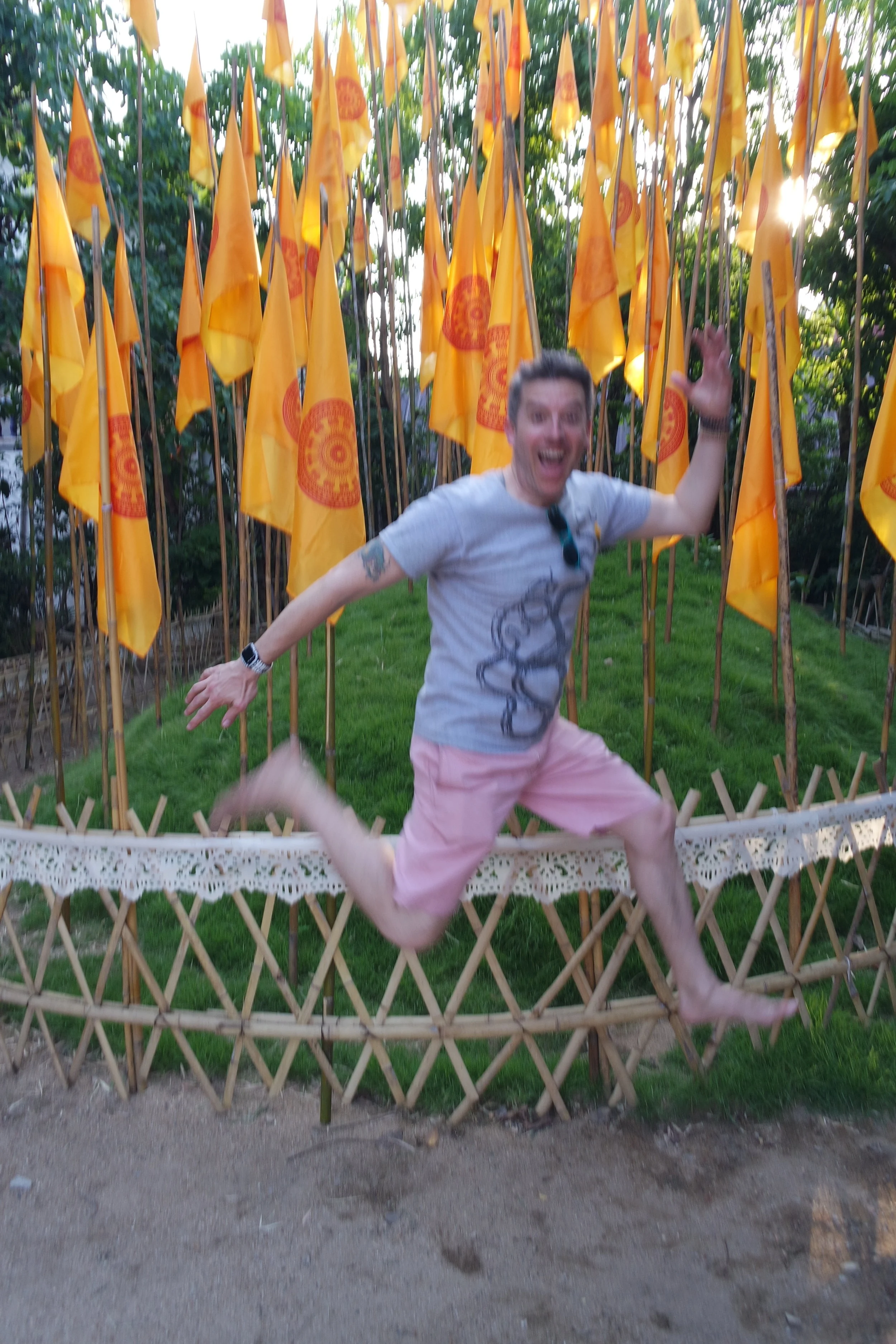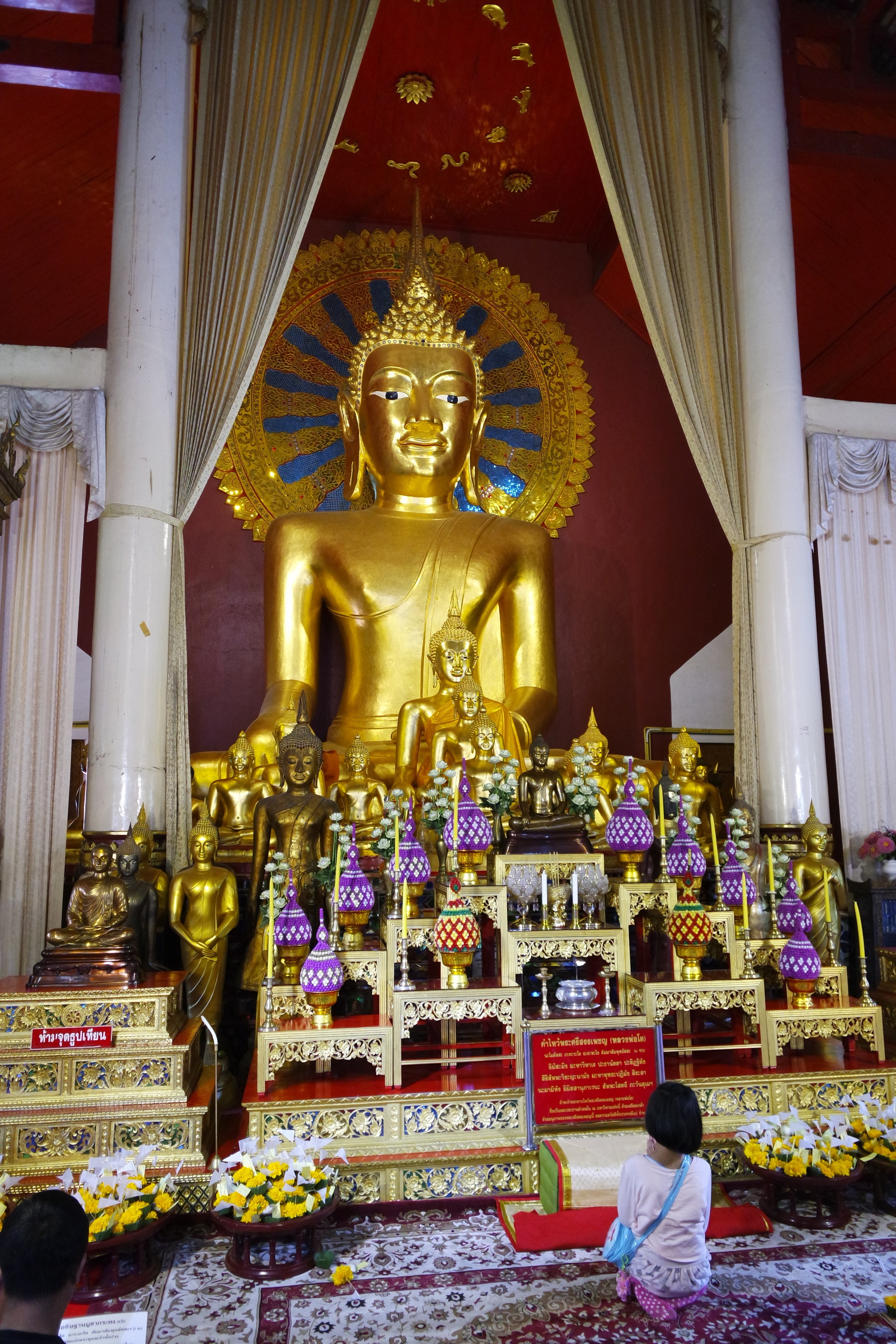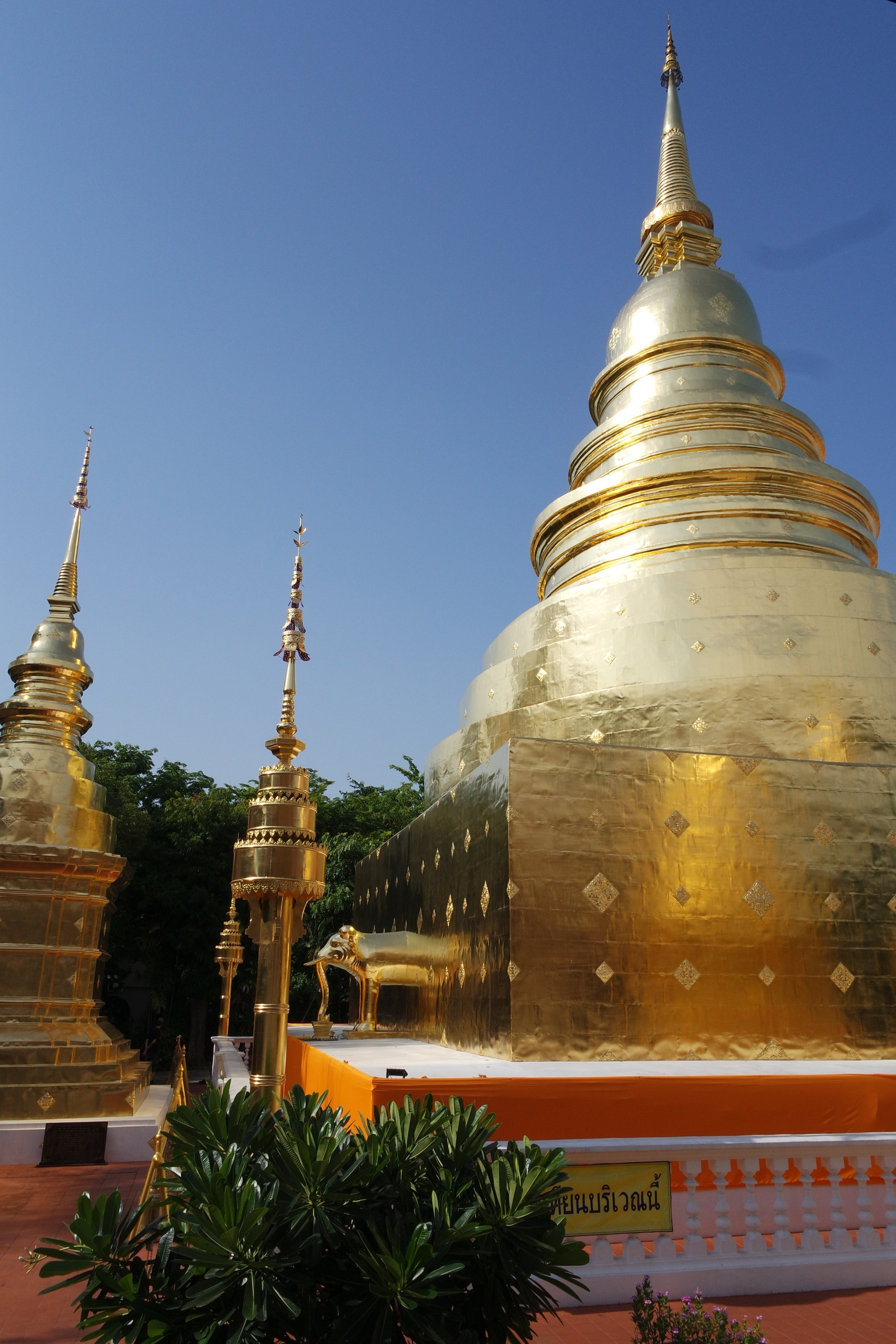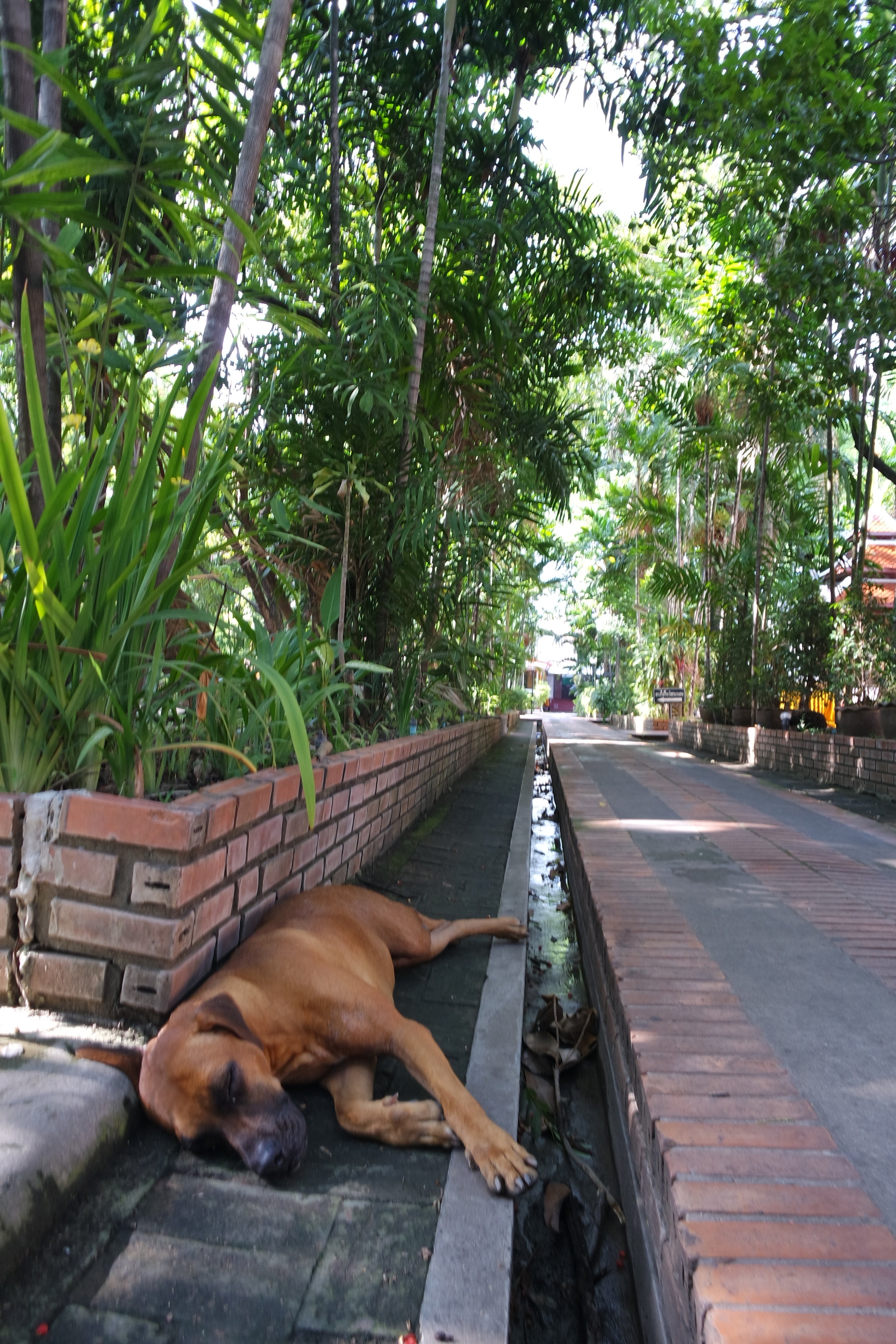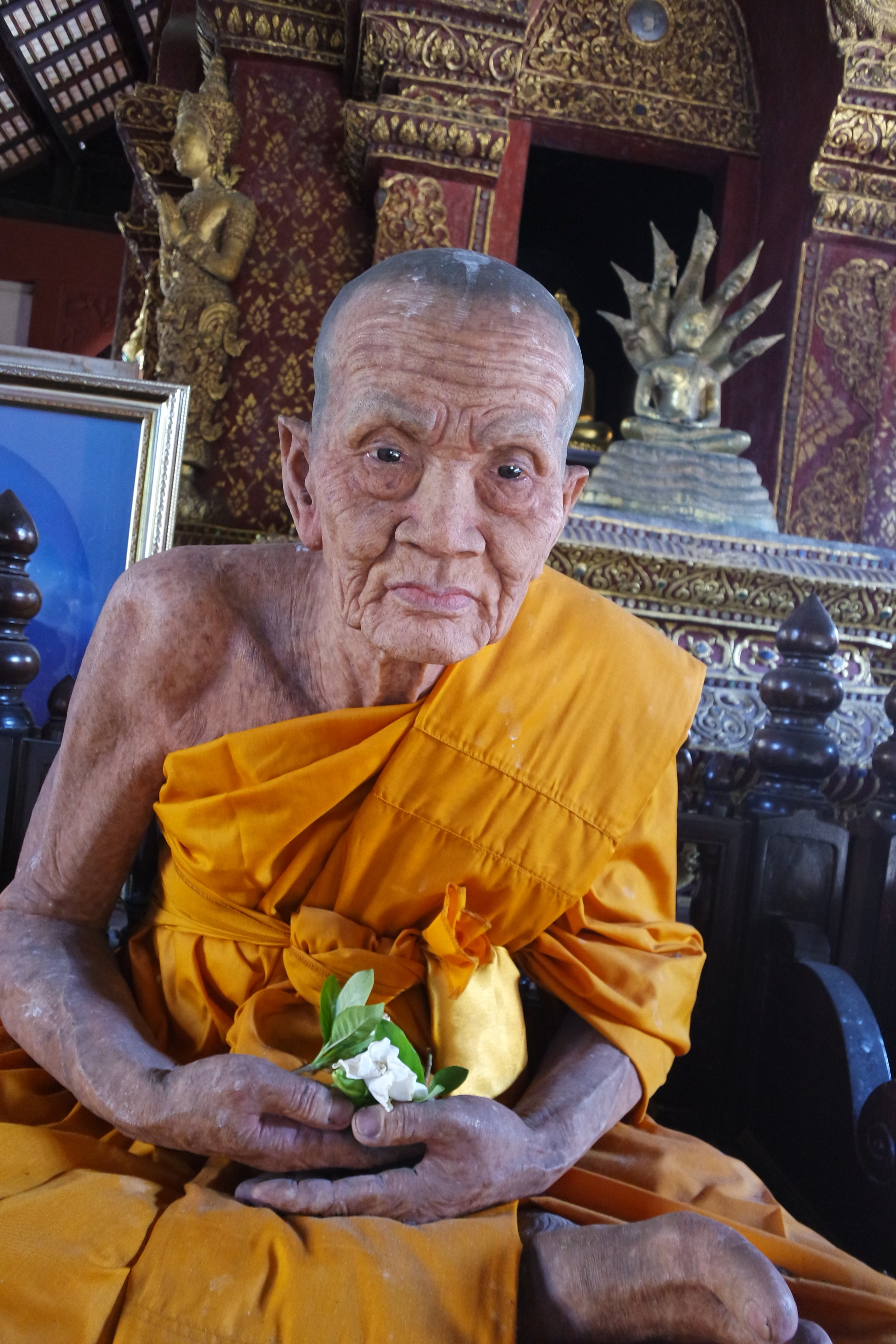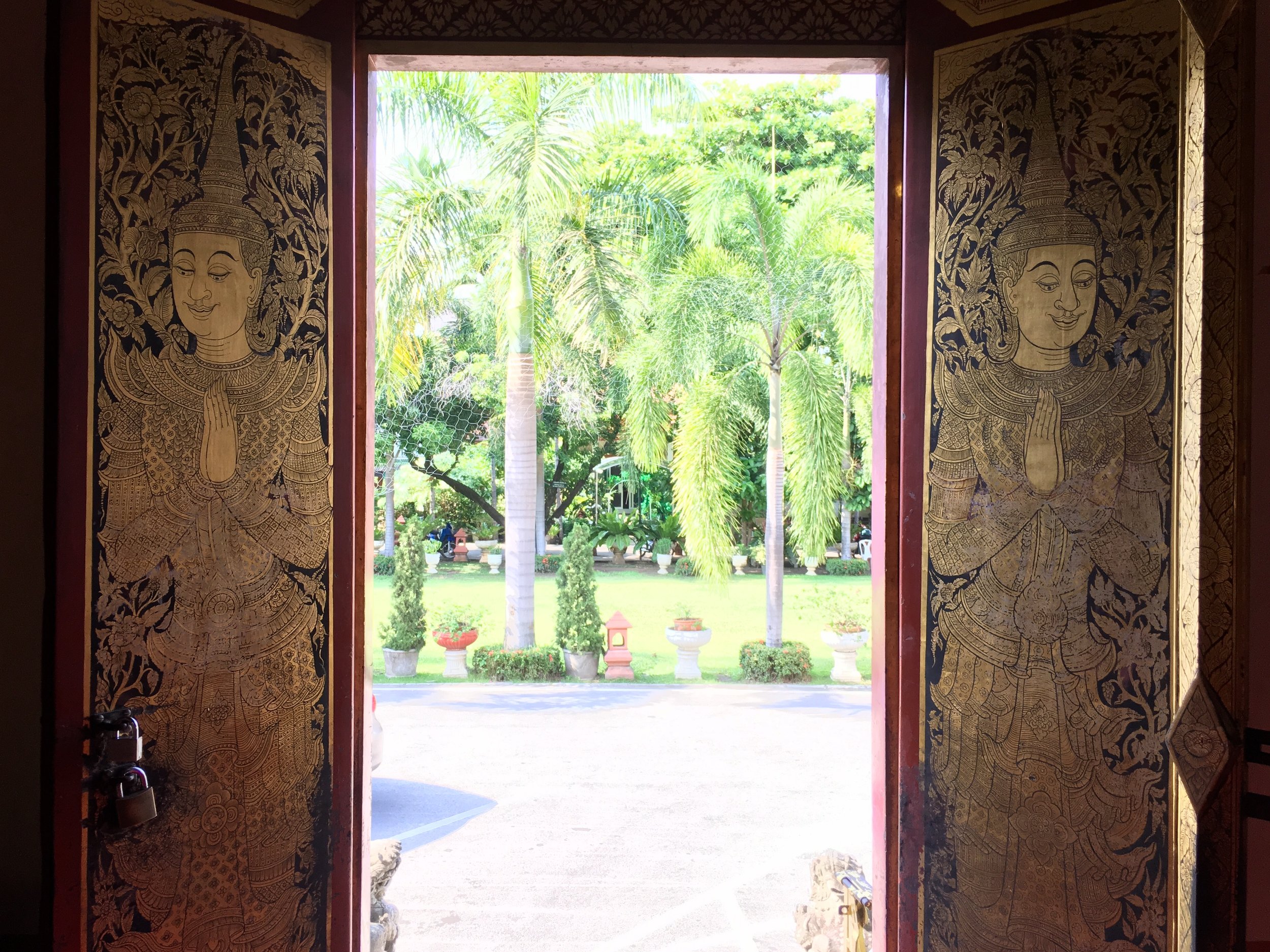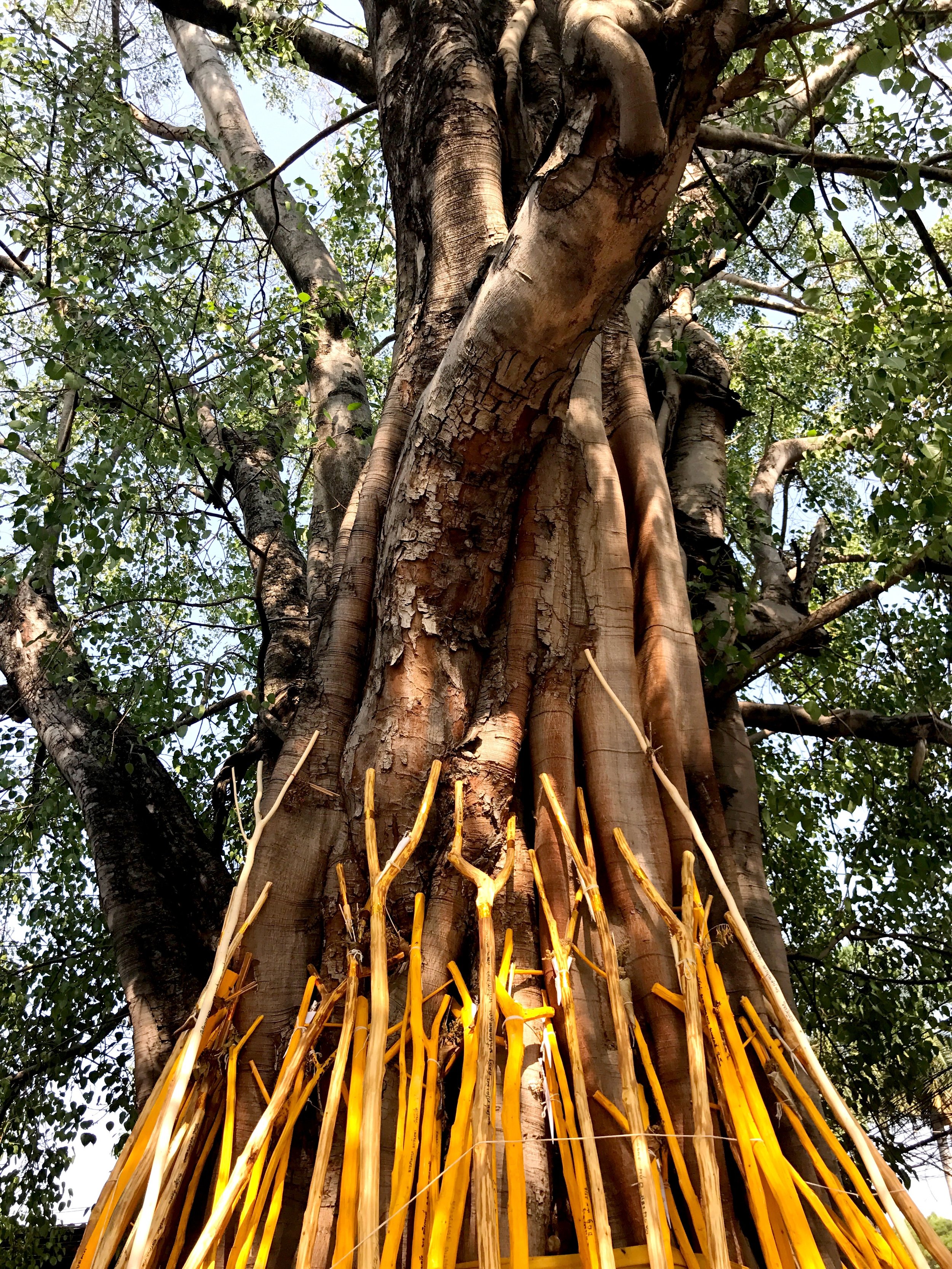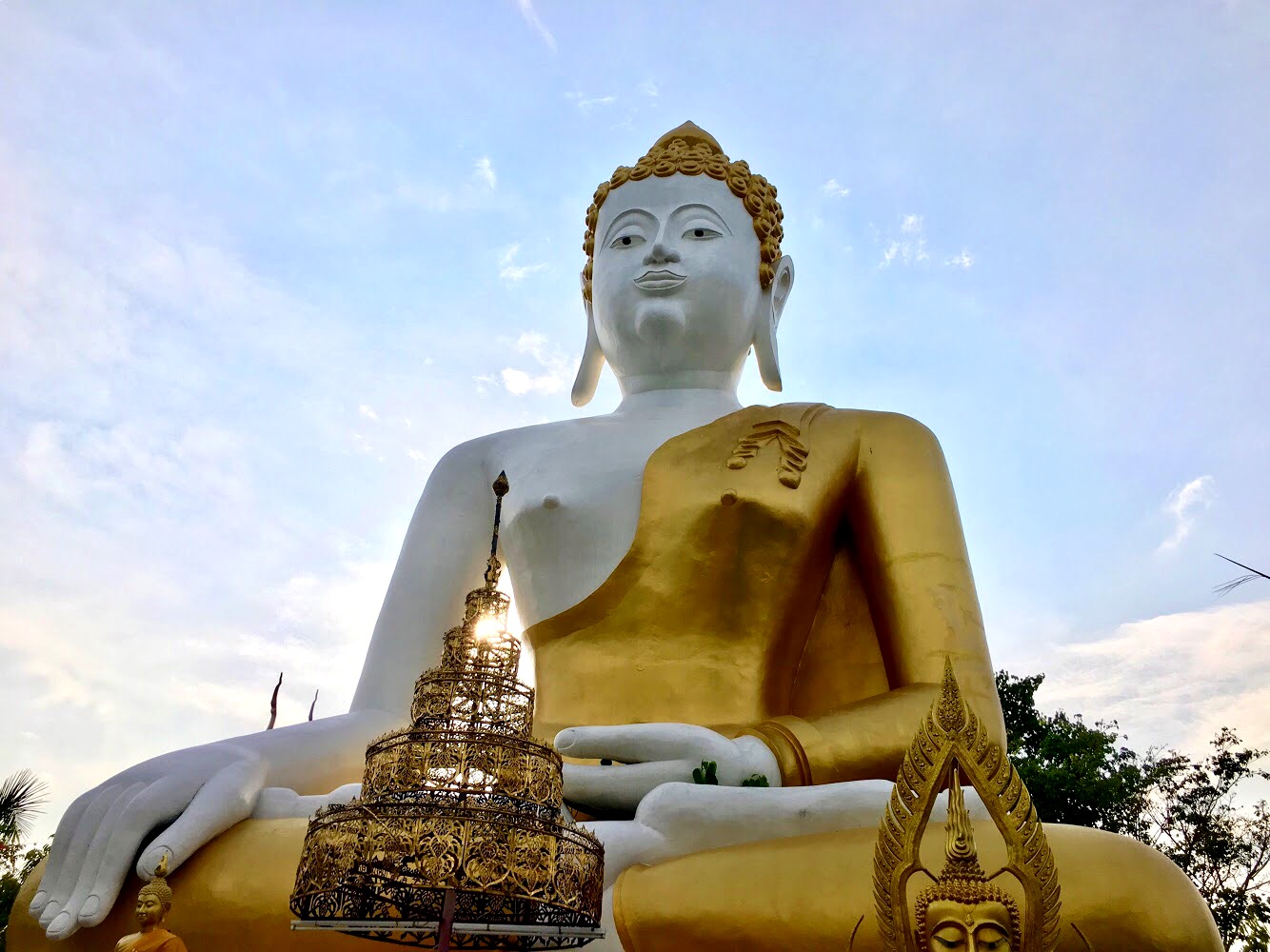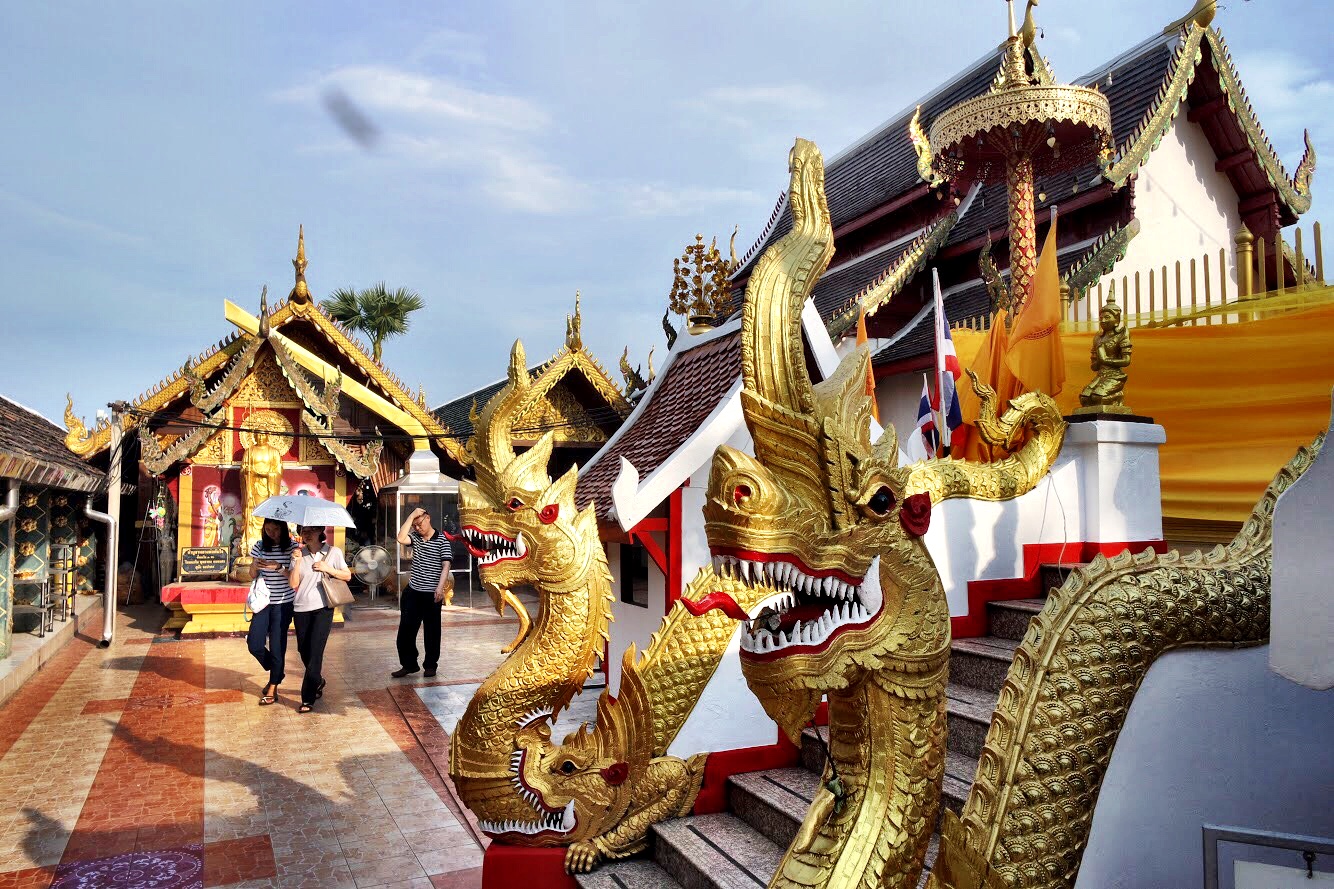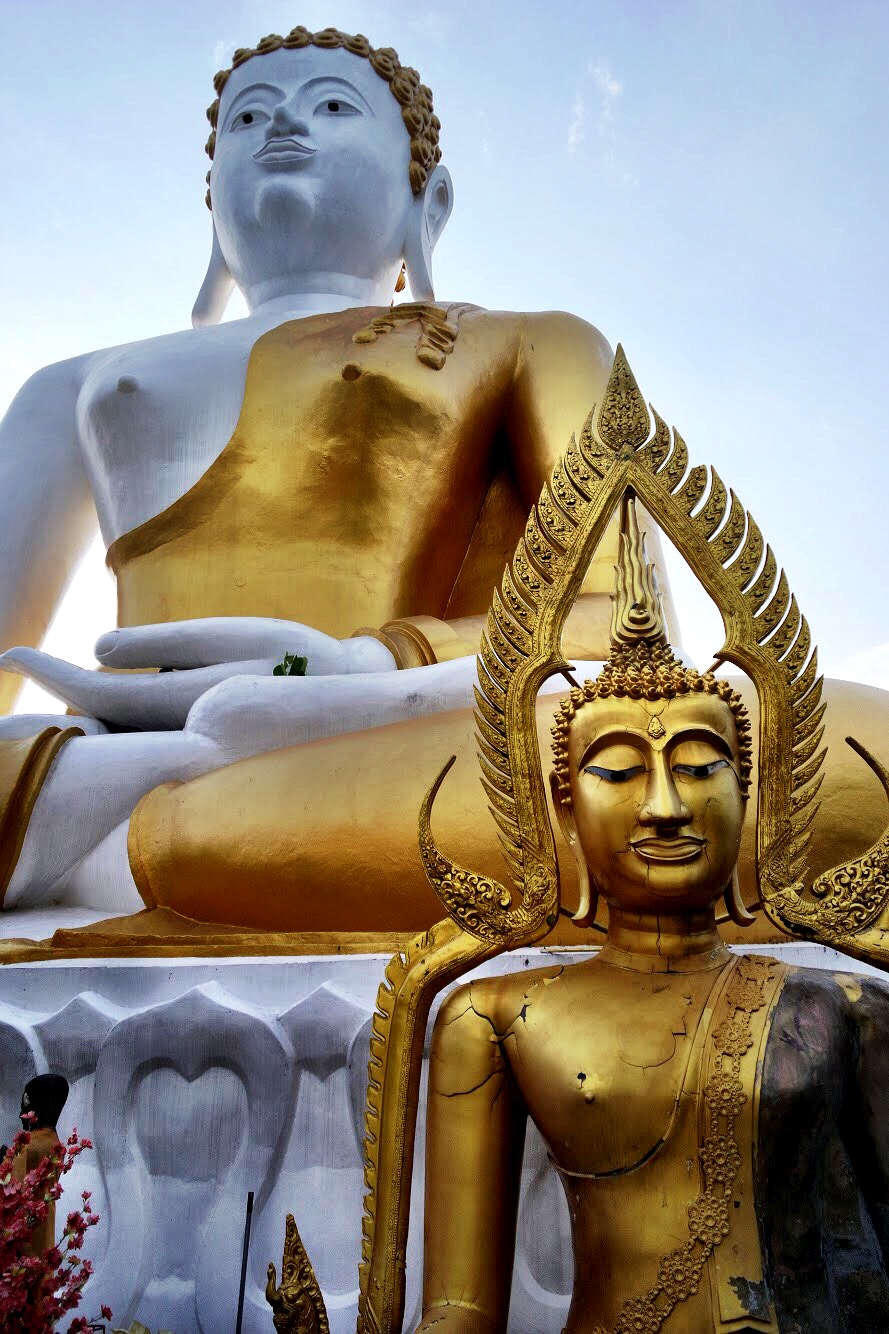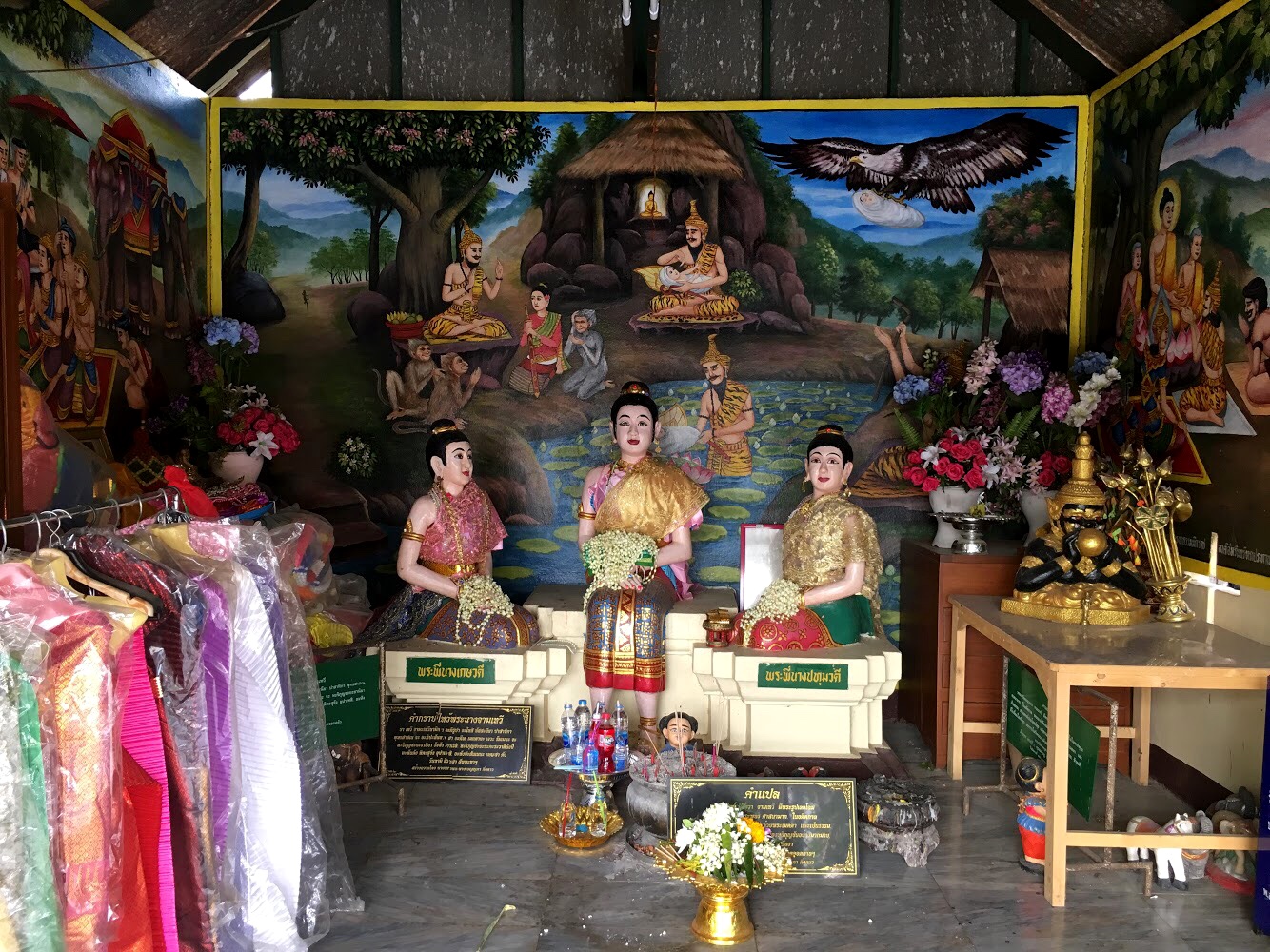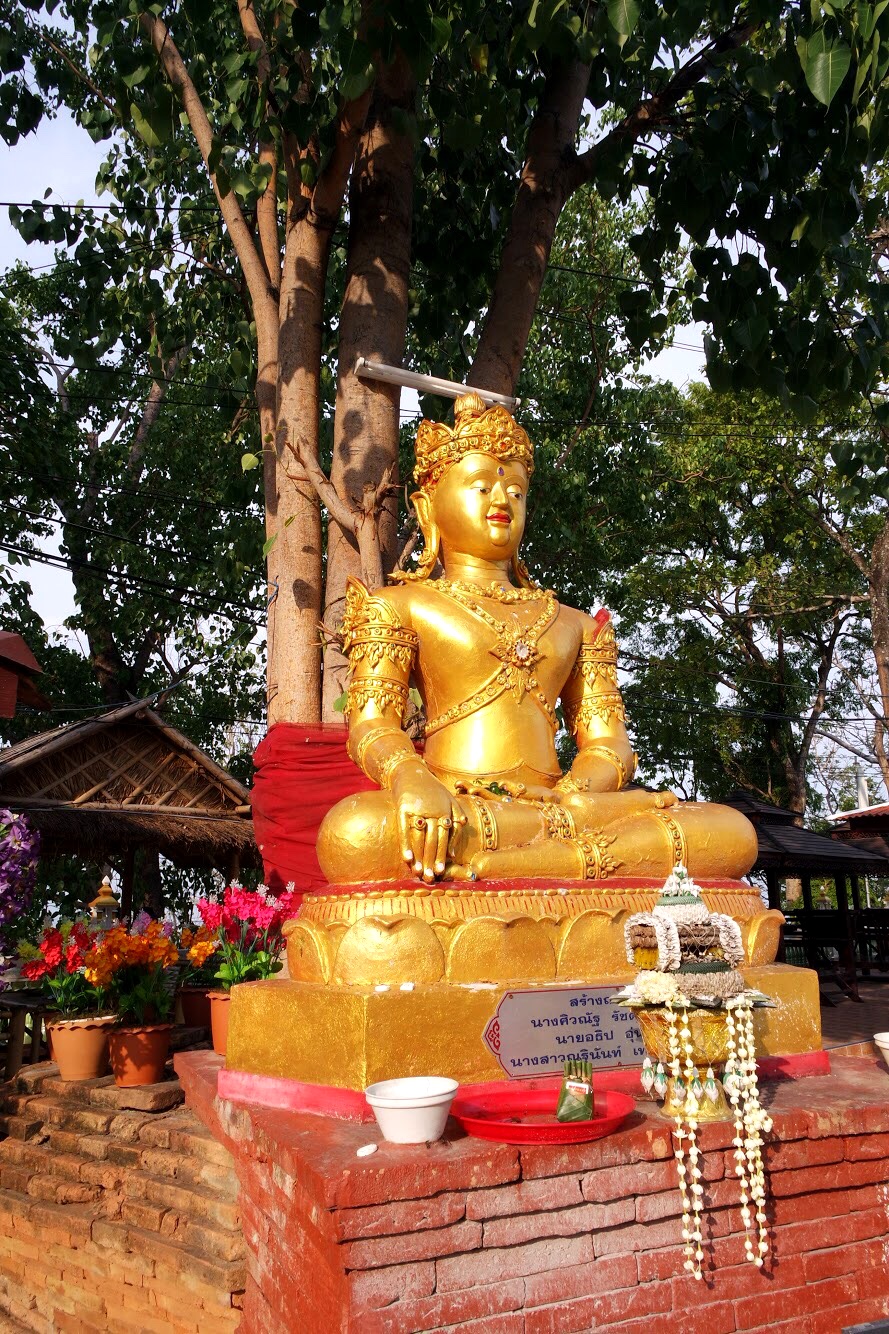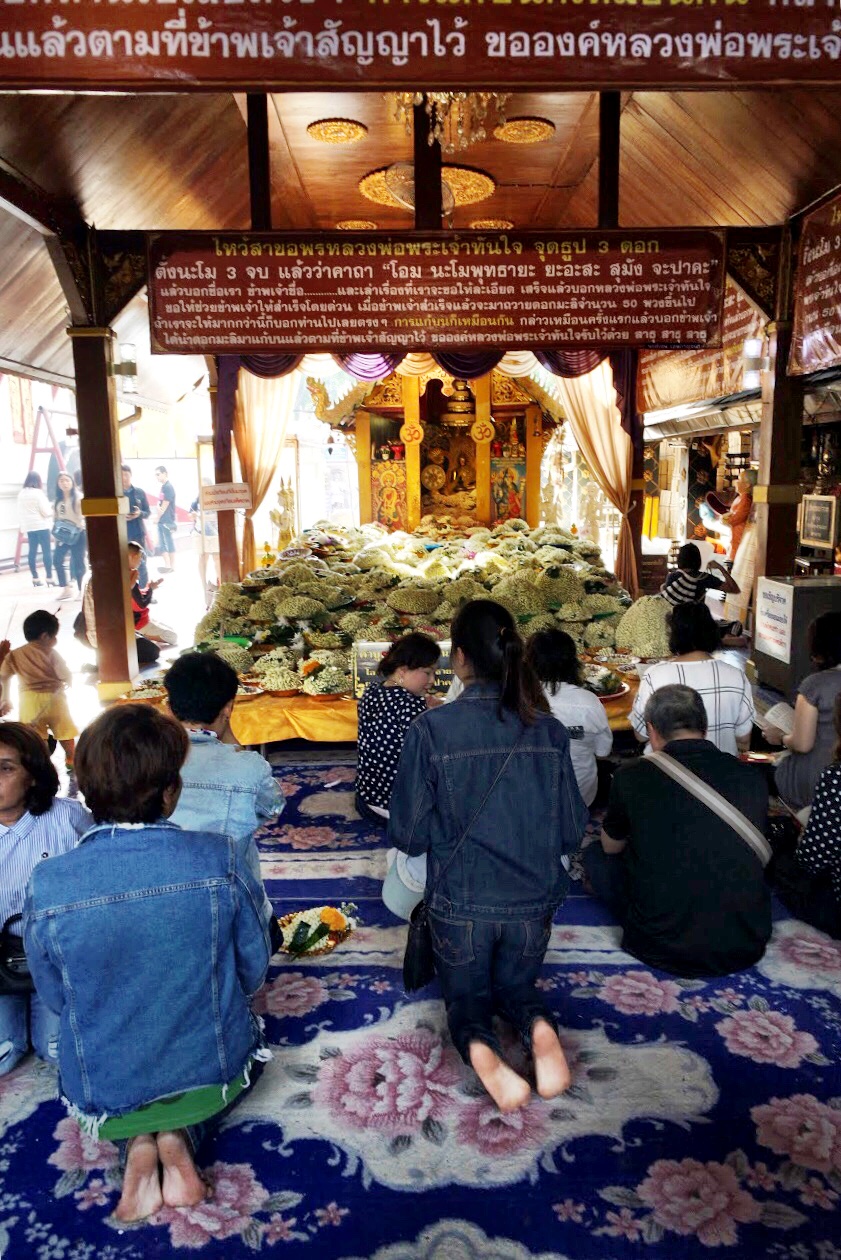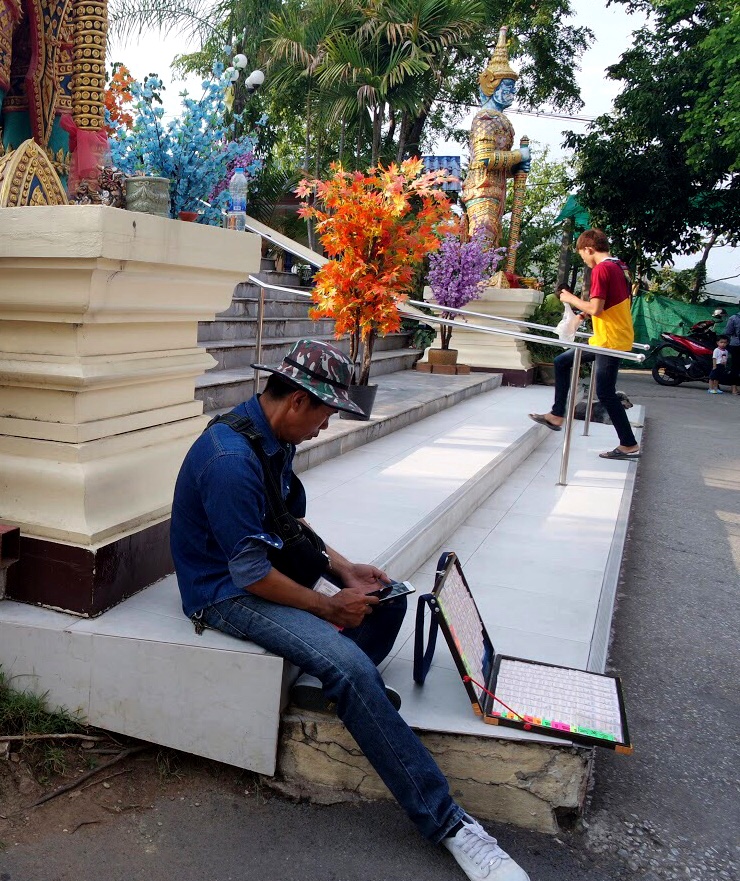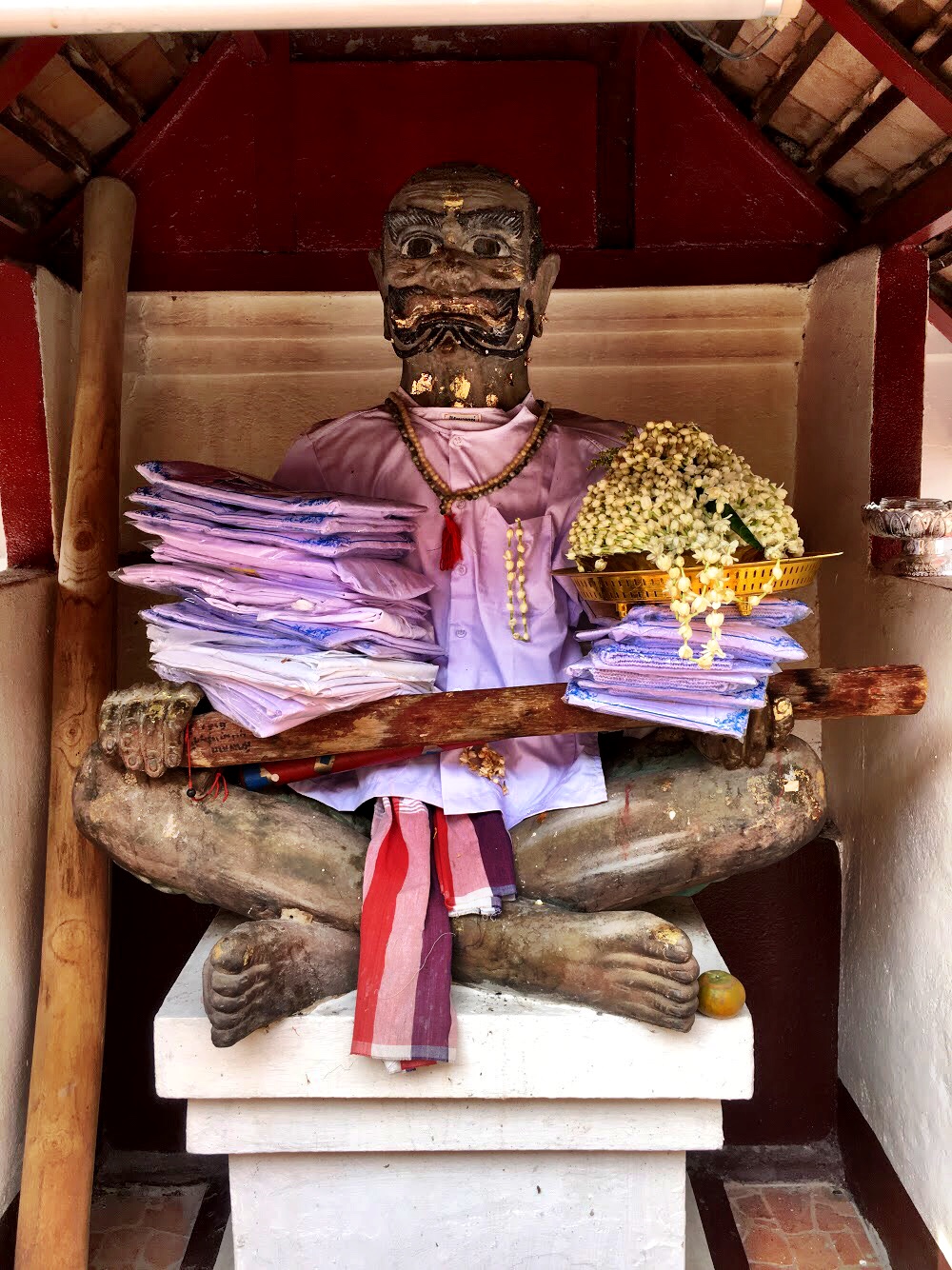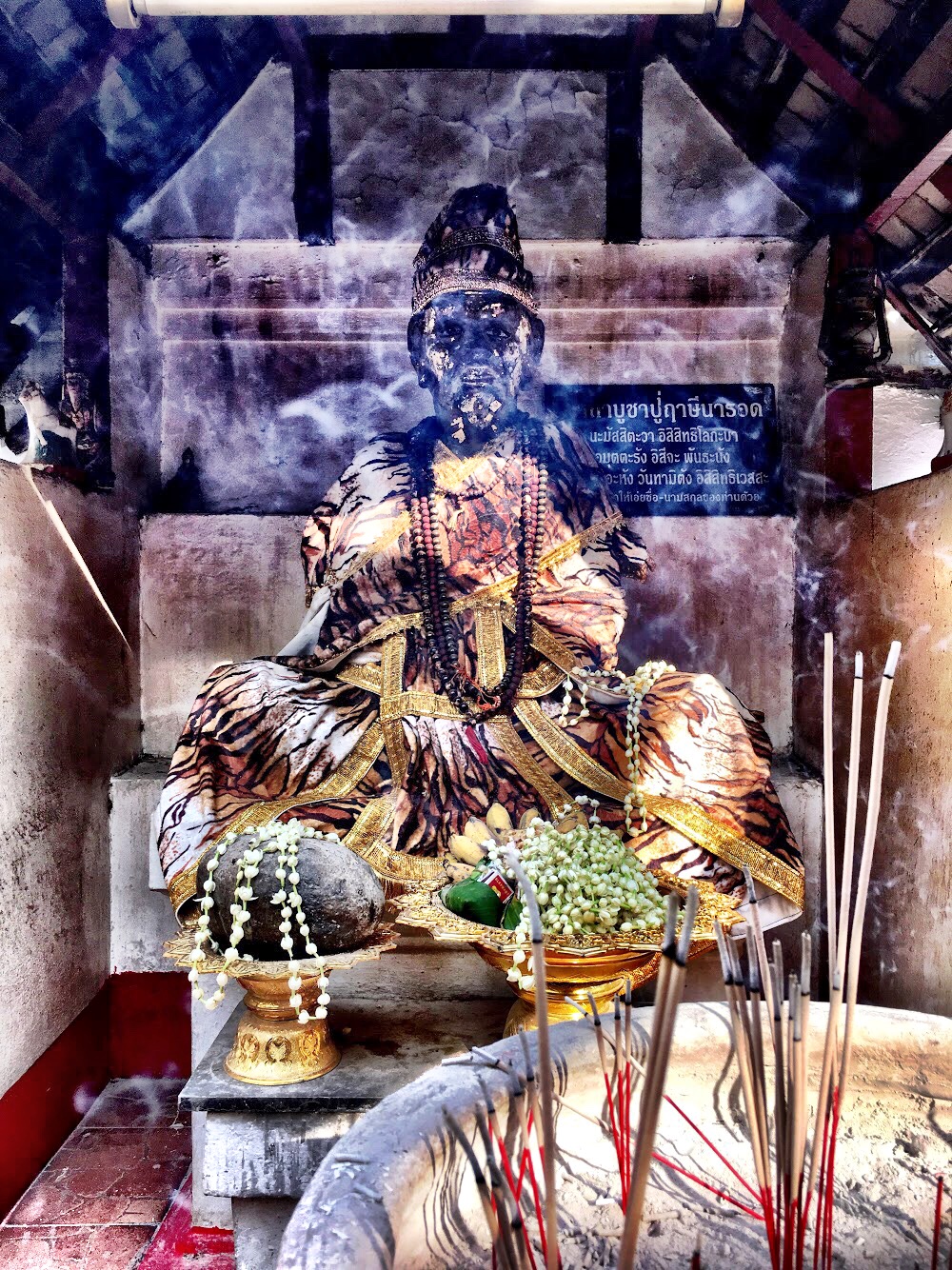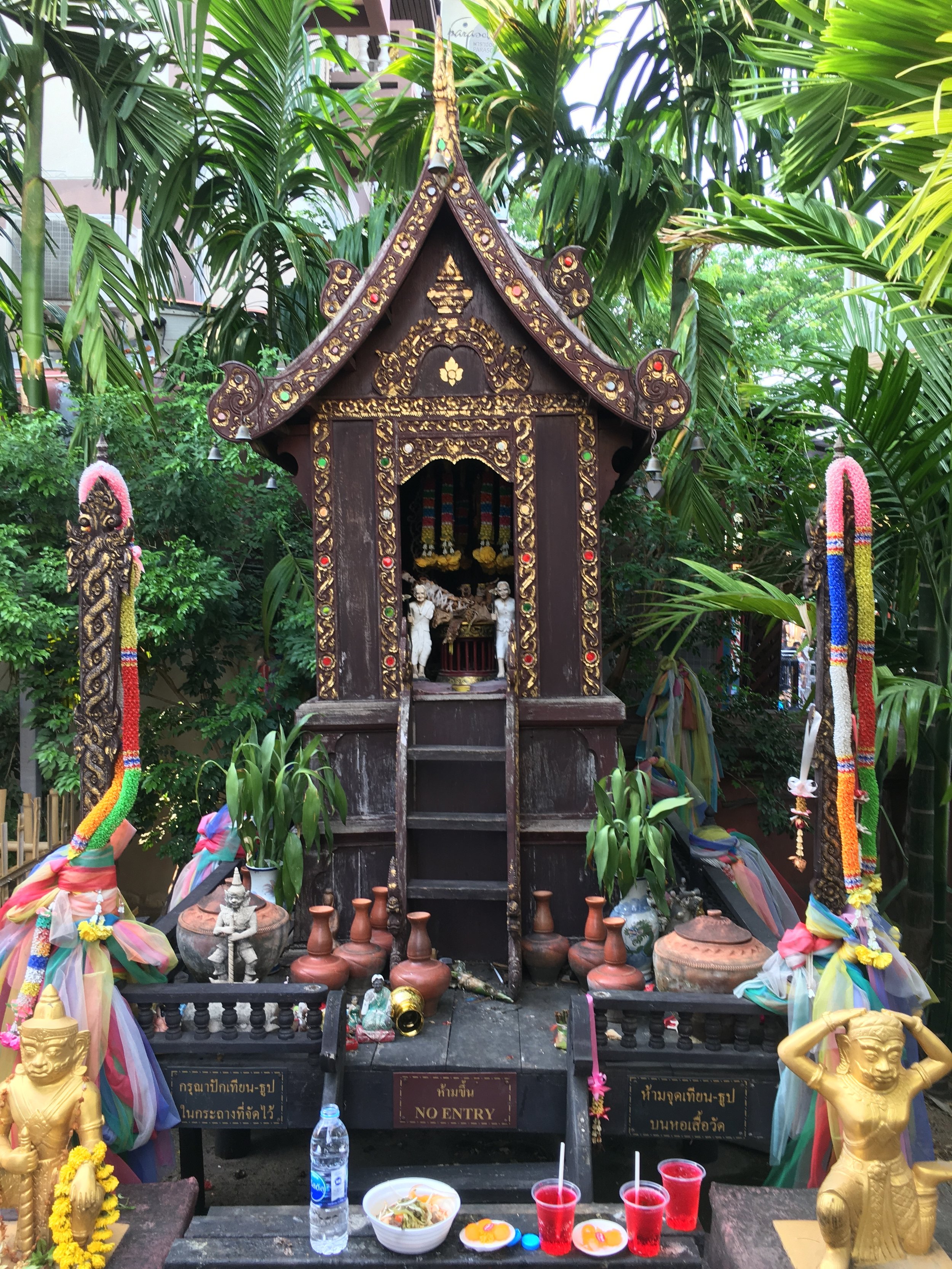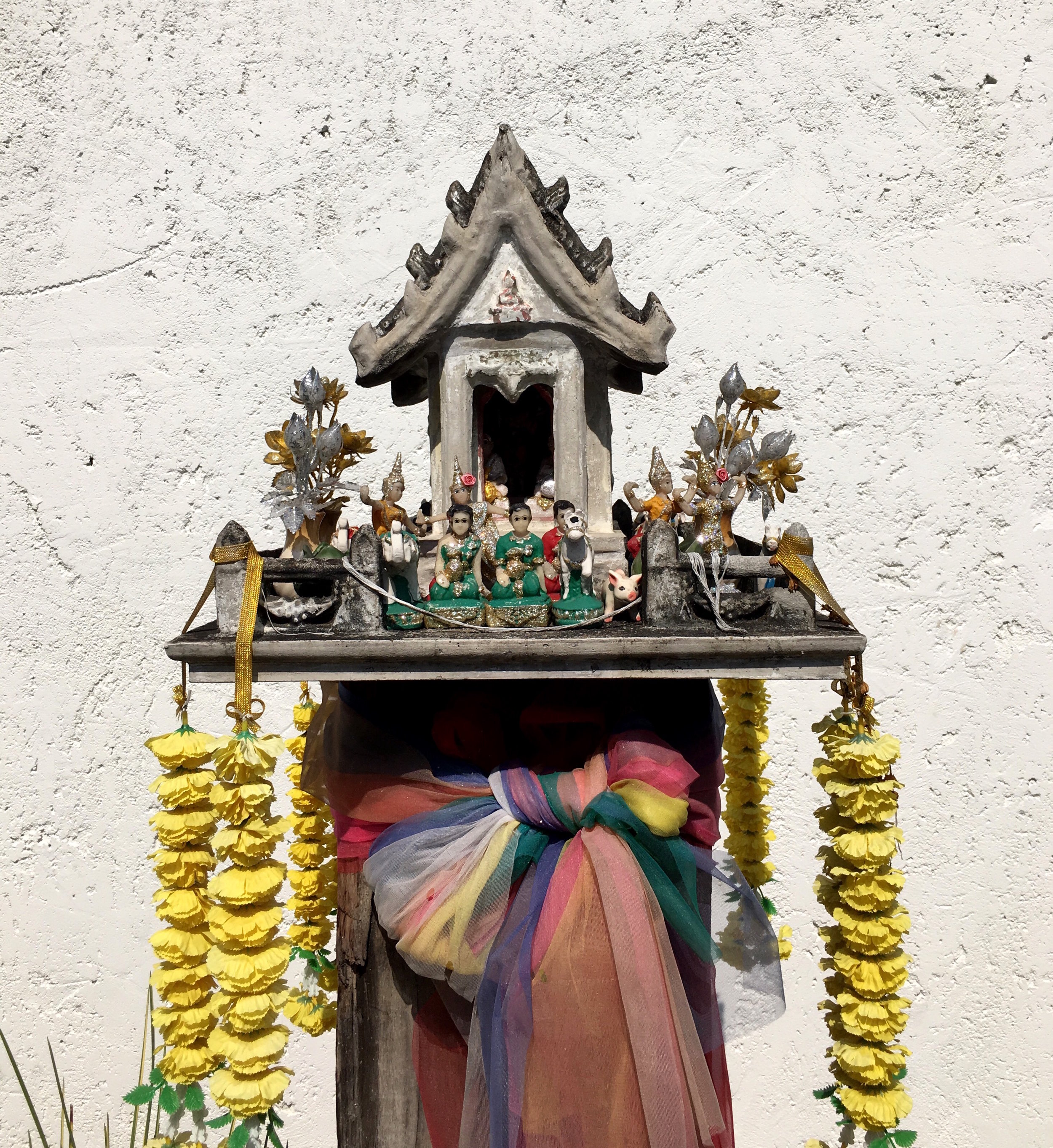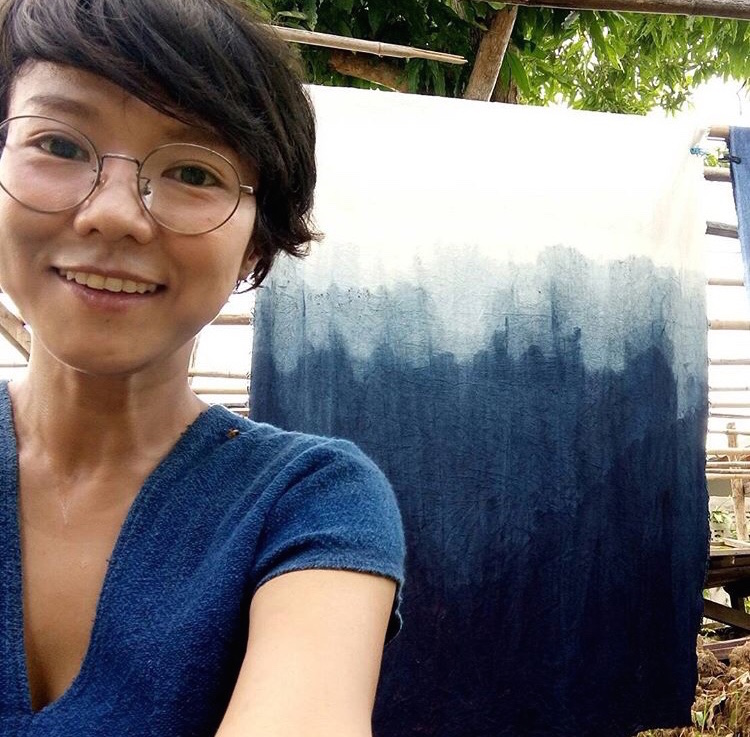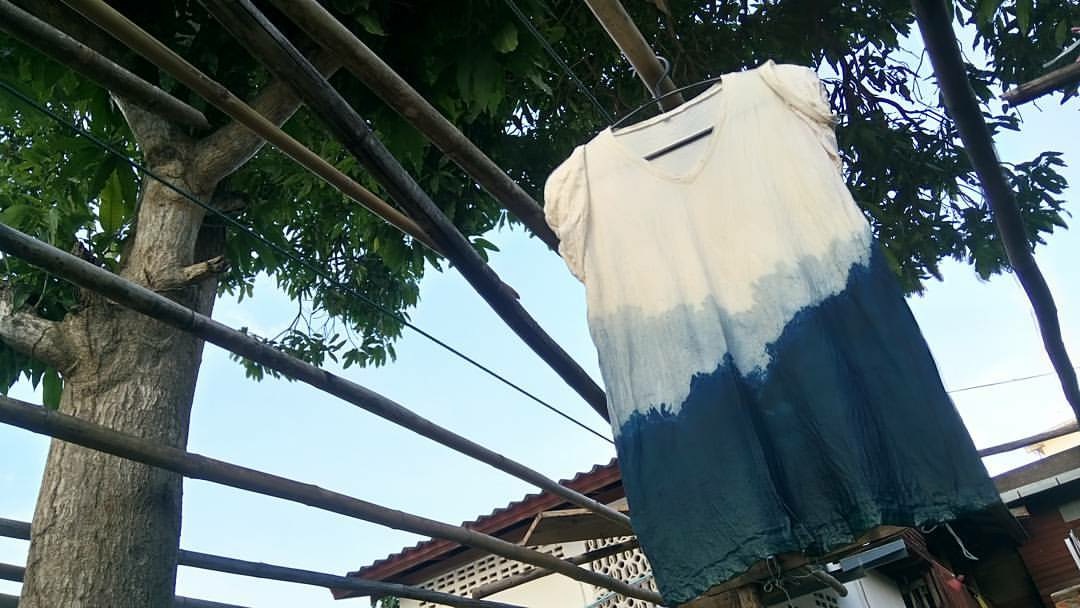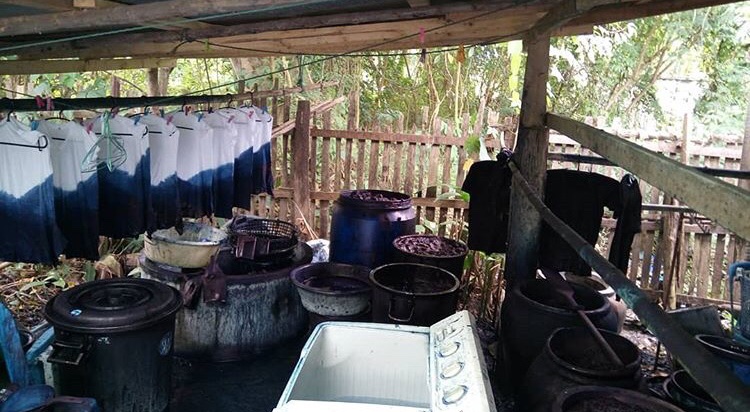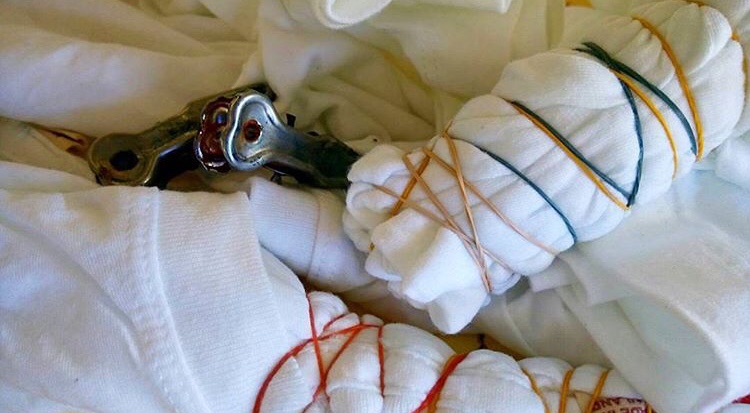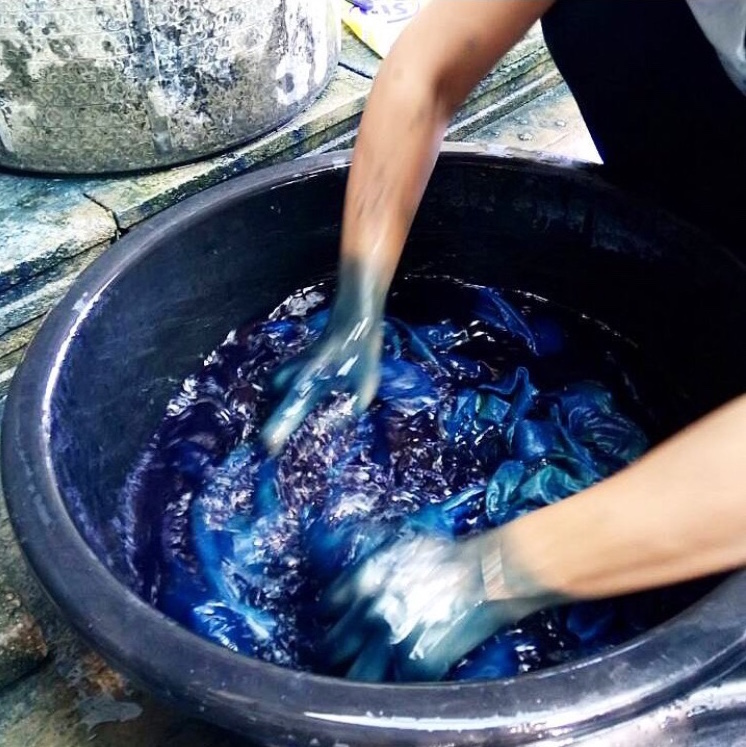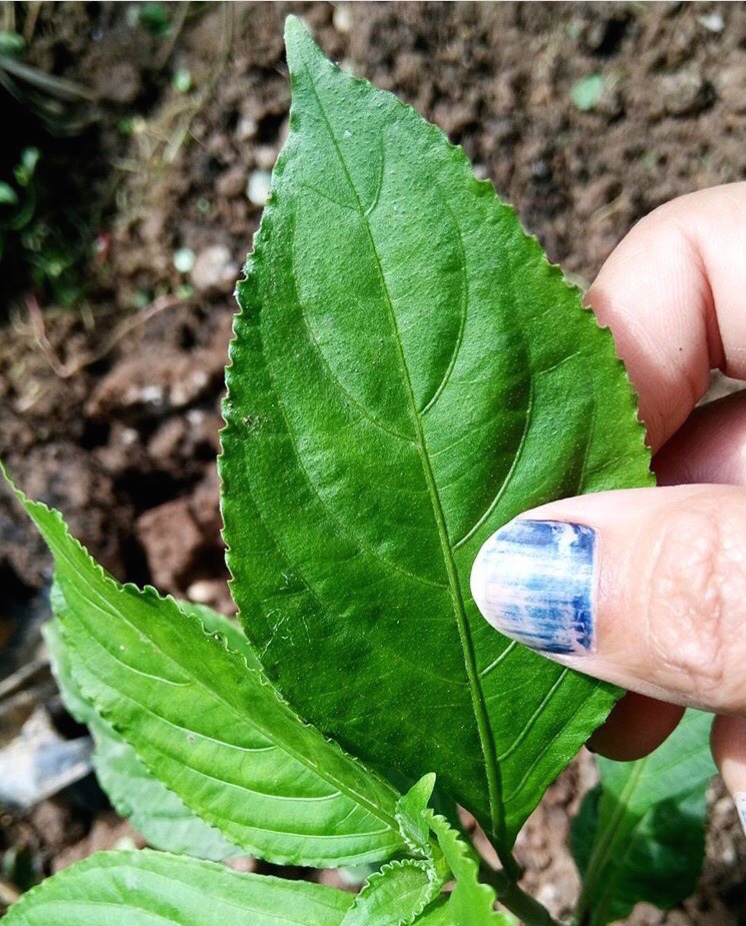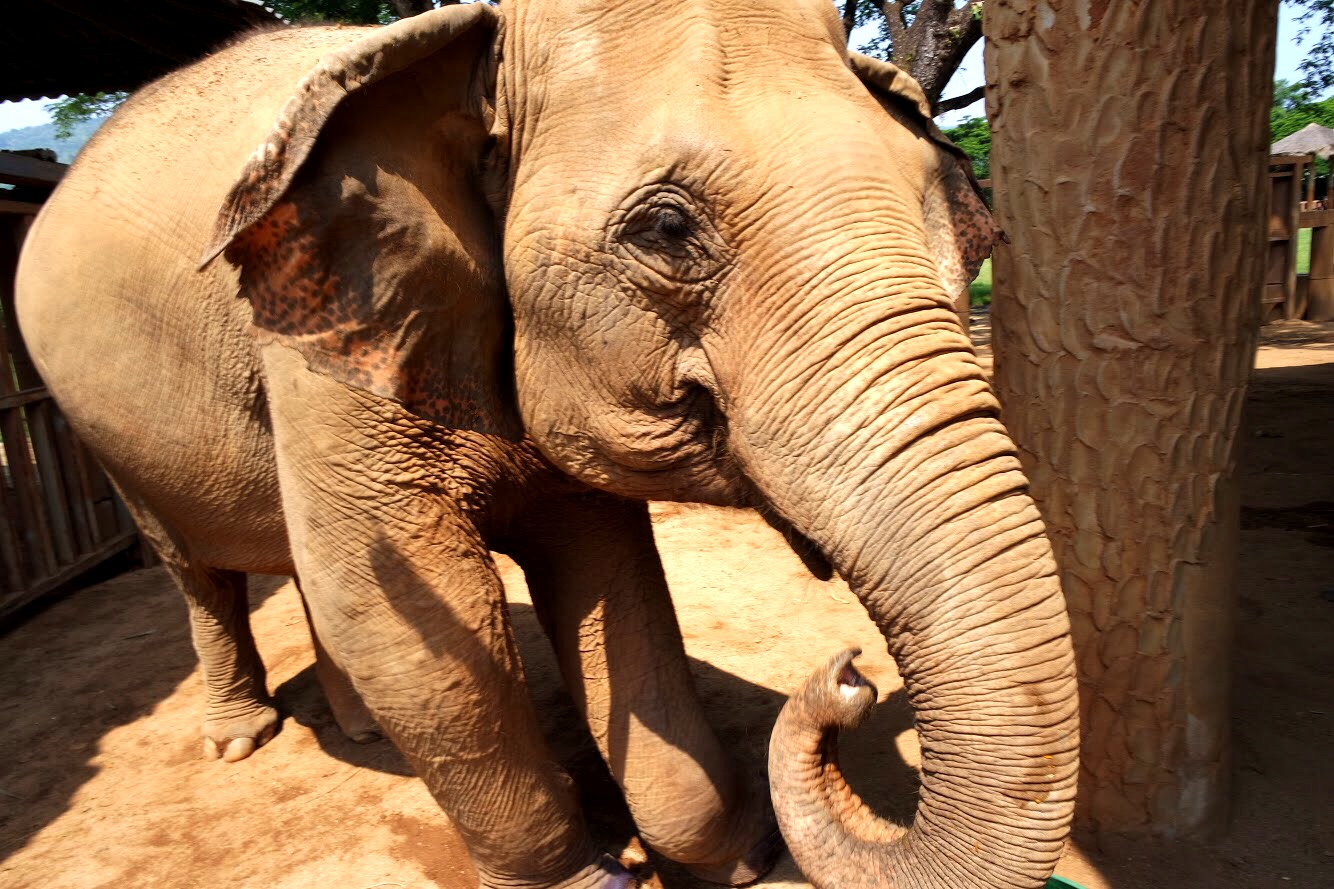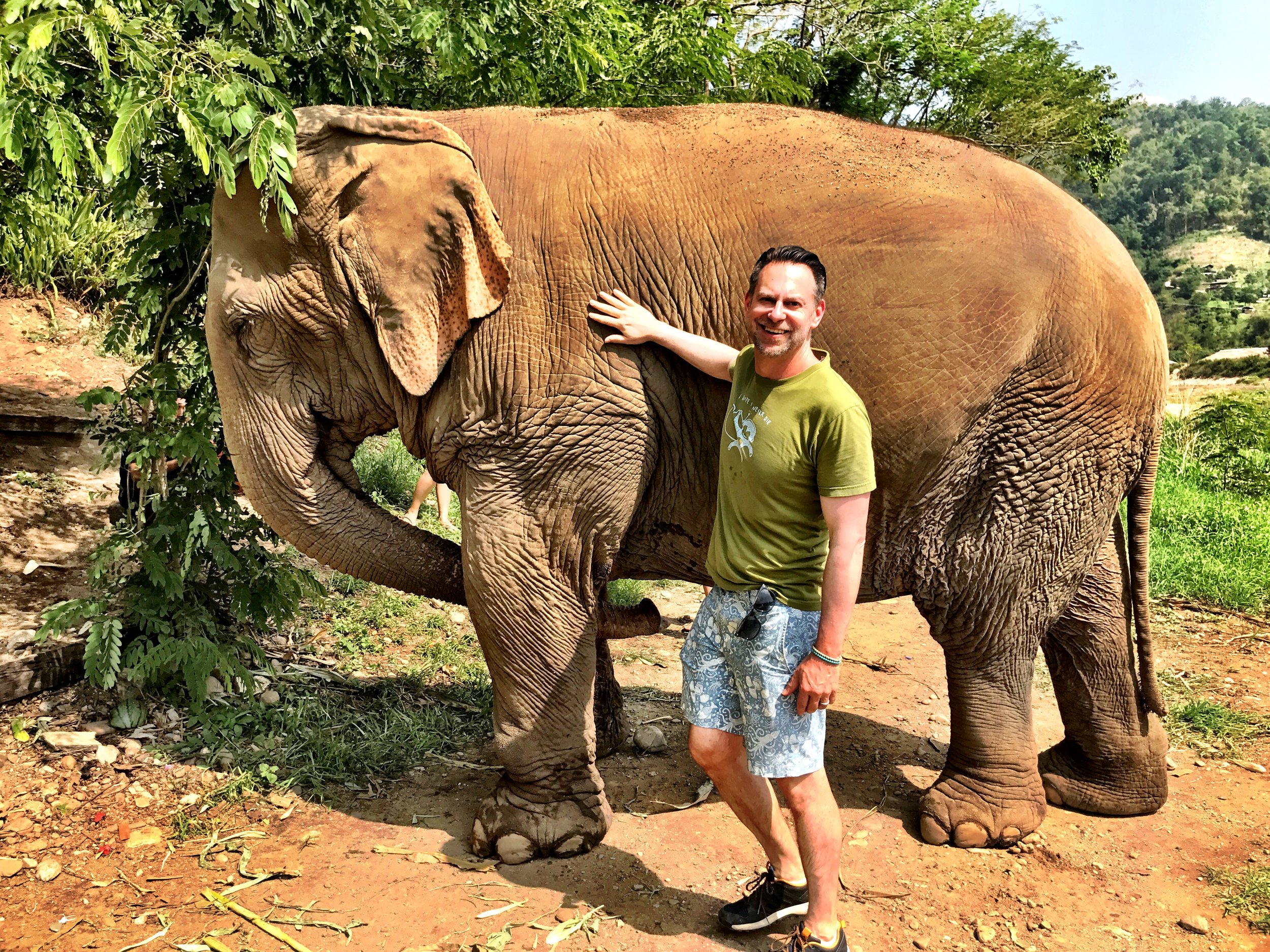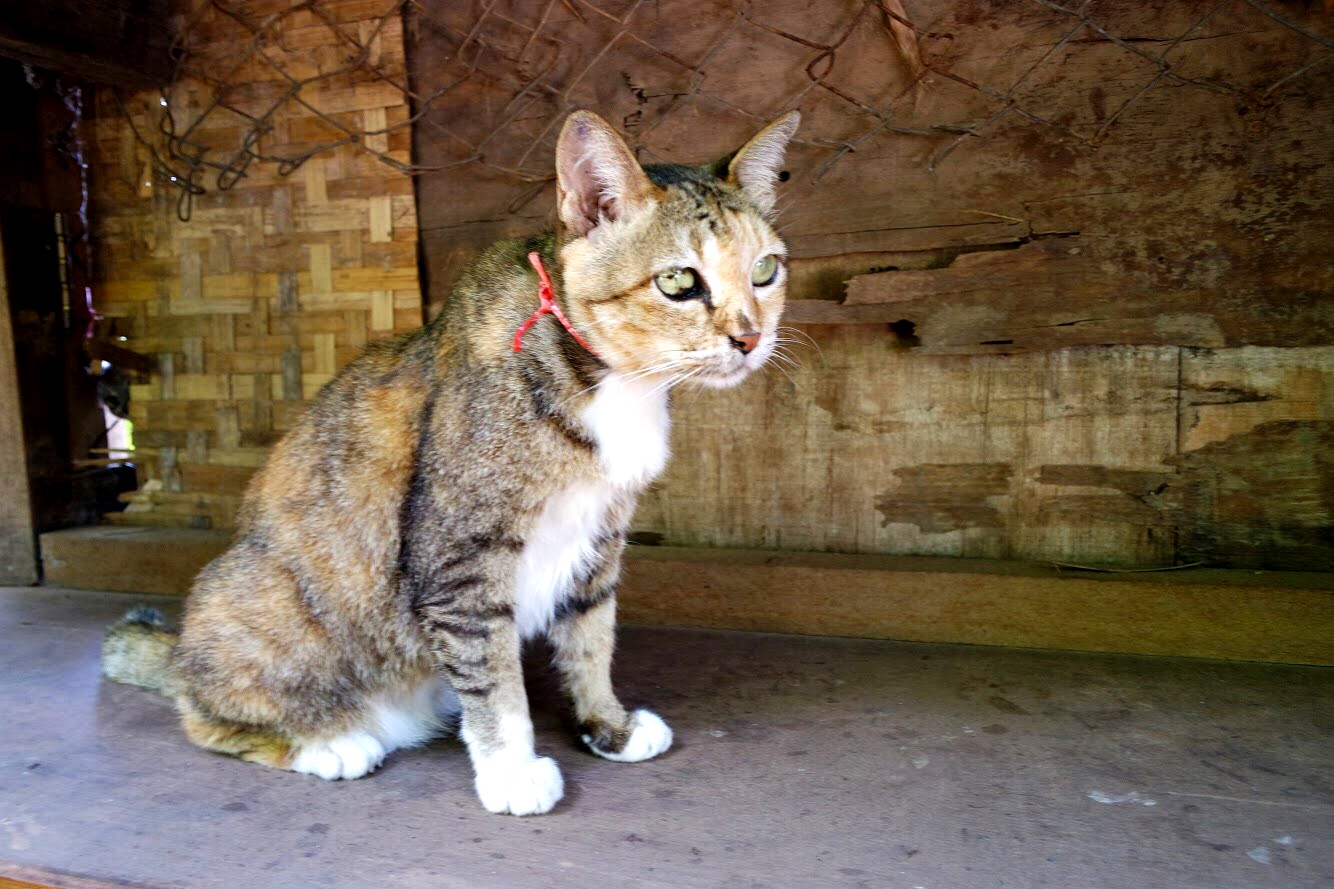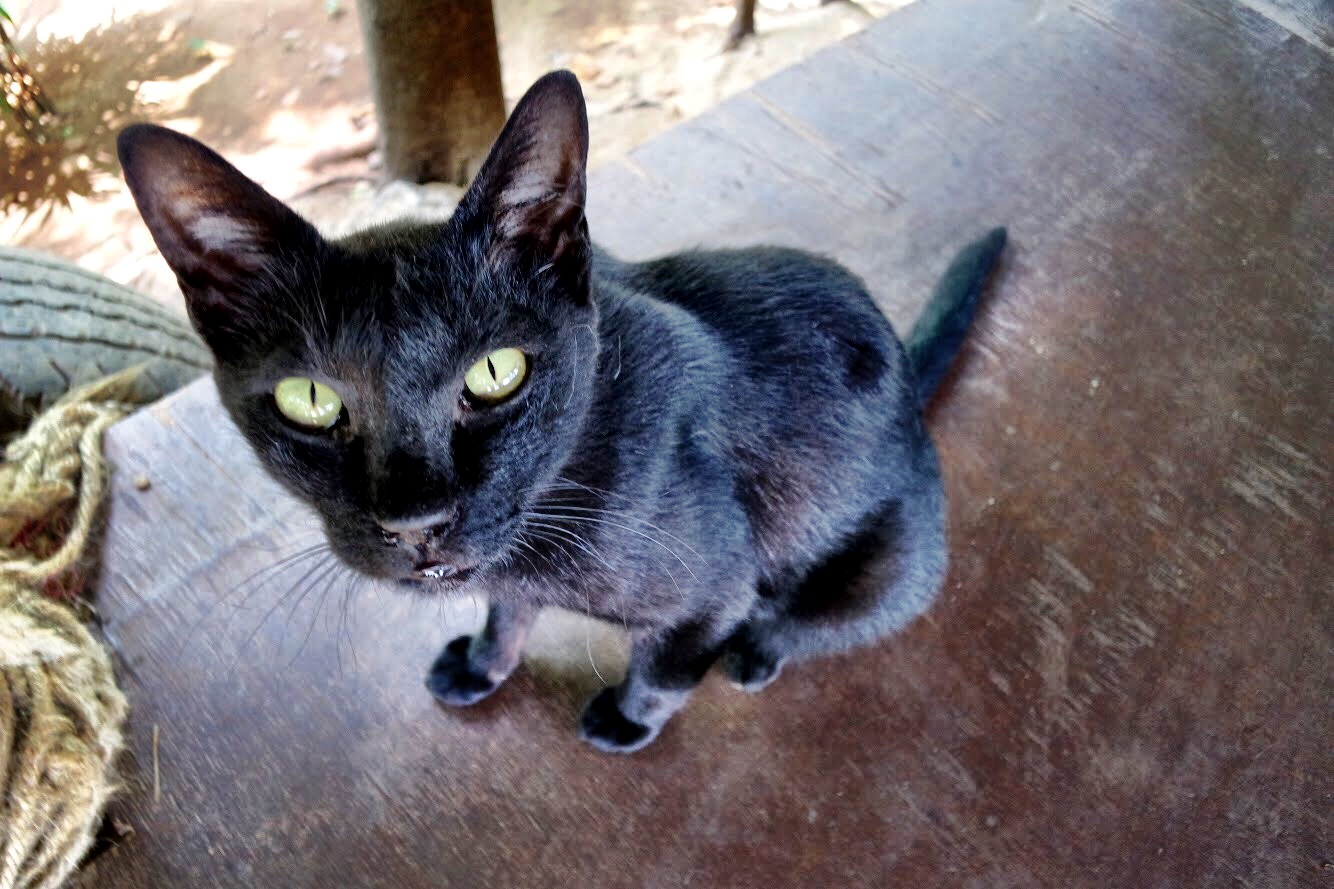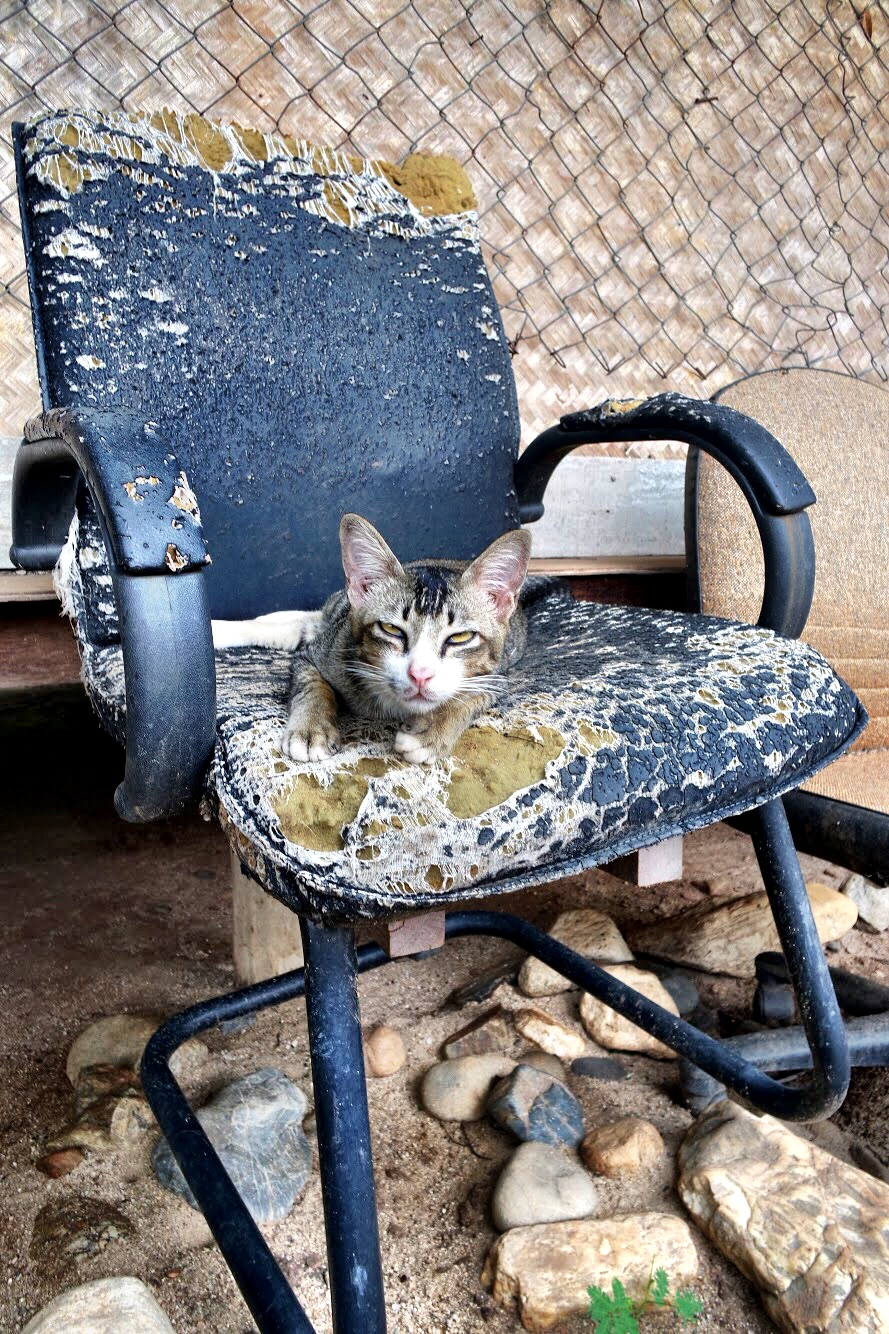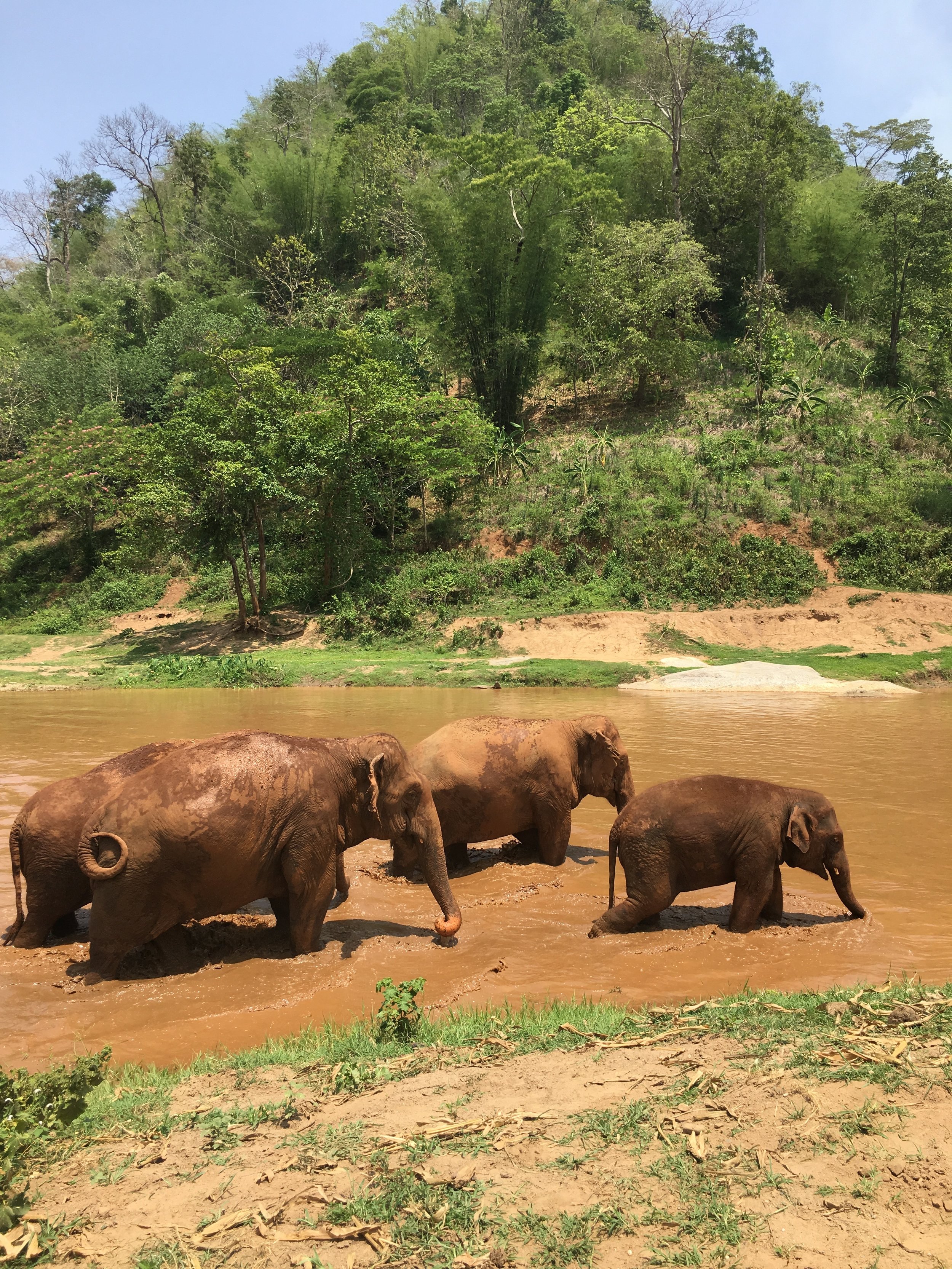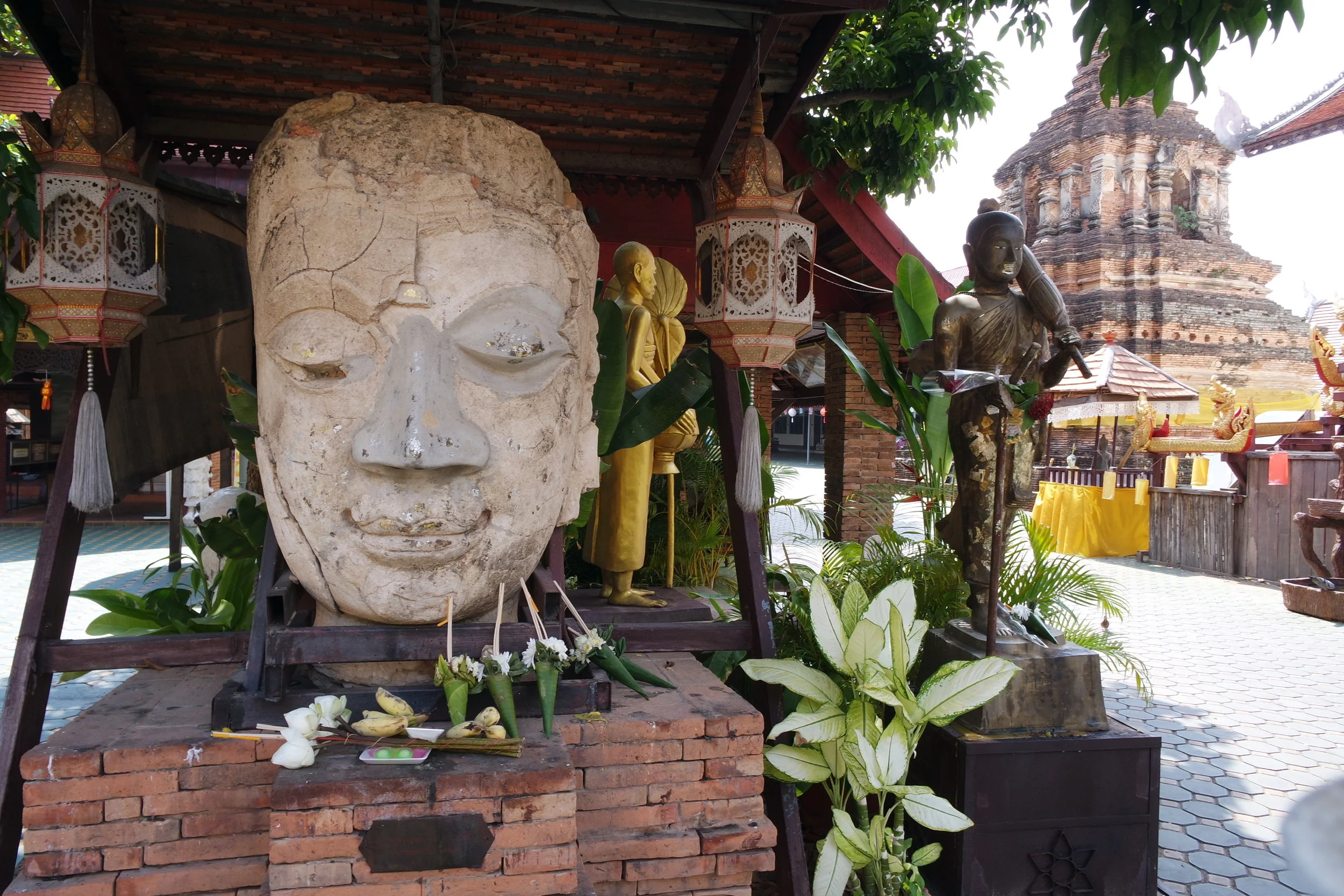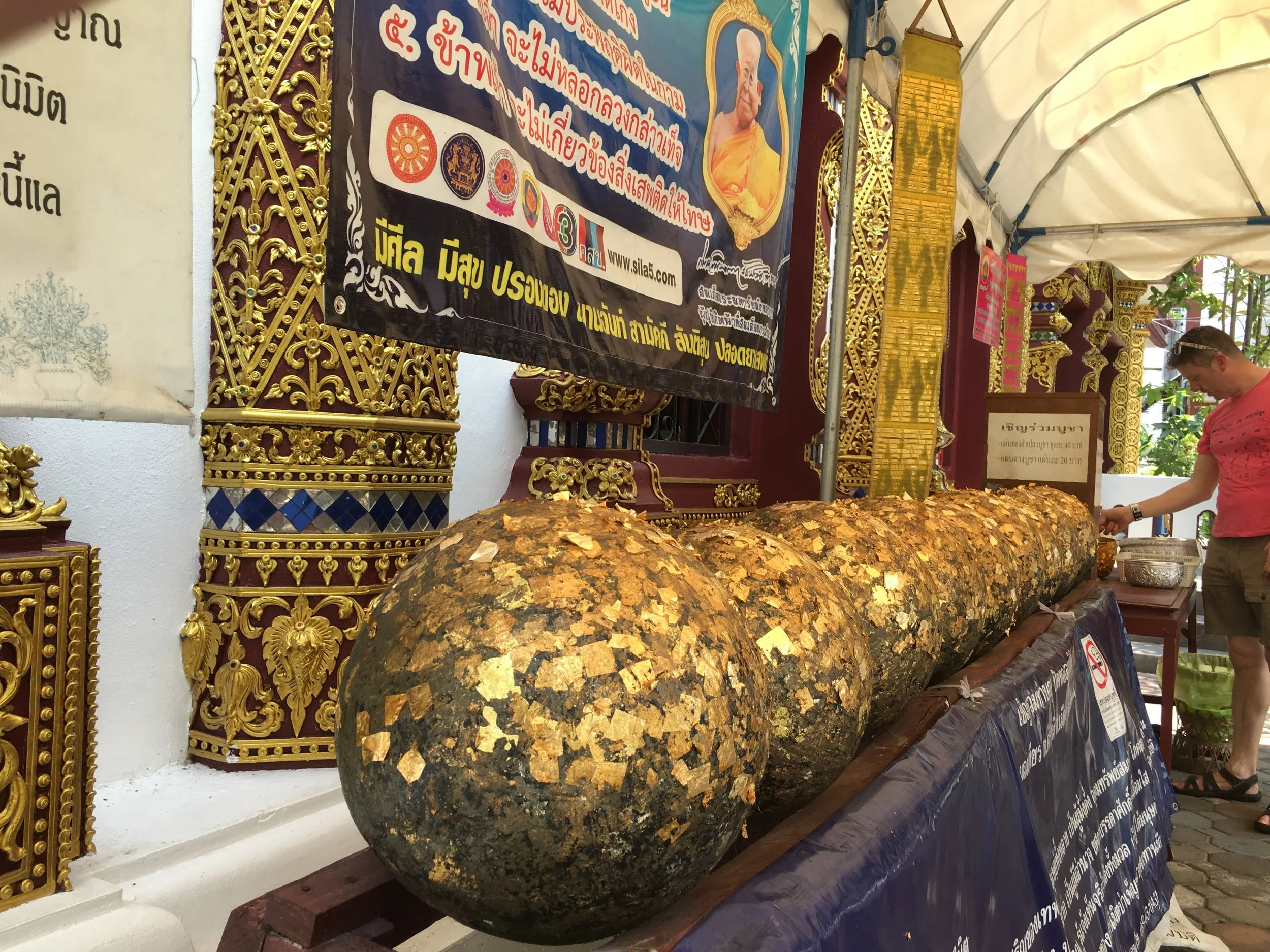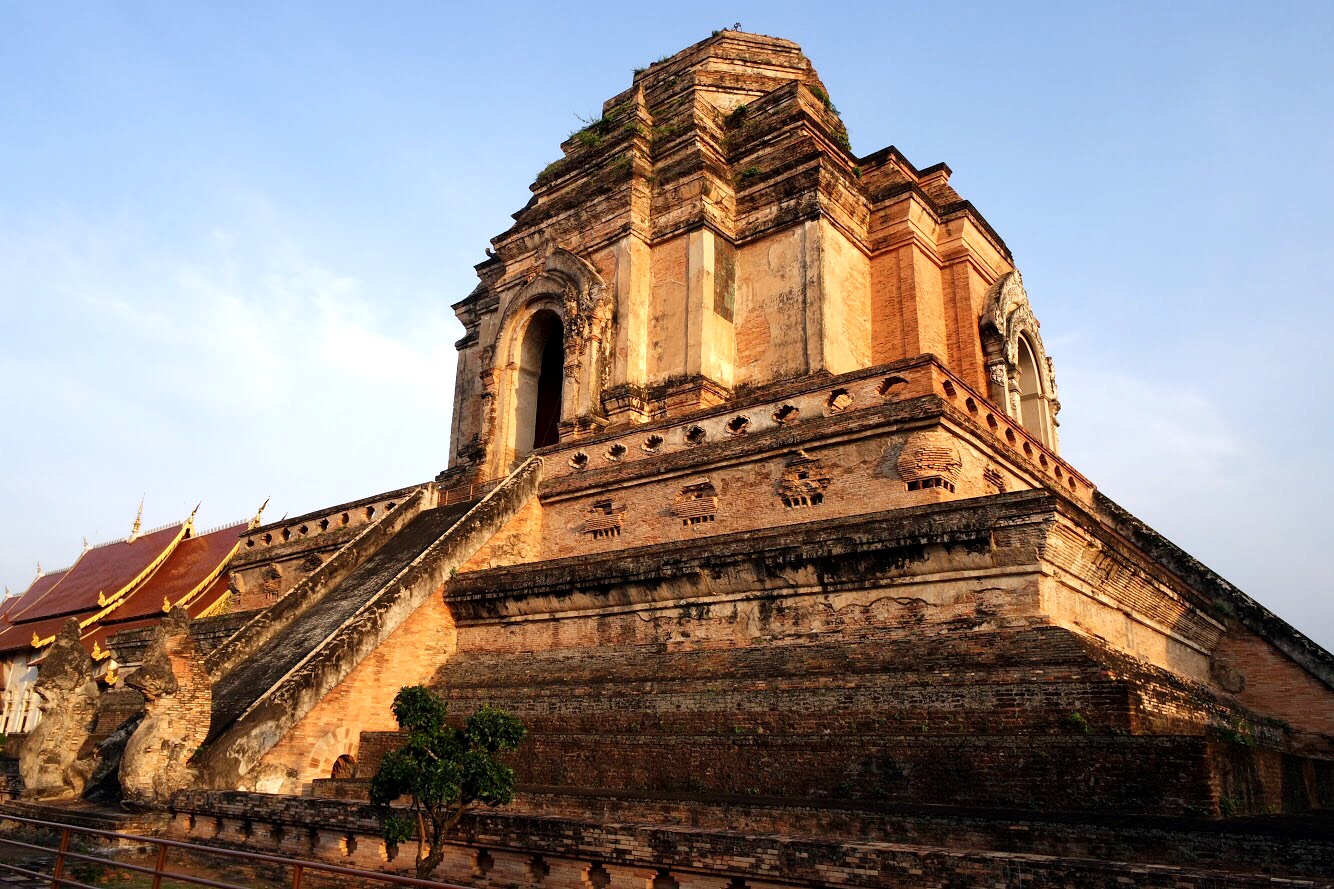Looking for things to do in Chiang Mai? Search out the different Buddhas at the Buddhist temples around the city.
A Buddha inside a niche at the chedi of Wat Buppharam
It’s said that Chiang Mai is home to 300 temples (wats in Thai). Duke and I did our best to hit them all — though after a week or so, we only crossed about a dozen off our list.
In the vein of our the Cats of Marrakech and Cats of Fès posts, I figured we could do one on the Buddhas of Chiang Mai.
“The ears are always elongated, like those kids who had spacers but took them out, only to have their stretched-out lobes flop back and forth.
The idea is that the Buddha is then able to hear all that’s needed in the world.”
Most of the Buddhas you’ll encounter at these wats are in the Chiang Saen or Lanna style from 11th and 18th centuries. At the time, Northern Thailand was part of the Lanna kingdom. The Buddhas of this second-largest city in Thailand tend to have round faces with Mona Lisa smiles.
Because Buddhist monks shave their heads, I’ve always thought of the Buddha as having set the original example. But depictions of the Buddha actually show tight curls framing his head.
His nose can be on the long and narrow side — or even a bit pig-like (at least when seen from below).
The ears are always elongated, like those kids who had spacers but took them out, only to have their stretched-out lobes flop back and forth. You can tell that I’m not the biggest fan of this look, but the idea is that the Buddha is then able to hear all that’s needed in the world.
His torso tends to be on the slightly plump side, tapering to a narrower waist.
In some depictions, the Buddha is bare-chested and sometimes draped in a saffron cloth. Other Buddhas have this one-shouldered robe as part of their design.
Now and then, especially on smaller Buddhas that aren’t the central focus of a viharn (the main area of worship at a temple), you’ll see Buddhas covered in gold leaf.
Wat Bupphararam
Buddha Meaning for Each Day of the Week
Statues of the Buddha feature various poses, eight of which are tied to days of the week:
Sunday: The Open-Eye Posture, standing, as he did under the bodhi tree, for seven days after reaching enlightenment, contemplating the suffering of all living things.
Monday: Preventing Calamities, standing, causing torrential rain to fall upon the city of Vesali, which was invaded by devils that feasted on the living and the dead.
Tuesday: The Reclining Buddha, humbling a proud giant named Asurindarahu.
Wednesday: This day is divided into two poses, depending on the time of day.
Before noon: Holding an Alms Bowl, standing, collecting the food for the day — a practice still performed by Buddhist monks.
After noon: Resting With a Monkey and an Elephant, seated, seeking refuge from arguing monks in the Palilayaka, or Palelai, Forest. The monkey offers the Buddha a beehive, while the elephant presents a water pot.
Thursday: Meditation, sitting in a yoga posture, when the Buddha vowed not to leave his spot on the grass until he reached enlightenment.
Friday: Contemplation, standing, under the banyan tree, wondering how the heck he’ll explain his teachings, or dharma, about the cause of suffering.
Saturday: Seated Under the Naga Hood, meditating and protected from rain by Mucalinda, the seven-headed King of the Naga.
Wat Doi Suthep
As the central image in a wat, more often than not, the Buddha is sitting cross-legged, one leg on top of the other, with one hand in his lap, palm upward, and the other draped downward over his leg. This is the Calling the Earth to Witness position, which symbolized the Buddha’s moment of enlightenment.
Some of the Buddhas are standing, and you’ll also find a few Reclining Buddhas, which I personally like to call Sleepy-time Buddhas.
Around the 16th century, the statues of the Buddha were made of a thin alloy, though some were even cast with gold.
Here’s a sampling of the Buddhas we found around town. –Wally
Wat Buppharam
Wat Buppharam
Wat Buppharam
Wat Buppharam
Wat Chedi Luang
Wat Chedi Luang
Wat Chedi Luang
Wat Doi Kham
Wat Doi Suthep
Wat Doi Suthep
Wat Upakut
Wat Upakut
Wat Jet Lin
Wat Kuan Kama
Wat Lok Molee
Wat Palad
Wat Rajamontean
Wat Sri Suphan
Wat Sri Suphan
Wat Sri Suphan

